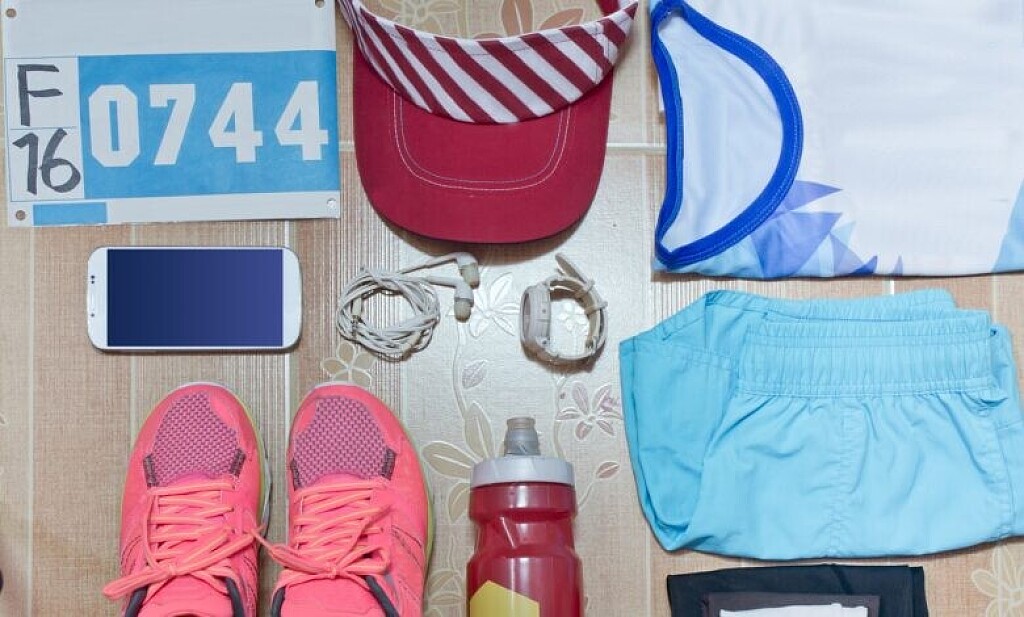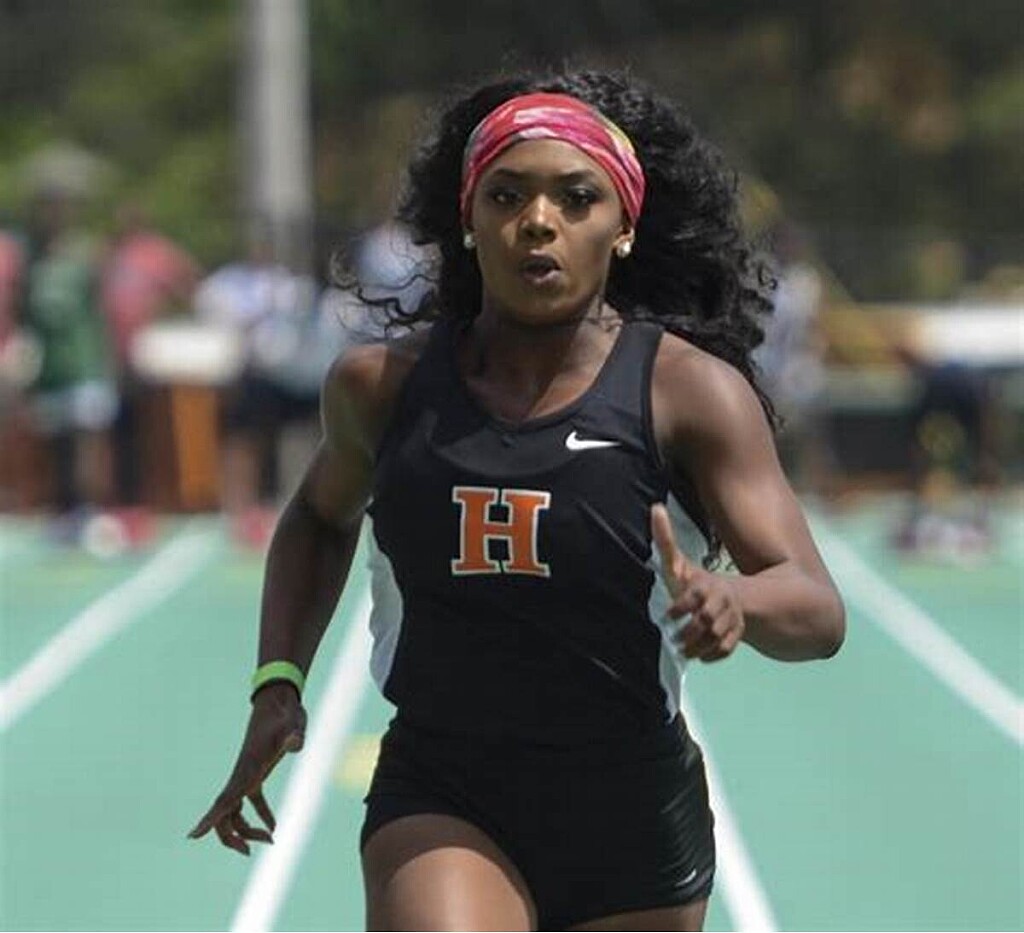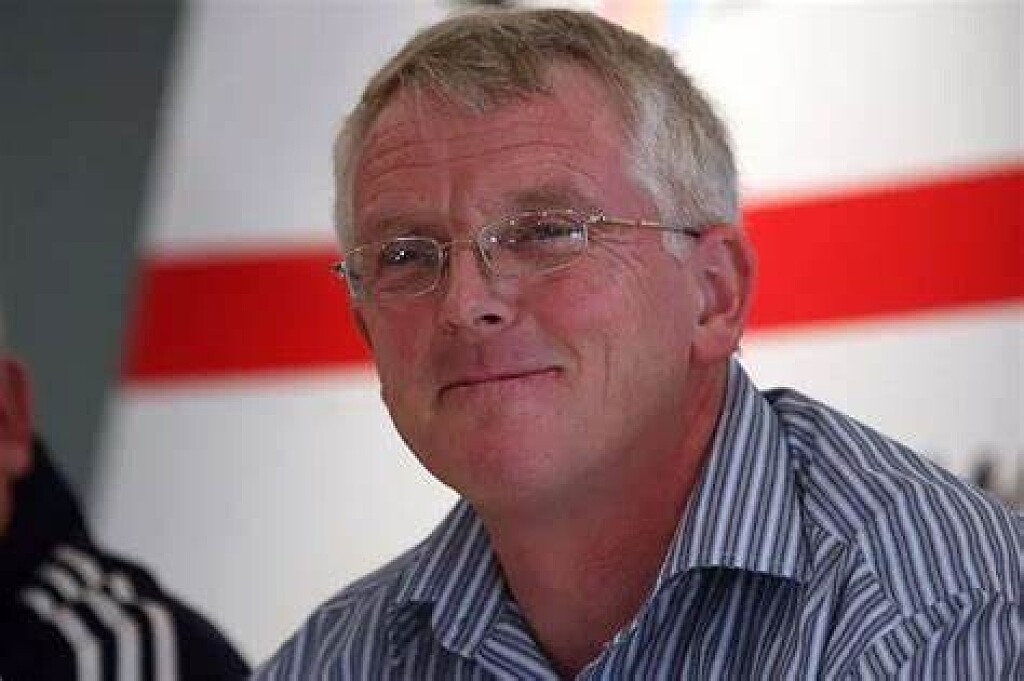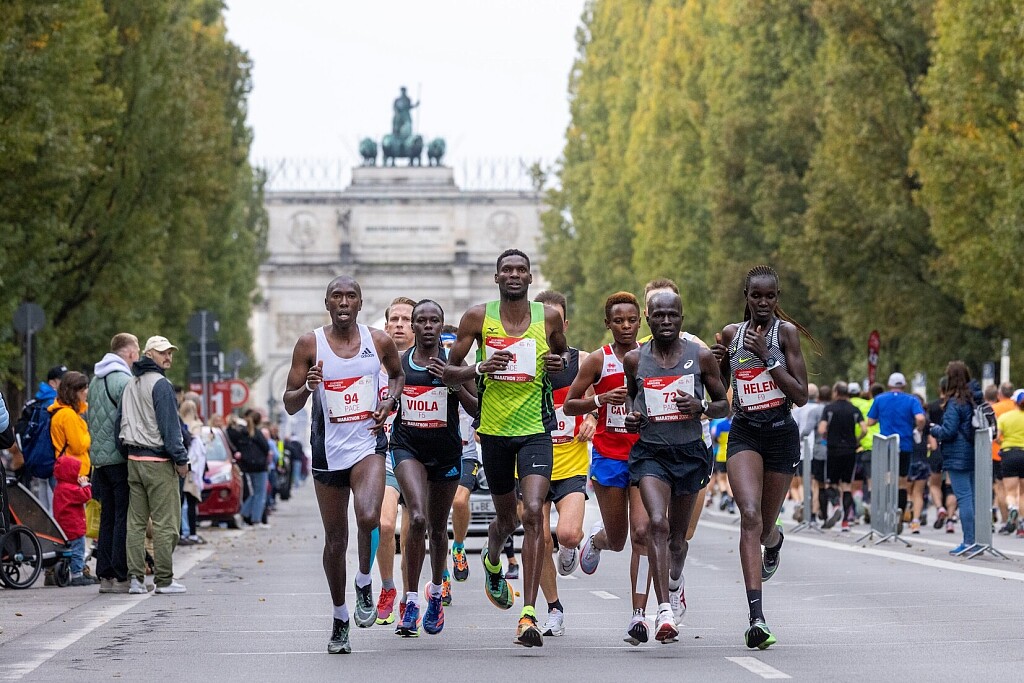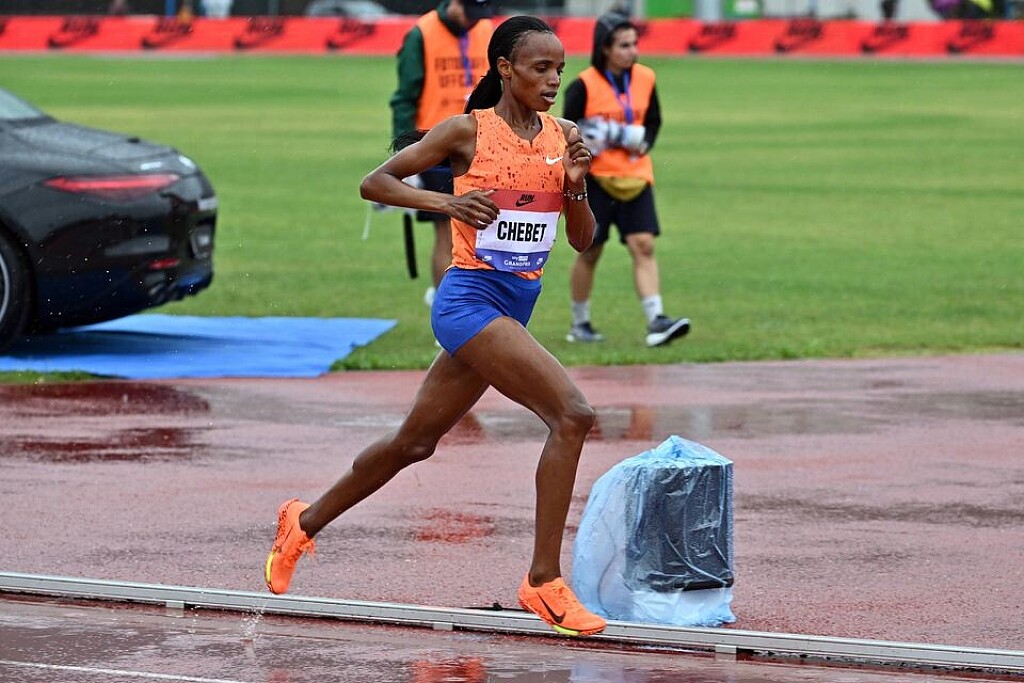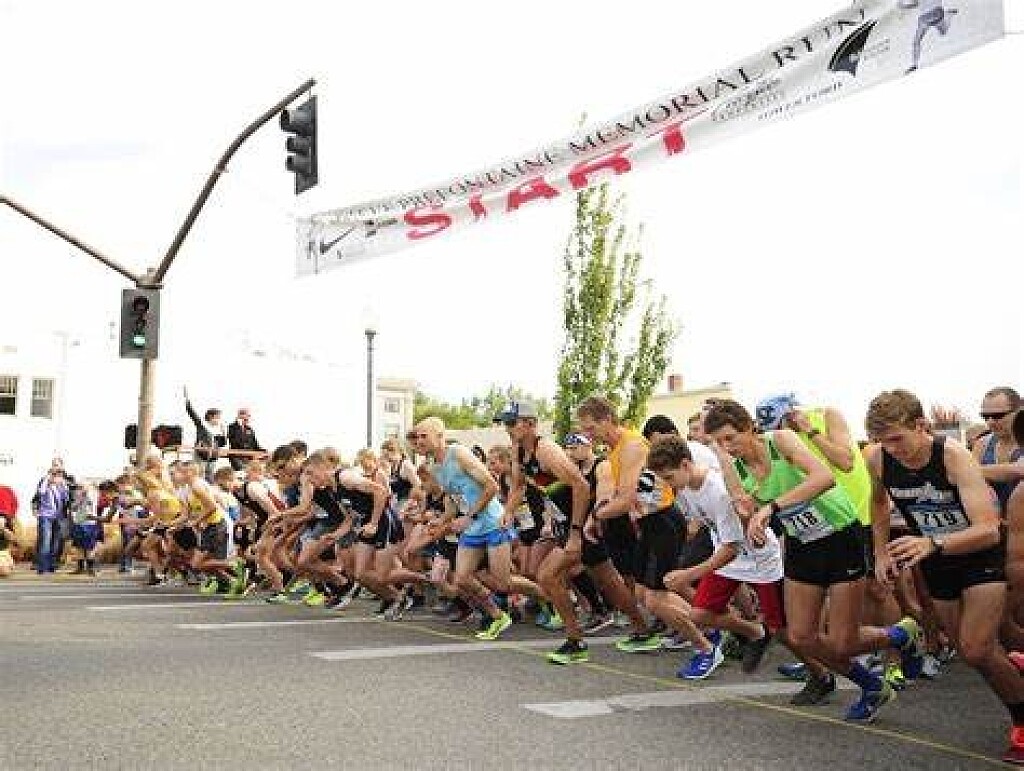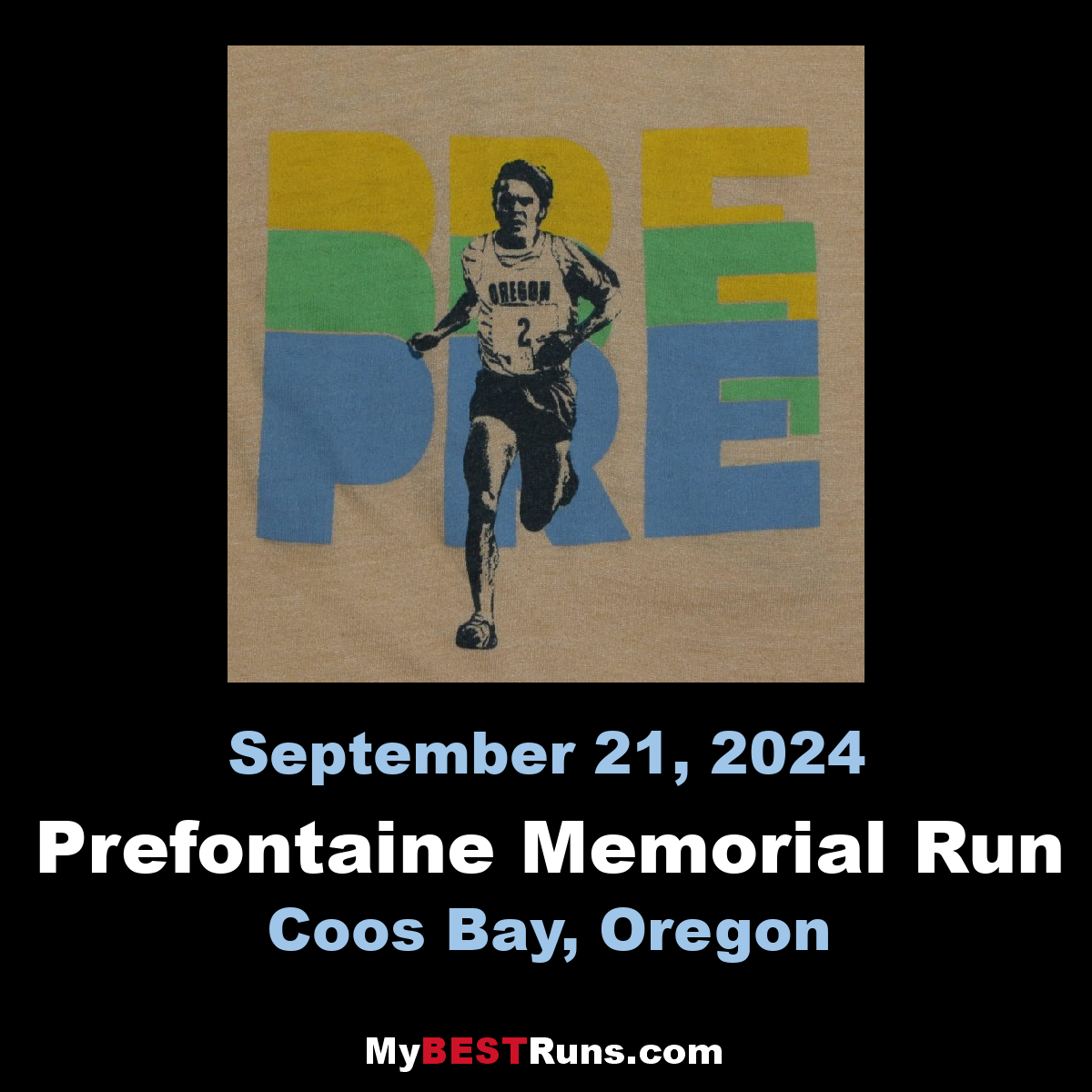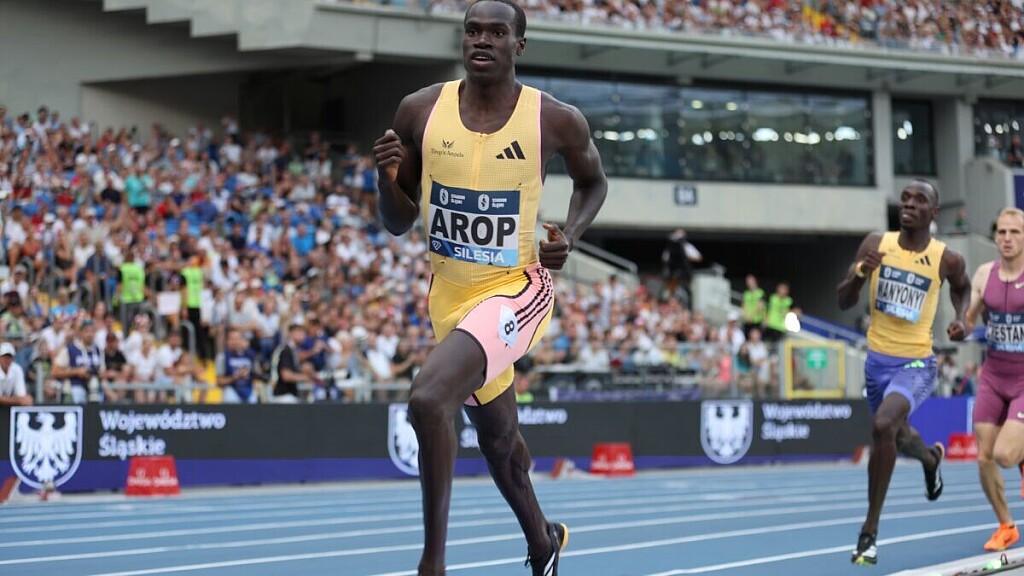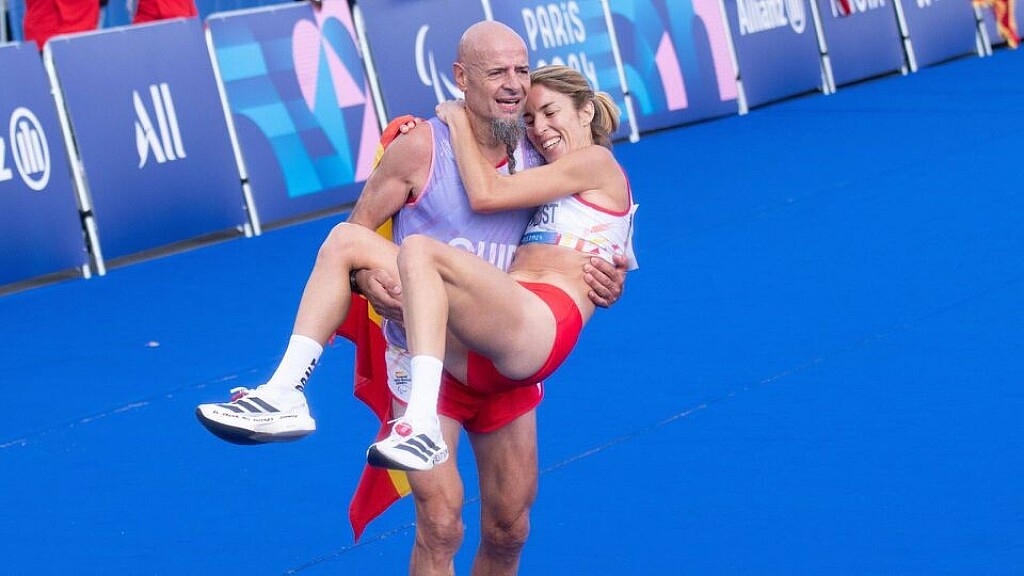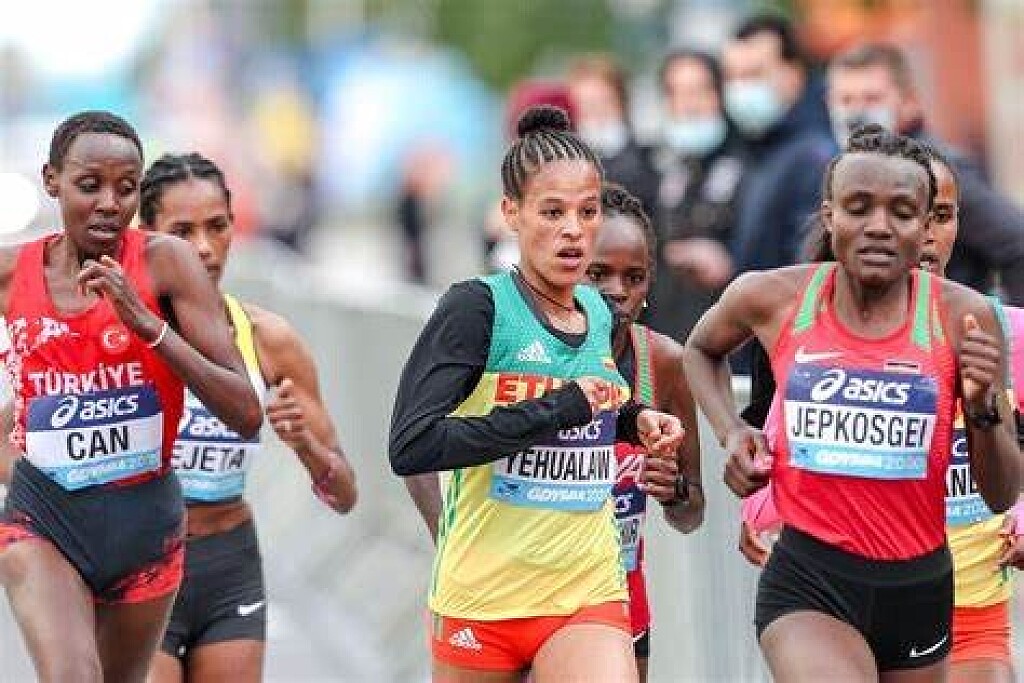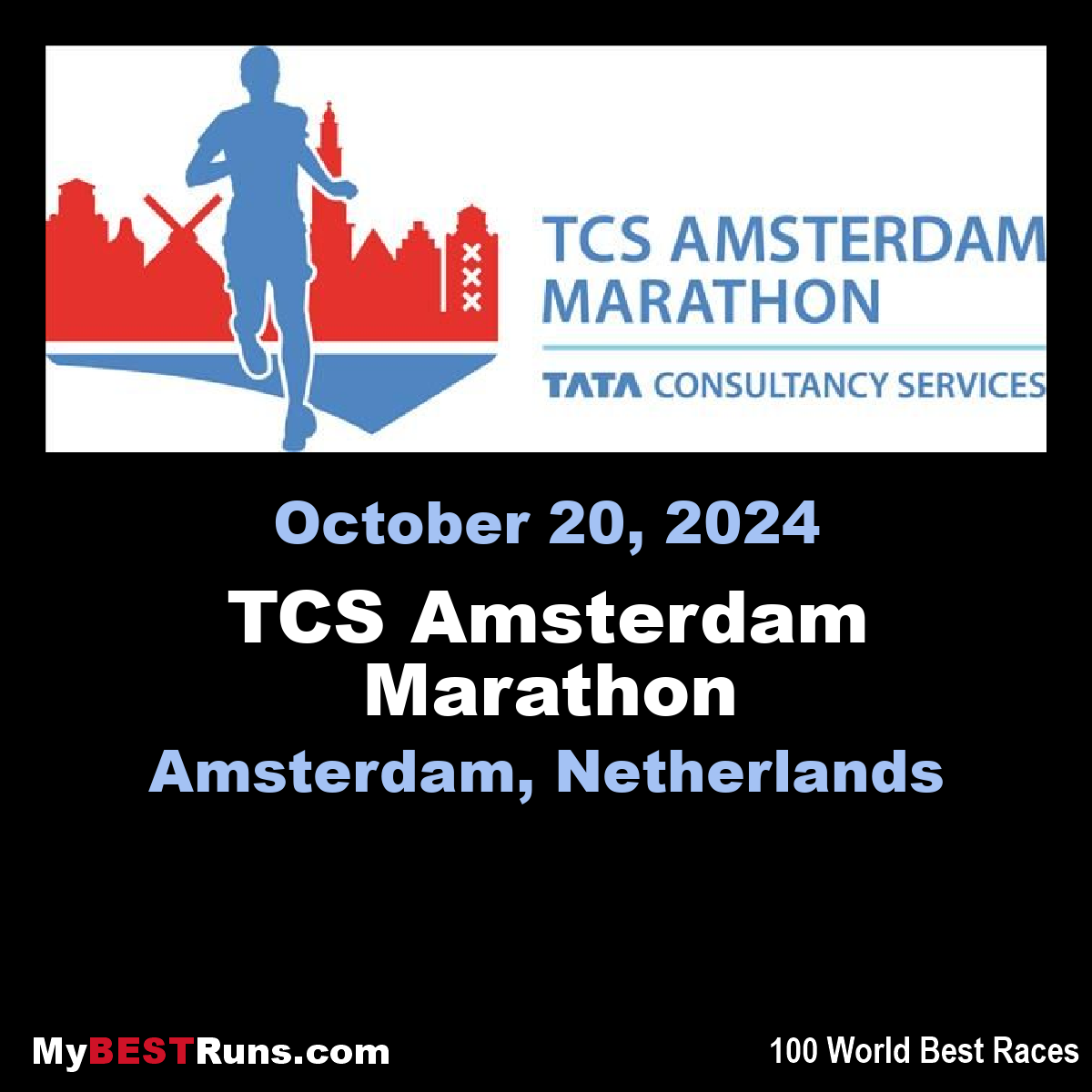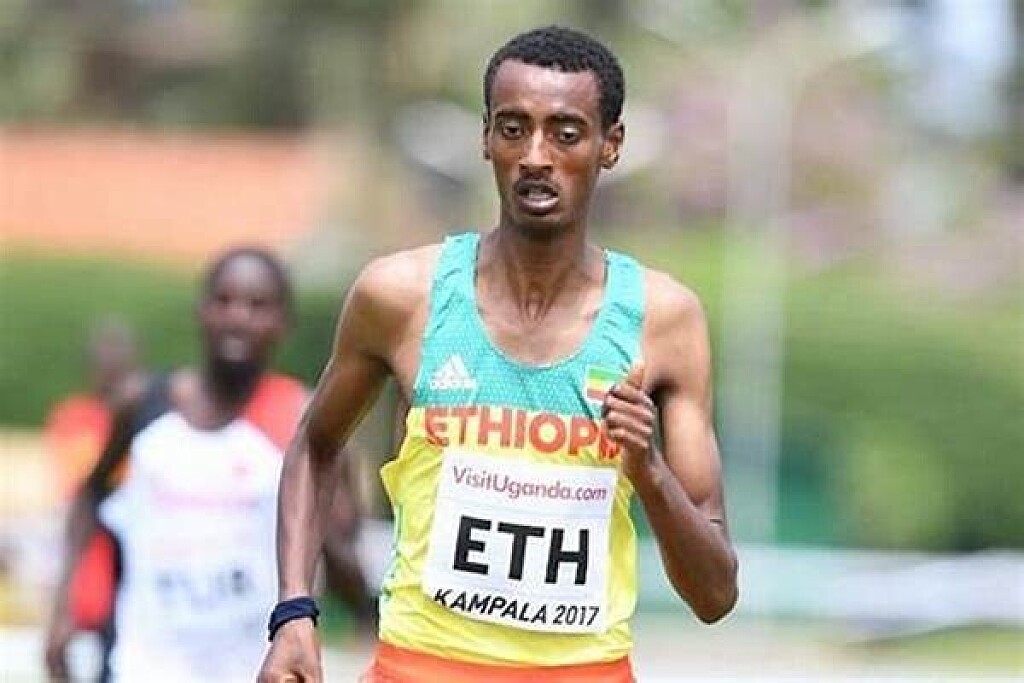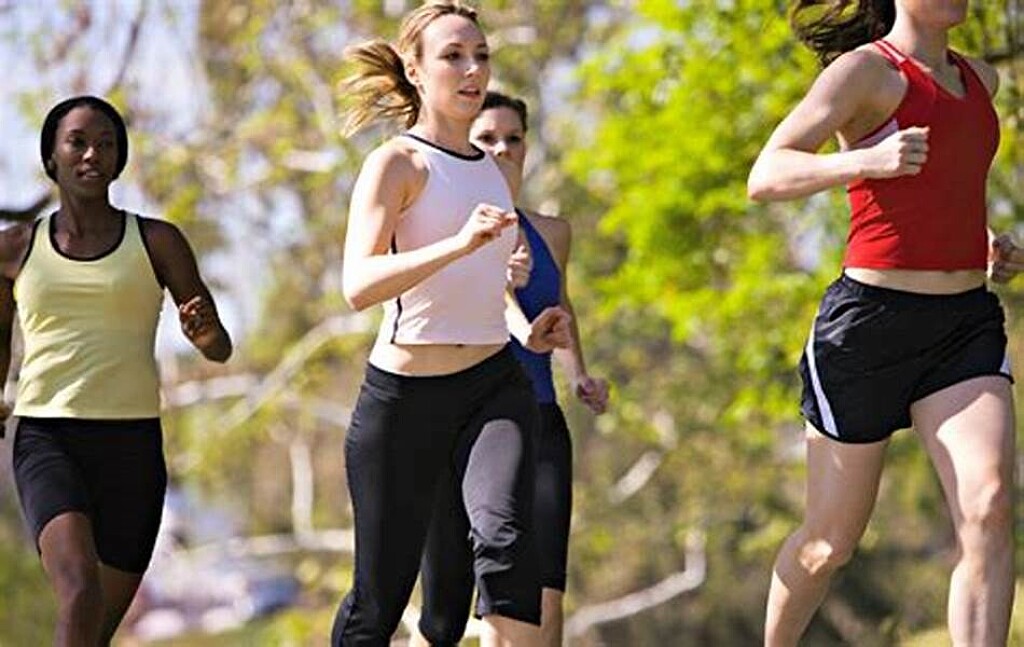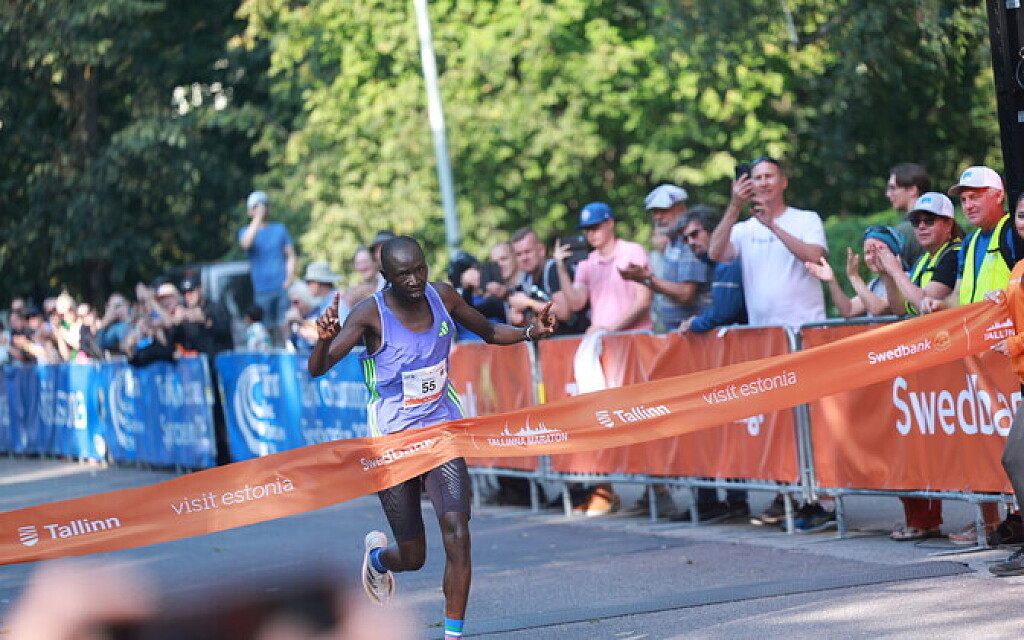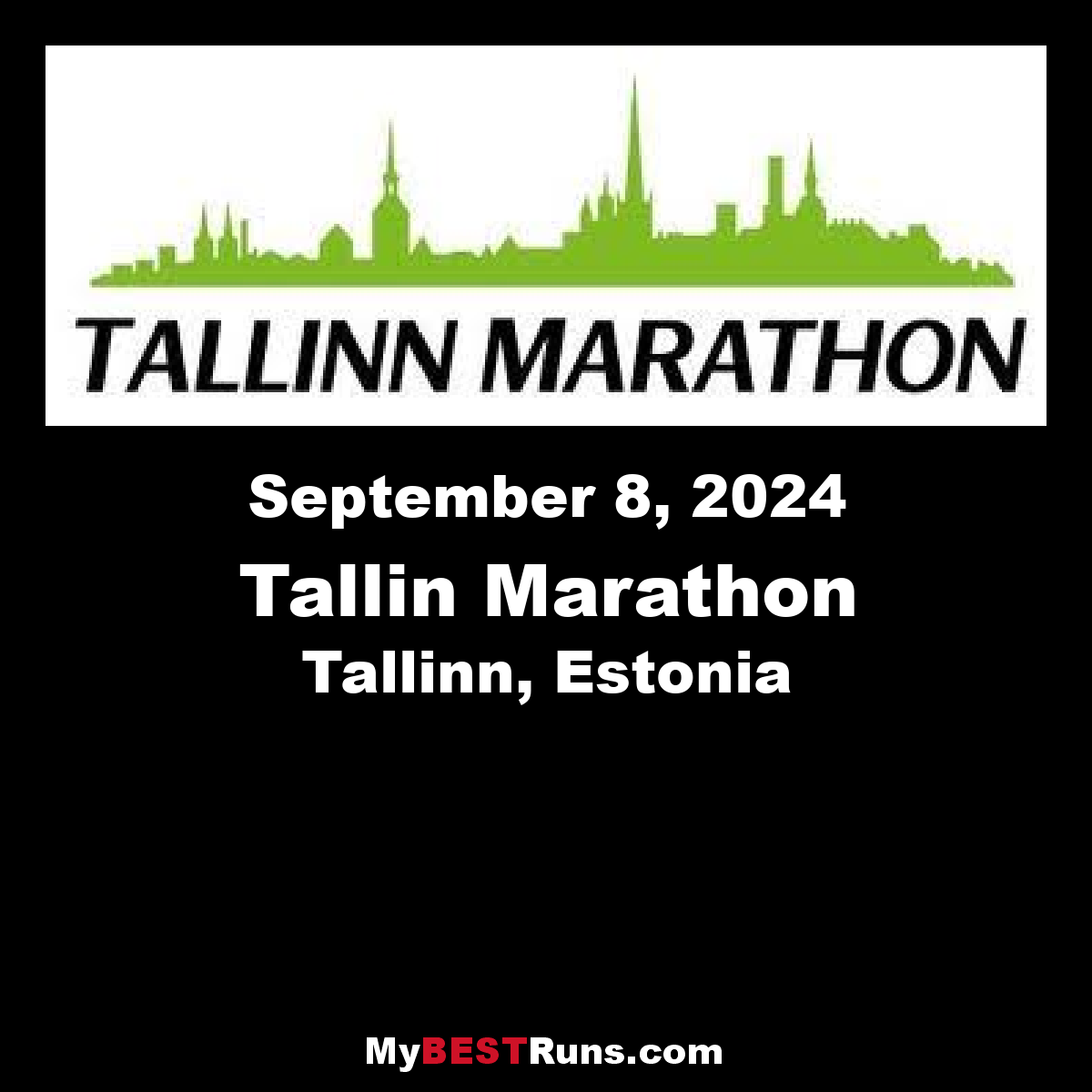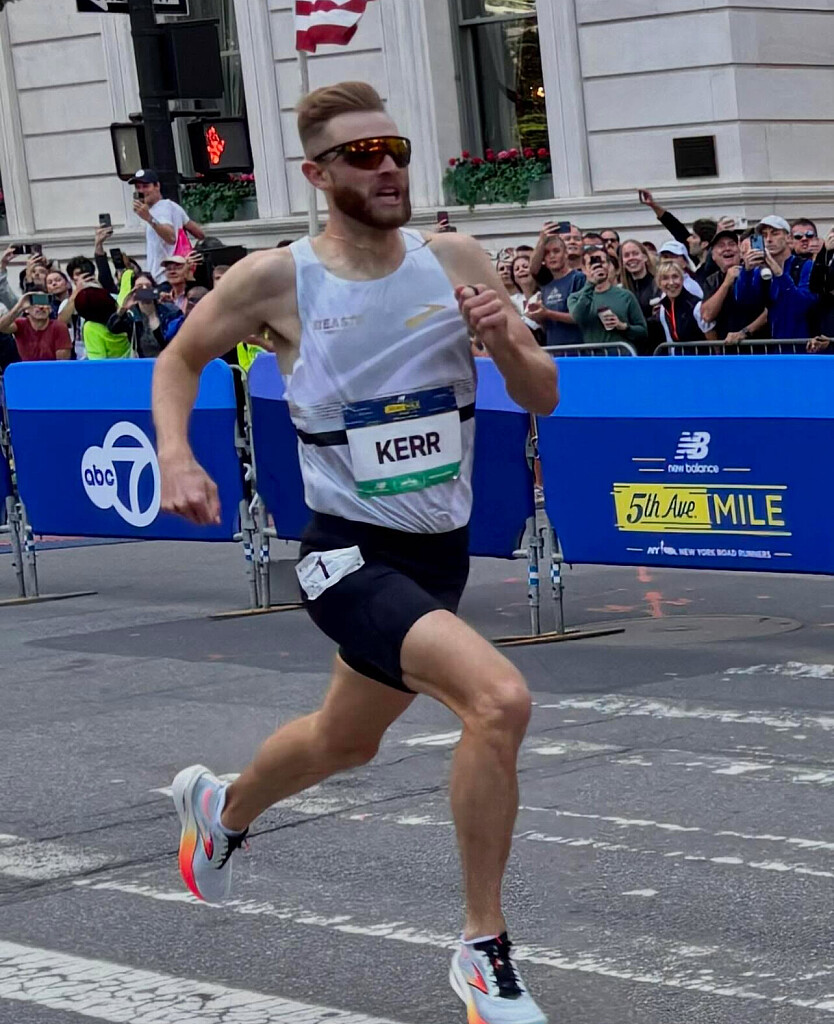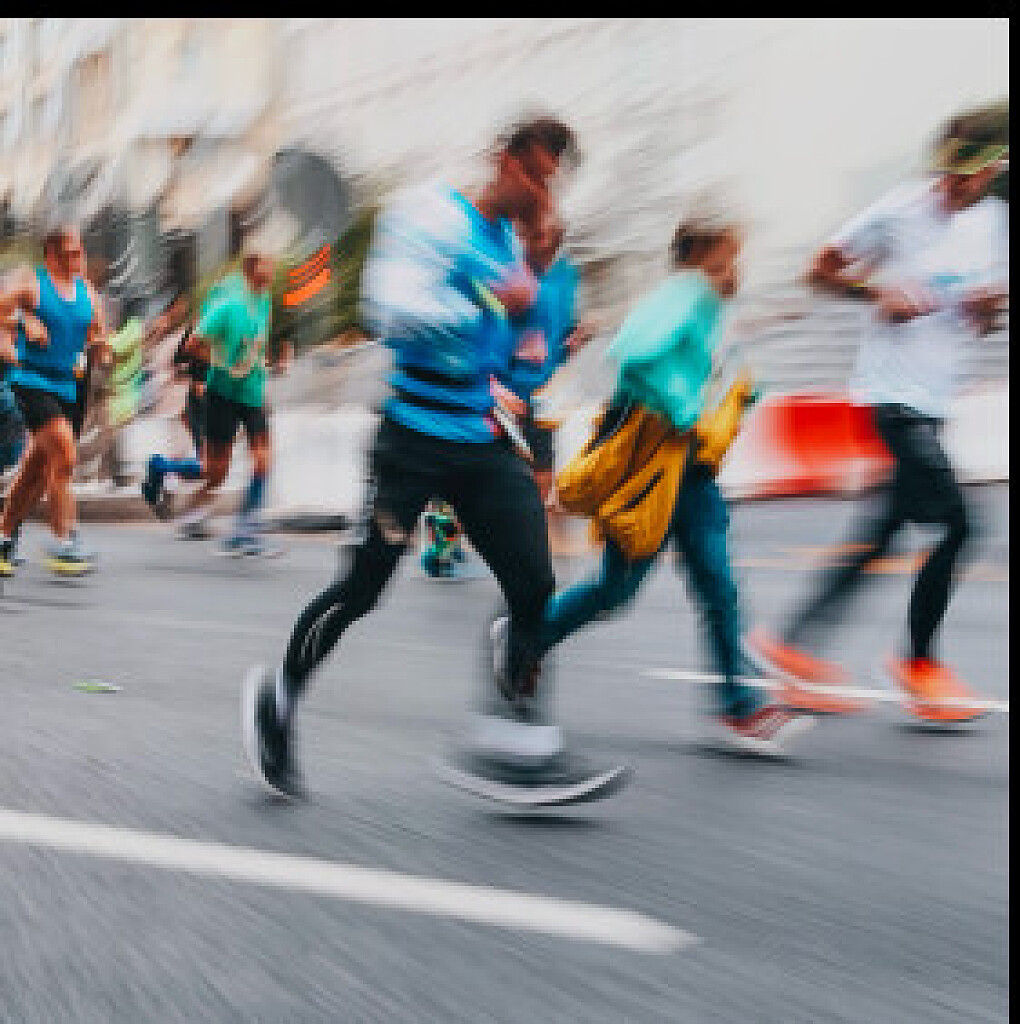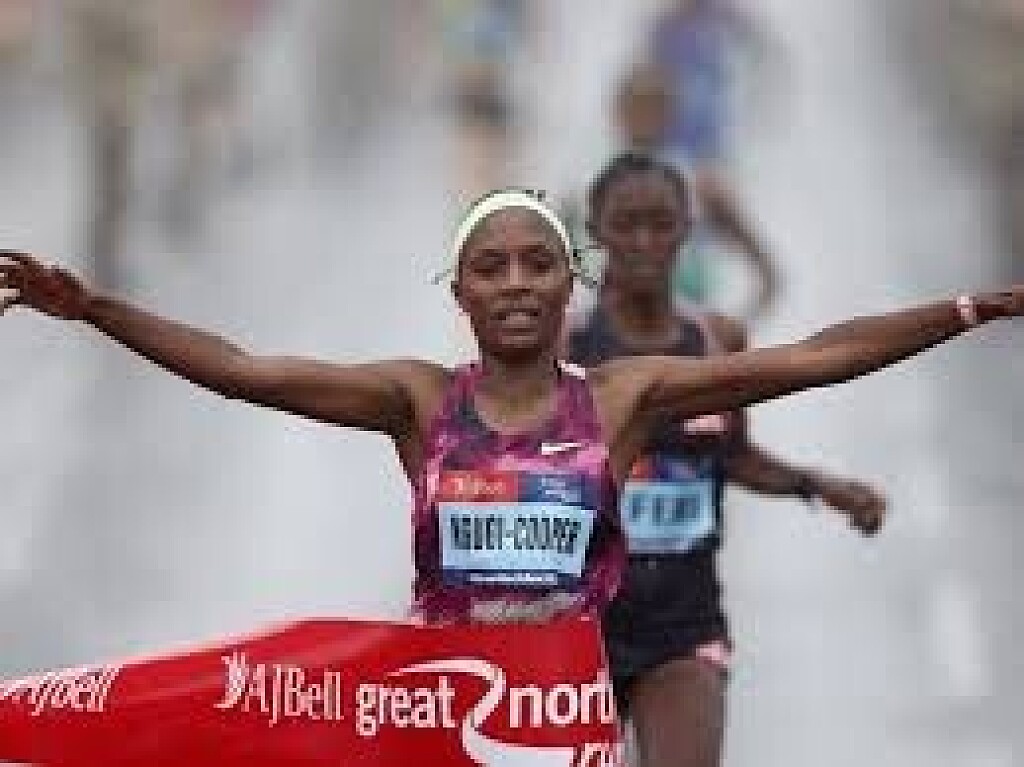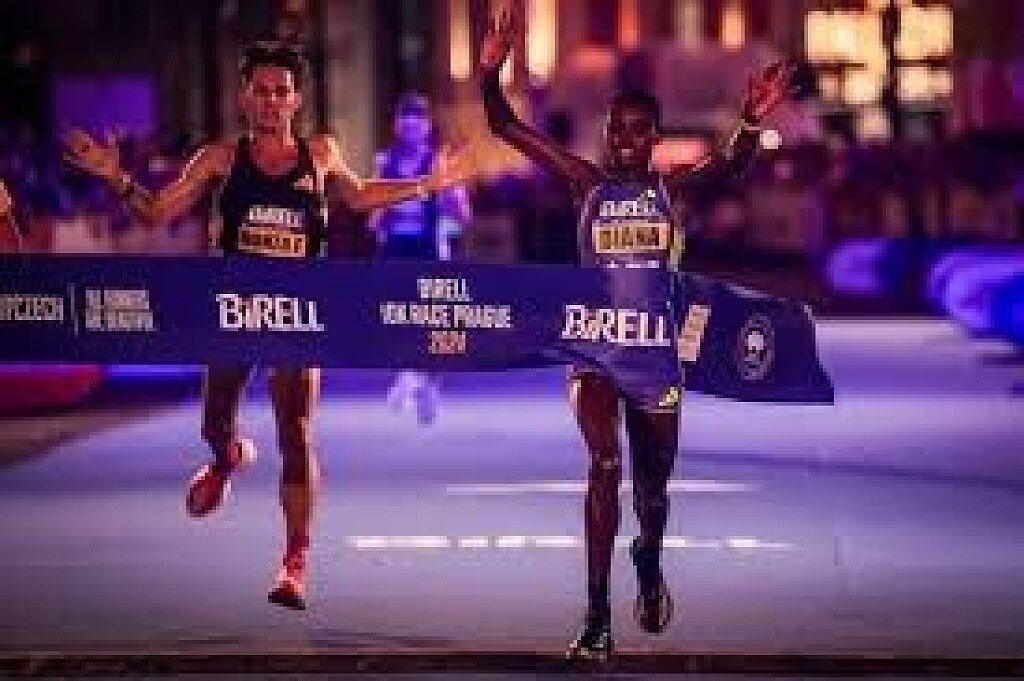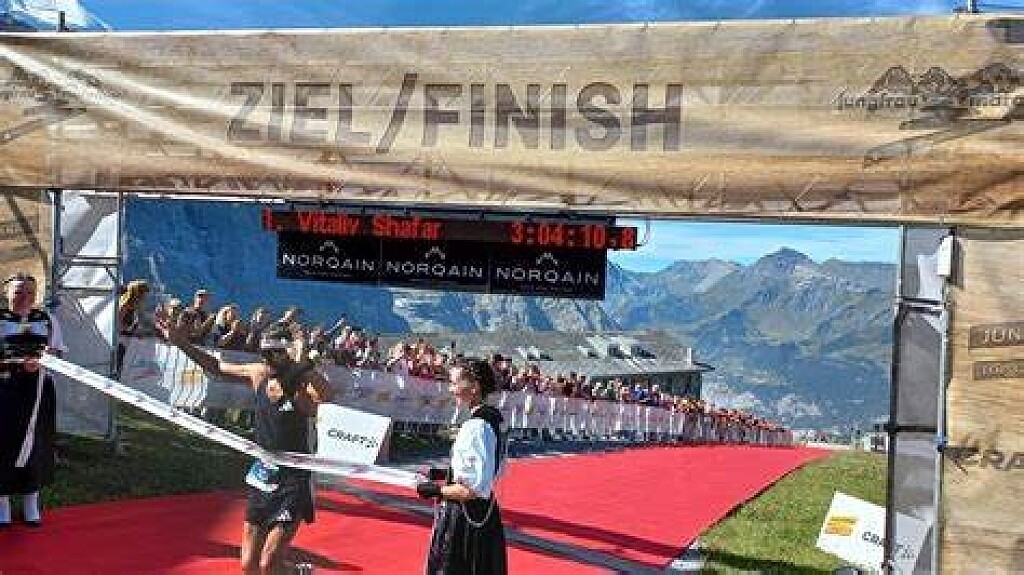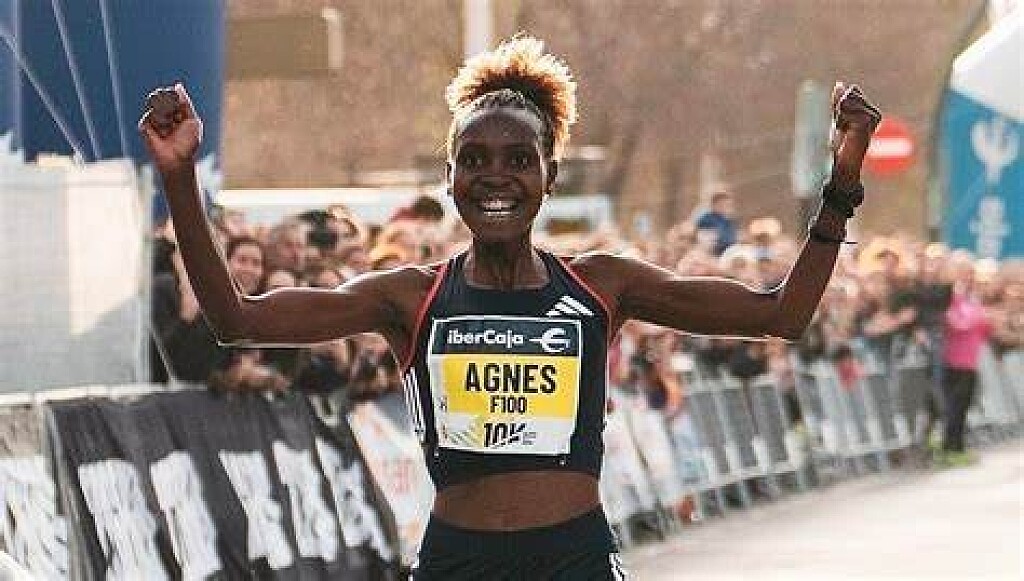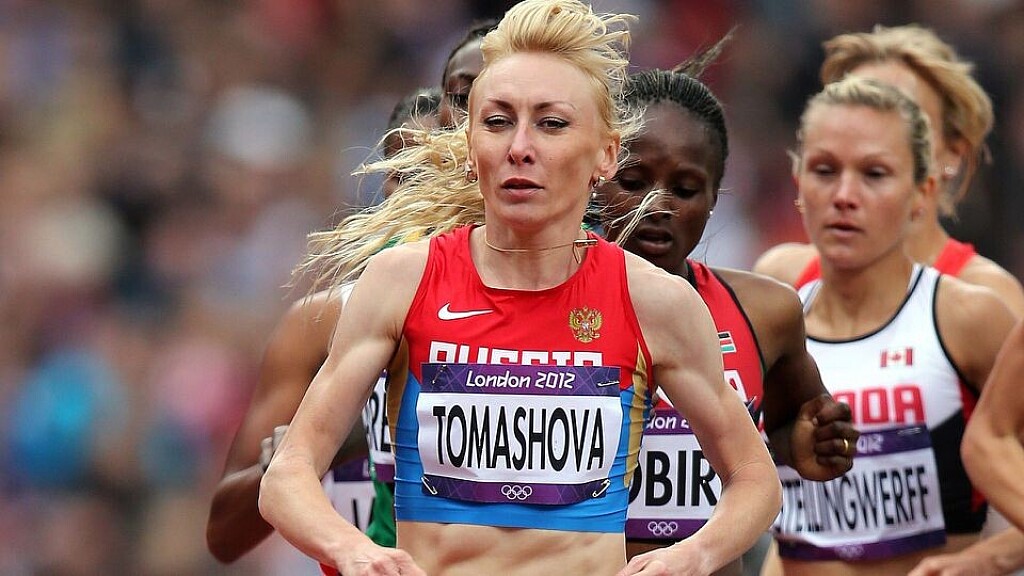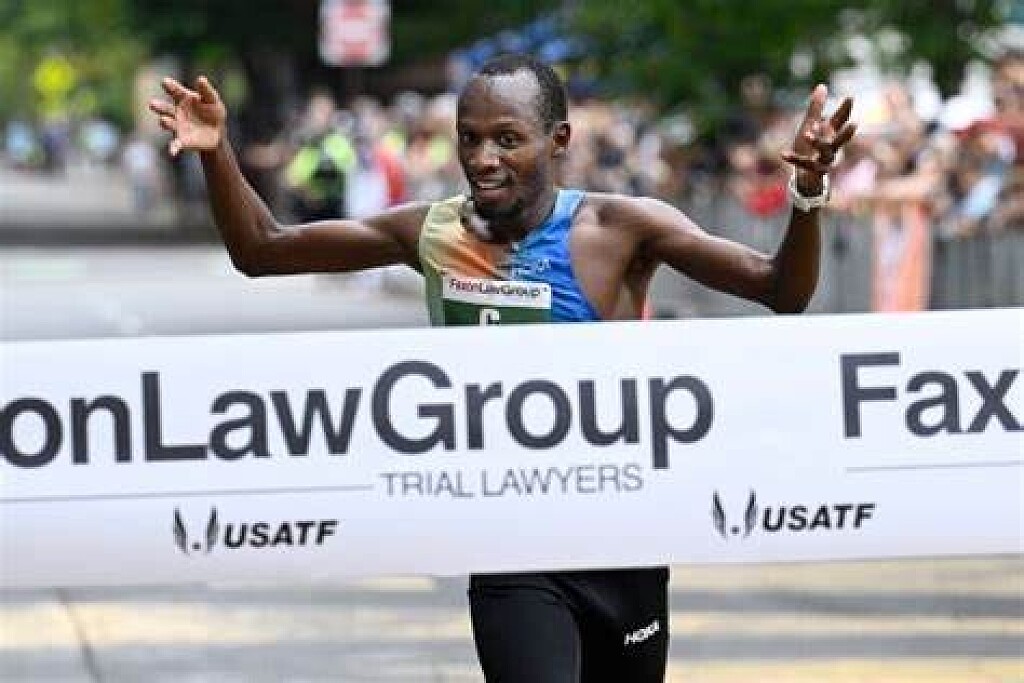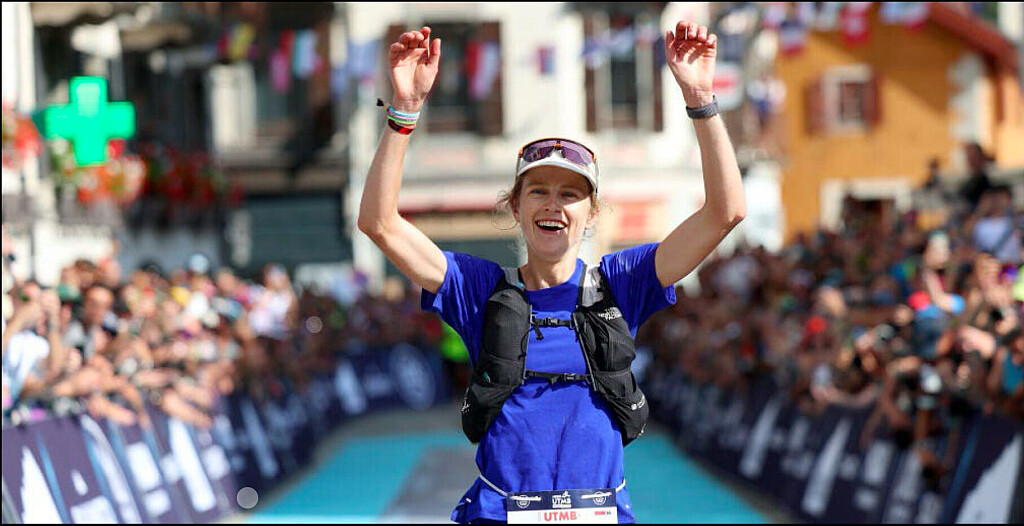Running News Daily
Running News Daily is edited by Bob Anderson. Send your news items to bob@mybestruns.com Advertising opportunities available. Train the Kenyan Way at KATA Kenya and Portugal owned and operated by Bob Anderson. Be sure to catch our movie A Long Run the movie KATA Running Camps and KATA Potato Farms - 31 now open in Kenya! https://kata.ke/
Index to Daily Posts · Sign Up For Updates · Run The World Feed
How to Prepare For Your First Running Event
Are you signed up for your first running race this year? If so, you might be wondering what to do next. Many of us register for a 10k or half marathon in the hopes that doing so will simply motivate (or pressure) us to get to the finish line, and sometimes, it does. But let’s face it, Forrest Gump was just a movie. In real life, without proper preparation, you could wind up injured, unable to finish, or not even make it to the starting blocks, all of which would be really disappointing, to say the least.
Preparing for your first race requires careful planning, from training and getting the right kit to goal-setting and pre-race fuelling. Proper preparation ensures you’re physically ready for the race, have the energy to keep going and can overcome race day nerves, all of which will mean you have a more enjoyable race, and are likely to make it the first of many.
1. Set a goal
Once you’ve chosen a race and signed up, it can be smart to set an achievable goal. This can give you something to focus on during both your training and your race, and that can help you stay motivated, while achieving your goal can also give you a greater sense of satisfaction (for this reason, it’s a good idea to set a secondary goal in case you don’t make your primary goal.
Your goal could be something ambitious, like running a sub three-hour marathon, but it can easily be as simple as just finishing the race. When I did my first triathlon in 2012, I simply wanted to finish and I wanted to do so without walking during any of the running section. I didn’t finish anywhere near the podium, but I managed to achieve my goals and I was really happy with myself.

2. Make a training plan
For injury prevention, it’s obviously vital to make a smart training plan, and to leave yourself enough time before race day to actually execute it. There is no one way to train, and your plan will depend on where you’re starting and where you want to get to, but just as a rough idea, in our first marathon training plan we recommend 12 weeks for seasoned runners, but a full year for novices.
The most important aspect of training to remember is to build up gradually to give your body time to adapt to each increase in load, make ample room for rest and recovery and if possible, work with a coach and train in conditions similar to those you’ll be racing in.
3. Gear up
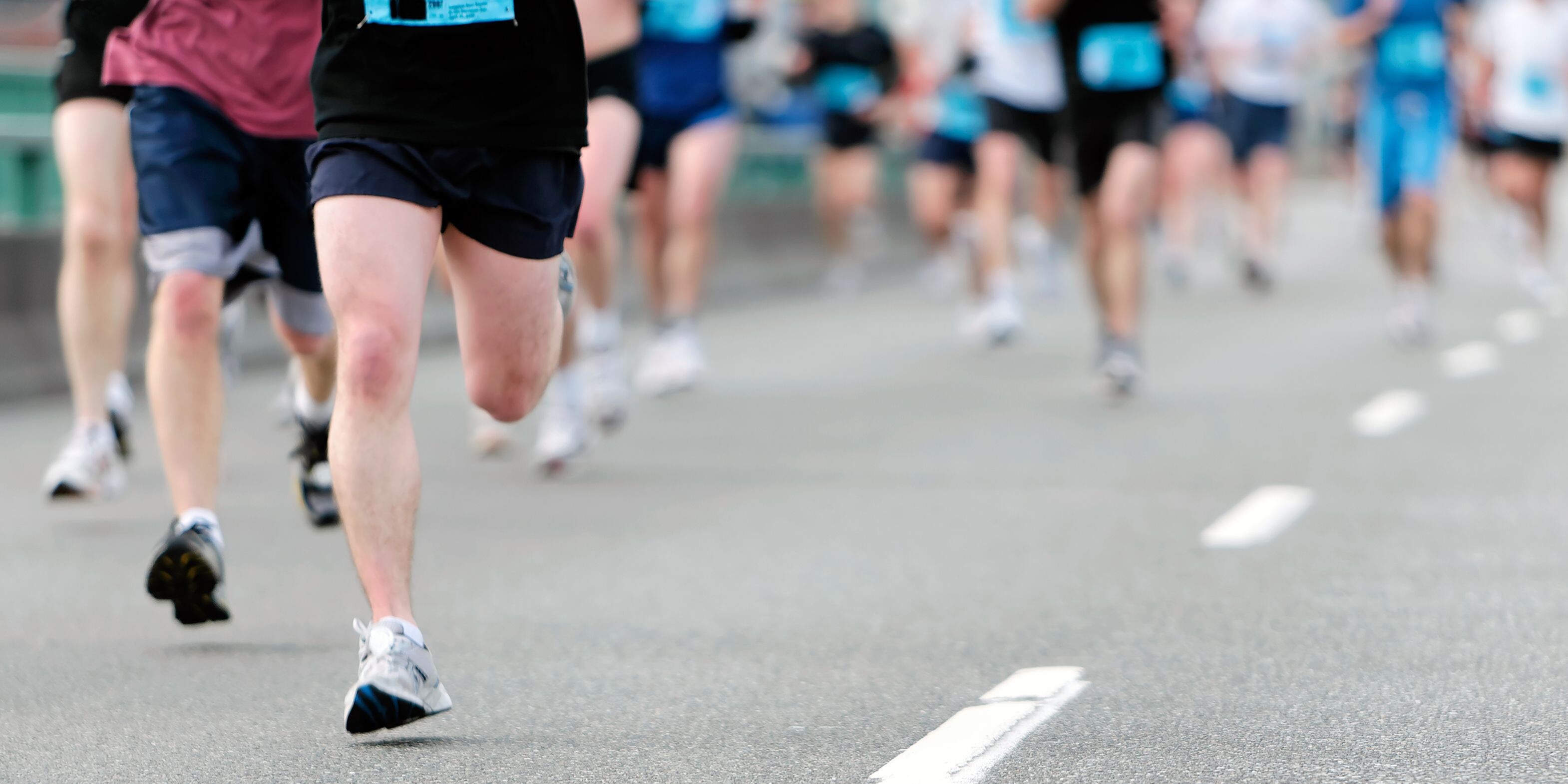
As you get closer to the big day, you’ll need to start to consider your gear. You’ll need to choose trail running shoes or road running shoes and have trained in them for a while to be sure they’re right for you. If you’ve already put in a ton of miles of them, you may need to replace them with an identical pair a few weeks before the race, and break them in. Once you’ve found the perfect pair of running socks, have a new or nearly new pair set aside for race day.
Use your training months to figure out what clothing you’re most comfortable in, taking into account the expected climate and conditions. Are you happiest in a pair of running shorts or do you prefer running tights? You’ll need a well-fitting running top that’s breathable and doesn’t chafe, and consider whether you want to run with a headband or running hat if you're expecting sunny conditions.
Remember, the general rule for running is light, breathable clothing that wicks moisture, but everyone is different. Reigning UTMB champ Courtney Dauwalter is well-known for running in baggy men’s running shorts and shorts, which isn’t common, but it definitely works for her.
4. Rest up
You’ll spend months slowly ramping up your mileage in order to reach your race distance, but once you get there, you’ll want to start to reduce both your distance and intensity in the final couple of weeks before your race, a practice known as tapering. During this time, you’ll focus on easy runs.
In the final two days before your race, get complete rest and lots of sleep. If you’re not a great sleeper, read our article getting better sleep for some tips on improving your sleep hygiene and routine.
5. Recce your route
Ultra runner Renee McGregor has ranked highly in some pretty rugged races, from Snowdonia to the Himalayas, and when I heard her talk about her accomplishments, she described making the podium in a gnarly race where the majority of participants took a wrong turn. Her advantage? She wasn’t necessarily the fastest runner, but she had checked out the race course ahead of time and knew where to go.
Understanding your route before you take off, if possible, can help you plan for when you’re going to want to slow down, or walk, where you can gain back some time, when and if you’ll need running poles and any tricky sections in a trail race where there’s the possibility of getting off-route.
6. Get in the right headspace
In addition to your physical training, it’s advisable to give your mental state some attention. Running a race can be exhilarating and empowering but it can also be nerve wracking and daunting. In the months leading up to your race, it can be worthwhile practicing mindfulness or meditation, which a 2020 study published in the journal Neural Plasticity found improved coordination, endurance and cognitive function. This could help you in the lead up to the race and in combating race-day nerves.
Know yourself and understand what you’ll need the day before your race and morning of to ensure you’re in the best head space possible. It might be good to minimize social contact and give yourself some quiet time to focus and get in the right headspace.
7. Fuel up
Just like filling up the tank of your car before you set off on a long drive, you’re going to want to make sure your body has plenty of energy stored before a race. For a race that’s not likely to take much more than an hour, you can simply make sure you eat well in the couple of preceding days, but fueling for endurance races can take careful fine-tuning. Following his second-place win at the 2023 UTMB, Zach Miller revealed that for him, managing his sodium levels with salt tablets was the secret to success.
For longer distances, you might want to consider increasing your carbohydrate intake – a practice known as carb loading – to increase your body’s glycogen stores. The best nutritional advice is to focus on well-balanced meals with protein and carbohydrates and not going overboard on refined carbs or fiber, which might wreak havoc on your gut. Learn more in our article on carb loading.
Though you should definitely eat well in the days leading up to your race, if you’re going to be able to eat during the race and are loading your hydration vest up with running gels, then you don’t necessarily need to carb load, but you will want to make sure your stomach can handle gels and take them with plenty of water to avoid the dreaded “runners' trots.”
Ultimately, for longer endurance races, working with a dietician will give you an advantage, since every athlete and every race is different. This will help you avoid the pitfalls of low energy availability and might help you figure out your unique nutritional needs faster.
8. Pre-hydrate
As we explain in our article on hydration tips for runners, hydration for a race doesn’t begin with filling up your hydration pack. Your behavior in the days before a long run can really affect your hydration levels on the big day, so avoid dehydrating foods like caffeine and alcohol.
According to Susan Kitchen, registered dietitian and USA Triathlon Level II and IRONMAN certified endurance coach, if you’re training for a big race, you want to avoid being in the heat unnecessarily in the days leading up to it, unless you're just doing a training run, but sitting outside on the beach sweating, or in a sauna, is not a good idea. Sip plenty of water in the days before your race, too.
9. Make a recovery plan
Chances are, all of your energy and efforts will be focused on that finish line, but the longer the race, the more you’ll want to make a recovery plan, otherwise it’s all too easy to end up having too many celebratory beers, which after a long run can be a bad idea.
Try to plan for at least a couple of days off work following your race to recuperate, hydrate and nourish your body, schedule a massage and engage in some of your favorite recovery activities to reward your body for all its hard work.
10. Set your alarm
The night before race day, make sure you set your alarm nice and early so you have plenty of time to prepare. Chiefly, you’ll want to have time to sip water, eat and give yourself enough digestion time before the starting gun goes.
In our article on what to eat before a half marathon, we explain that nutrition experts recommend runners eat a familiar breakfast around three to four hours before the race start, or a large snack 90 minutes to two hours beforehand. When deciding what time to get up, factor in that meal as well as how much time you need to get to the race plus any other pre-race rituals you want to observe.
(09/11/2024) ⚡AMPby Julia Clarke
'Taking my spikes off for the final time' – American sprinter Morolake Akinosun announces retirement at 30
Olympic gold medalist Morolake Akinosun announces her retirement at 30 after an illustrious career in track and field.
American sprinter Morolake Akinosun has announced her retirement from professional track and field at the age of 30.
The 2016 Olympic gold medalist and World Champion in the 4x100 meter relay bids farewell to a sport in which she has thrived for over a decade, leaving behind a legacy filled with victories, resilience, and a clear sense of purpose for her next chapter in life.
Akinosun, who earned international acclaim as part of Team USA's winning relay squad in the Rio 2016 Olympics, took to social media to confirm the news.
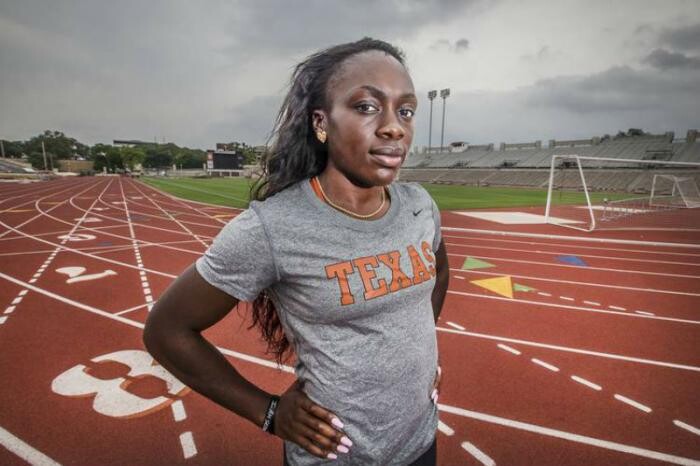
Akinosun, who earned international acclaim as part of Team USA's winning relay squad in the Rio 2016 Olympics, took to social media to confirm the news.
In a candid reflection on her career and her decision to retire, Akinosun shared that she felt a deep sense of peace about her decision following the 2024 Olympic Trials.
"Following the 2024 Olympic Trials, I had an overwhelming feeling and sensation immediately after that I was done. It felt so clear to me," she said as quoted by Citius Mag.
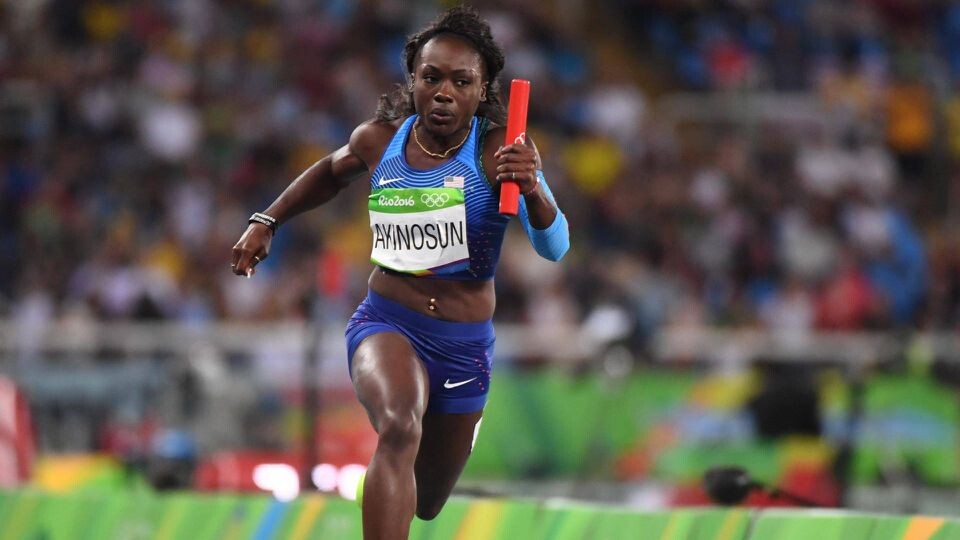
The Nigerian-born sprinter revealed that she prayed for clarity and soon found herself on a new path, meeting influential figures like Michael Johnson and Steve Gera.
Just a month later, she was headed to Paris to work as a consultant with Grand Slam Track and soon after joined the company full-time.
Akinosun’s track journey began with success at a young age, clinching gold medals in the 100 meters and 200 meters events at the 2011 AAU Junior Olympics.
She then ascended to the national stage as the 2013 USA Junior Champion in the 100 meters and silver medalist in the 200 meters.
Her collegiate career was equally groundbreaking, as she became only the second woman in history to score in four events at the NCAA Outdoor Championships in consecutive seasons.
Akinosun's true breakout on the global stage came when she won gold at the 2015 Pan-American Games in Toronto, setting the stage for her Olympic glory in 2016 and her World Championship triumphs.
She was part of the victorious 4x100m relay team at the 2017 World Championships in London and added a bronze medal from the 2019 World Championships in Doha to her extensive medal haul.
Despite her incredible success, Akinosun recognized early on the need to plan for life after track.
Outside of her athletic career she has already made a mark in the world of media and event management.
“I don’t know if anyone ever knows exactly what they want to do when they’re done,” Akinosun admitted.
“But I did start dabbling in other things to figure out what life could possibly look like for me post-track and field.”
(09/11/2024) ⚡AMPby Festus Chuma
Welsh Olympian's tips for improving your running technique ahead of the Cardiff Half Marathon
Ahead of the Cardiff Half Marathon, a double Olympic marathon runner has shared his tips on how people can improve their technique.
Steve Brace offered his advice ahead of the event on Sunday, October 6.

He said: "Being relaxed in your running action is the key to being a more efficient runner.
"Undue tension and poor technique can cause injury over a long period of time, no matter how good your shoes or how soft the running surface is."
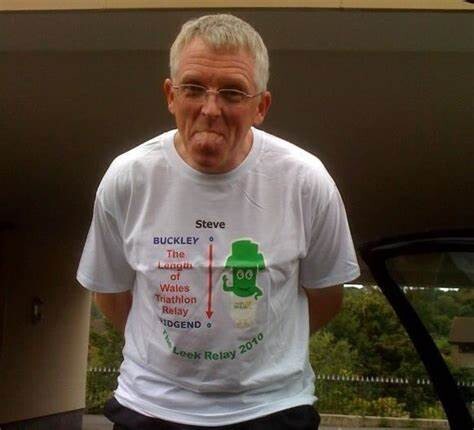
He added: "Try running tall with your head up and a pronounced chest. Keep shoulders as low as possible and your elbows close to your side, swinging back and forth with no shoulder rise.
"Your rear leg should drive the pushing leg away so it’s important to keep the foot in contact with the ground as much as possible."
Running with your fingers open, rather than having a clenched fist, can also help to keep your upper body relaxed, Mr Brace said.
While it may feel unusual at first, making these adjustments can help people to become more efficient runners.
Mr Brace advised starting by trying to run with these changes over short distances as first – running 60m at 60-80 per cent effort.
(09/11/2024) ⚡AMPby Jacob Manuschka
Wizz Cardiff Half Marathon
The Cardiff University/Cardiff Half Marathon has grown into one of the largest road races in the United Kingdom. The first event took place back in 2003. The event is not only the UK’s second largest half marathon, it is Wales’ largest road race and Wales’ largest multi-charity fund raising event. The race is sponsored by Cardiff University and supported by...
more...Kenyans aim to continue Munich’s success story
With the help of a strong African elite field organisers of the GENERALI MUNICH MARATHON hope to continue their recent success story on 13th October. Three Kenyan runners with personal bests slightly over 2:08:00 will be on the start line besides the Olympic Stadium. The women’s race will feature two runners who have clocked good half marathon times and could be in for a breakthrough over the full distance in Munich.
Including races at shorter distances a record total of over 25,000 runners is expected to compete in the 38th edition of the GENERALI MUNICH MARATHON, which is an increase of around 20 percent compared to last year. About 7,000 will run the marathon. Registration is still possible at: www.generalimuenchenmarathon.de
“We are really happy with the strong development of our entry figures. This shows that our concept is working and bearing fruit,“ said Race Director Gernot Weigl.
Parts of the elite fields were announced today. Kenya’s Cosmas Birech is currently the fastest runner on the start list. He won the 2018 Rome Marathon in 2:08:03. In the same year he also clocked a half marathon PB of 60:06. While there were hardly any races during the pandemic Cosmas Birech was unlucky once the period of lockdowns was over. The Kenyan was injured for a longer time. At the age of 38 he now wants to give it another go and hopes to get back to his best.
Dominic Nyairo, who has a personal best of 2:08:13, produced fine performances in his recent marathons. The 27 year-old will be one of the main favorites on 13th October. In 2021 Nyairo won his debut in Hofu, Japan, with a sprint finish in 2:09:34. In 2023 the Kenyan came back to Japan and placed 16th in the highly competitive Tokyo Marathon, improving to 2:08:13. He then ran the Berlin Marathon and finished 19th in a fine 2:08:47. In contrast William Kibor achieved his personal best quite some time ago. He clocked 2:08:32 when he was fifth in the Vienna City Marathon in 2012. After a longer break, which was partly due to the pandemic, he came back running a couple of half marathons last year. The GENERALI MUNICH MARATHON will be Kibor’s first race at the classic distance since 2019.
“We have produced the fastest times in the history of our event in the past two years. And I hope that we will once again see results in the region of 2:08to 2:09,“ said Gernot Weigl. „In the women’s race times between 2:25 and 2:27 should be possible.“
Two women who can still be regarded as newcomers could produce a surprise at the GENERALI MUNICH MARATHON. Shamilah Kipsiror only started her career last year when she was already 36 years old. When she competed outside Kenya for the first time she had instant success, winning the Ghent Half Marathon in a fine 67:53. Kipsiror then ran a 2:28:13 marathon debut in Venice last October. She was fourth in that race and fourth again when she returned to Italy for the Rome Marathon this spring, improving to 2:27:33.
One of Kipsiror’s strongest rivals will be Uganda’s Viola Chemos. She has only run one marathon so far, but that was in high altitude in Eldoret, Kenya. While she clocked 2:36:38 the 31 year-old followed this up with a fine race in July. Chemos took the Kaptagat Half Marathon in Kenya’s well-known high altitude training region with 69:23. Because of their strong half marathon performances Shamilah Kipsiror and Viola Chemos could improve significantly at the GENERALI MUNICH MARATHON.
(09/10/2024) ⚡AMPDouble Olympic champion Beatrice Chebet reveals when she will fully transition to road racing
Chebet, who won gold medals in both the 5000 and 10,000 meter races at te Paris Olympics, has revealed when she is going to fully transition into marathon racing.
Fresh off her dominating performance in Zurich, where she marked her return to action with a win in the 5000 meters, double Paris 2024 Olympic champion Beatrice Chebet has disclosed when she plans to fully transition into marathon running.
Chebet, who has had a stellar year, has been eyeing the marathon as her next frontier after conquering the track.
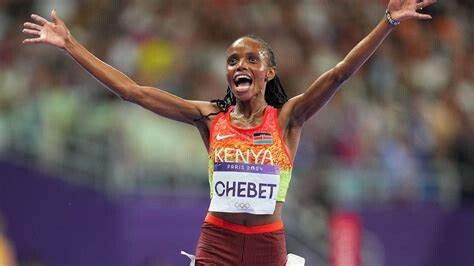
Chebet’s 2024 season has been nothing short of extraordinary. She claimed gold in both the 5000 meters and 10,000 meters at the Paris Olympic Games, cementing her status as one of the premier long-distance runners of her generation.
Earlier in May, Chebet also broke the world record in the 10,000 meters, clocking an impressive 28:54.14 in Eugene, Oregon. Her dominance extended to the road as well, where she set a world record in the 5-kilometer road race in Barcelona with a time of 14:13.
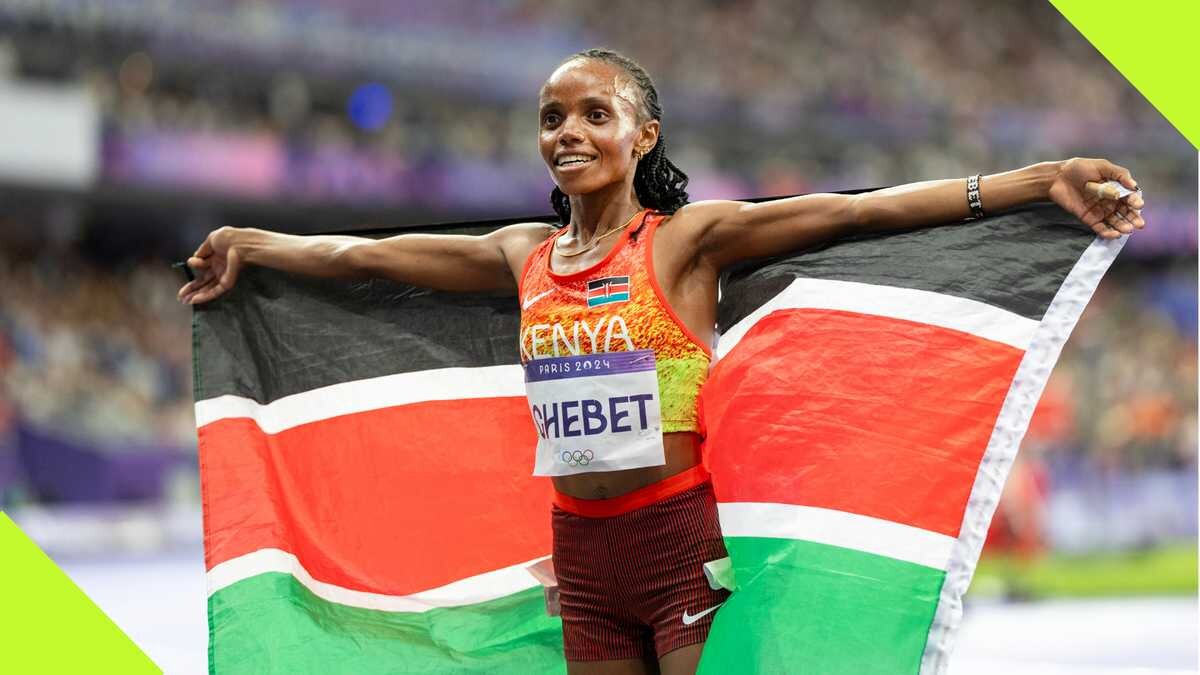
However, the 5000-meter world record, held by Ethiopia’s Gudaf Tsegay at 14:00.21, remains elusive for Chebet. She attempted to break the record at the Zurich Diamond League but fell nine seconds short under challenging rainy conditions. Despite the near miss, Chebet's eyes are firmly set on new goals, particularly in road racing and eventually marathon running—a natural progression for the long-distance star.
In a recent interview, Chebet revealed her long-term plans, stating that she is taking a gradual approach to marathon running, drawing inspiration from fellow Kenyan marathon legends like Hellen Obiri and Vivian Cheruiyot.
“We are going slowly. Everything now has its own time so we have to go gradually until we reach the marathon,” Chebet told Citius Mag.
Chebet, who won gold medals in both the 5000 and 10,000 meter races at te Paris Olympics, has revealed when she is going to fully transition into marathon racing.
Fresh off her dominating performance in Zurich, where she marked her return to action with a win in the 5000 meters, double Paris 2024 Olympic champion Beatrice Chebet has disclosed when she plans to fully transition into marathon running.
Chebet, who has had a stellar year, has been eyeing the marathon as her next frontier after conquering the track.
Chebet’s 2024 season has been nothing short of extraordinary. She claimed gold in both the 5000 meters and 10,000 meters at the Paris Olympic Games, cementing her status as one of the premier long-distance runners of her generation.
Earlier in May, Chebet also broke the world record in the 10,000 meters, clocking an impressive 28:54.14 in Eugene, Oregon. Her dominance extended to the road as well, where she set a world record in the 5-kilometer road race in Barcelona with a time of 14:13.
However, the 5000-meter world record, held by Ethiopia’s Gudaf Tsegay at 14:00.21, remains elusive for Chebet. She attempted to break the record at the Zurich Diamond League but fell nine seconds short under challenging rainy conditions. Despite the near miss, Chebet's eyes are firmly set on new goals, particularly in road racing and eventually marathon running—a natural progression for the long-distance star.
In a recent interview, Chebet revealed her long-term plans, stating that she is taking a gradual approach to marathon running, drawing inspiration from fellow Kenyan marathon legends like Hellen Obiri and Vivian Cheruiyot.
“We are going slowly. Everything now has its own time so we have to go gradually until we reach the marathon,” Chebet told Citius Mag.
Reflecting on her remarkable performances this season, Chebet expressed her satisfaction, especially with her ability to maintain her form late into the season. “It was amazing because it was the beginning of the season so you feel stronger and energetic, but in the 5000, coming here at the end of the season, I just said, ‘let me go and try’,” she explained.
Chebet’s 14:09 finish in Zurich was impressive, given that she ran 2.5 kilometers alone in the race. “I am so happy. A good performance after Paris. Running 14.09 is not easy, especially after running 2.5 kilometers alone,” she added.
As the season winds down, Chebet is looking forward to taking a well-deserved break. “Take part in the Diamond League, get back and relax, and then prepare the season again for next year,” she said.
Chebet had earlier expressed her admiration for Ethiopian-born Dutch runner Sifan Hassan, whose versatility across multiple events has inspired Chebet’s future ambitions. Hassan took bronze in both the 5000 and 10,000 meters in Paris before striking gold in the marathon, a feat that left a lasting impression on Chebet.
“She always motivates me. She has personal bests in the 800m, 1500m, 5000m, 10,000m, and even the marathon. She’s a great athlete and makes me believe that you can do anything if you believe in yourself,” Chebet said.
Looking ahead, Chebet hopes to follow in Hassan’s footsteps, testing her capabilities in the marathon. “I want to follow in her footsteps too. In some years to come, I will also try the marathon,” she hinted.
(09/10/2024) ⚡AMPby Mark Kinyanjui
Have you tried this yoga-like remedy for enhancing athletic performance?
Whether you’re passionate about yoga, dealing with back pain, or looking to boost your athletic performance, the ELDOA technique is worth considering. This movement practice focuses on improving spine health by creating more space between joints, which helps reduce pressure and discomfort. Despite its complex name, ELDOA is simple to practice—requiring only a yoga mat and your own body, making it accessible anytime, anywhere. If Olympians and pro athletes rely on it for performance and recovery, why shouldn’t you give it a try?
How it works:
ELDOA is a French acronym that can be translated to Longitudinal (axis) Osteo-Articular Decoaptation.
There is a key distinction between yoga and ELDOA: yoga uses more fluid movements, and ELDOA uses fixed postures to target precise joints. The ELDOA technique focuses on the fascia, which is connective tissue that encases our muscles, muscle fibres and organs–basically holding us together. The technique puts tension in the lines of the fascia by elongating your spine to open spaces between bones to reduce pressure on the joint.

ELDOA is viewed as a proactive alternative to surgery, often used to decompress joints and alleviate pressure. This non-invasive movement technique is effective in relieving spinal disc pain, enhancing flexibility and reducing the likelihood of future injury.
How to do an ELDOA posture:
ELDOA postures definitely take some getting used to; the strange positions engage your whole body more than you’d expect, and require a lot of focus as you hold the pose. Over time, your ability to hold the positions and elongate your spine with the right intentions will improve.
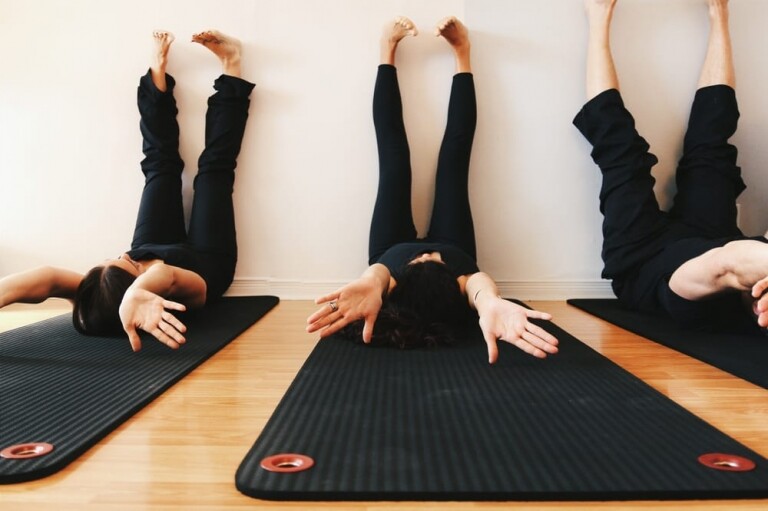
The above pose is the L2-L3 posture; it targets the fourth spacing in your lower spine, between your third and fourth lumbar vertebrae. This exercise must be performed seated on the floor, or on a slightly elevated surface if you can’t achieve the proper position.
Form a 90 degree angle with your legs, then internally rotate your legs.
Point your toes towards your chest (dorsiflexed).
Tuck you chin, straighten your spine and flatten your back.
Raise hands one at a time; externally rotate your arms so that your thumbs face back/out. Reach your palms upwards away from you.
Hold this posture for one minute. Actively focus on reaching your arms away, elongating your spine, turning your legs in and dorsiflexing your feet. Breathe throughout.
Many other ELDOA postures work to target other specific joints–there is even a position for the ribs that help with the function of your lungs. If your athletic therapist doesn’t have an ELDOA program to recommend, YouTube or online subscriptions can provide videos for you to follow along with to prompt you throughout various postures and keep you focused. It’s recommended to carry out the movements following a workout or before bed.
Other benefits:
Improved posture and healthier spinal discs
Increased range of motion
Improved athletic performance, joint mechanics, recovery, muscle tone and function
Relief of chronic pain
Increased circulation
Improved body awareness and overall wellbeing
(09/10/2024) ⚡AMPby Cameron Ormond
Prefontaine Memorial Run returns to coos bay to honor a running legend
The annual Prefontaine Memorial Run, a classic 10K run honoring one of Oregon’s most beloved athletes, is returning to the charming streets of Coos Bay on Saturday, September 21, 2024. The run celebrates Coos Bay’s own Steve Prefontaine, the famed Oregon runner who bolted onto the international running scene and helped ignite a running craze in the U.S. in the 1970s.
“Steve Prefontaine was a legend in the running world in the 1970s, and Coos Bay is where he was born and where he discovered his gift for and love of running,” said Janice Langlinais, Executive Director of the Coos Bay-North Bend-Charleston Visitor and Convention Bureau, more commonly known as Oregon’s Adventure Coast. “The annual Prefontaine Memorial Run not only honors Pre’s legacy here in his hometown, but it draws runners from around the region, the state and the country to come and experience the joy of running on Oregon’s Adventure Coast.”
The 2024 Prefontaine Memorial Run is a challenging 10K road race around the streets of Coos Bay that finishes on the Prefontaine Track at Marshfield High School following one of Pre’s favorite training routes. The event also includes a 2-mile walk and fun run. The 10K starts at 10 a.m., while a 5K high school team competition kicks off the events at 9:45 a.m.
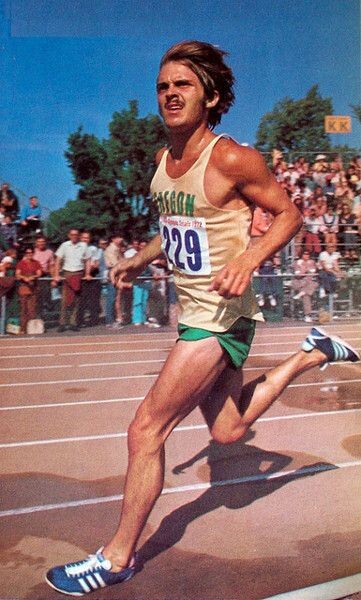
Other pre-related attractions for runners and visitors include a bronze likeness of the famed distance runner at the Coos Bay Visitor Information Center, the Prefontaine Gallery at the Coos Art Museum, which showcases his awards and memorabilia, and the stunning Pre Mural in downtown Coos Bay.
The Prefontaine run will again coincide with the annual Bay Area Fun Festival, a two-day celebration in downtown Coos Bay filled with live entertainment, a parade, food and drinks, vendors, arts, crafts and the Cruz the Coos classic auto cruise around downtown Coos Bay.
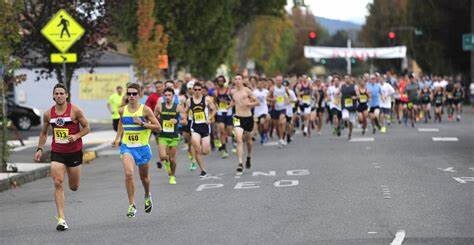
The 2024 Prefontaine Memorial Run
What: A 10K run, with a 2-mile walk or fun run option and a 5K high school competition, in honor of hometown hero and running legend, Steve Prefontaine.
When: 10 a.m. Saturday, September 21. (High school competition begins at 9:45 a.m.; wheelchair runners start at 9:50 a.m.)
Where: The corner of 4th and Anderson in downtown Coos Bay.
Cost: $40 for runners 19 and over before September 17; $50 after that date. $20 for runners 18 and under or those in the 2K walk. $13 per runner for the high school competition.
Registration: prefontainerun.net
For visitors coming from out of town for the Prefontaine Memorial Run, Oregon’s Adventure Coast has lodging options for all tastes, from unique hotels and motels to vacation rentals, RV parks and picturesque campgrounds.
(09/10/2024) ⚡AMPby The Bandon Western World
Prefontaine Memorial Run
During his brief 24-year lifespan, Steve Prefontaine grew from hometown hero, to record-setting college phenomenon, to internationally acclaimed track star. In a similar span of years since his death in 1975, Pre has become the stuff of enduring legend. His rare combination of talent, discipline, determination, and star-quality with a human touch made Pre the idol of those he called...
more...Marco Arop runs North American record over 1,000m
Arop’s time of 2:13.13 is the fifth-fastest of all time.
On Sunday evening at the Boris Hanžeković Memorial meet in Zagreb, Croatia, Canadian Olympic 800m silver medalist Marco Arop narrowly missed the world record for 1,000 metres. His winning time of 2:13.13 set a new Canadian and North American record and is the fifth-fastest time in history.
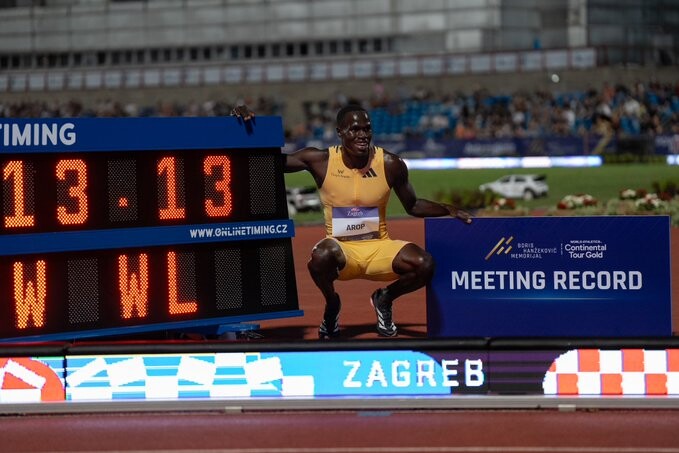
Arop was looking to break Noah Ngeny of Kenya’s world record of 2:11.92 from 1999, but he faced challenges early on. His tall frame struggled with the “waterfall” start, and he lagged behind the pace in the opening 400m, leaving him unable to fully catch up to the pace lights. However, Arop’s performance still shattered the previous North American record of 2:13.90 set by American Rick Wohlhuter 50 years ago.
The 25-year-old Edmonton native improved upon his previous personal best of 2:14.35. This was his second bid for the 1,000m world record, having fallen just short over the same distance indoors this year at the New Balance Indoor Grand Prix. Arop now holds the North American (area) records in the 800m and 1,000m events.
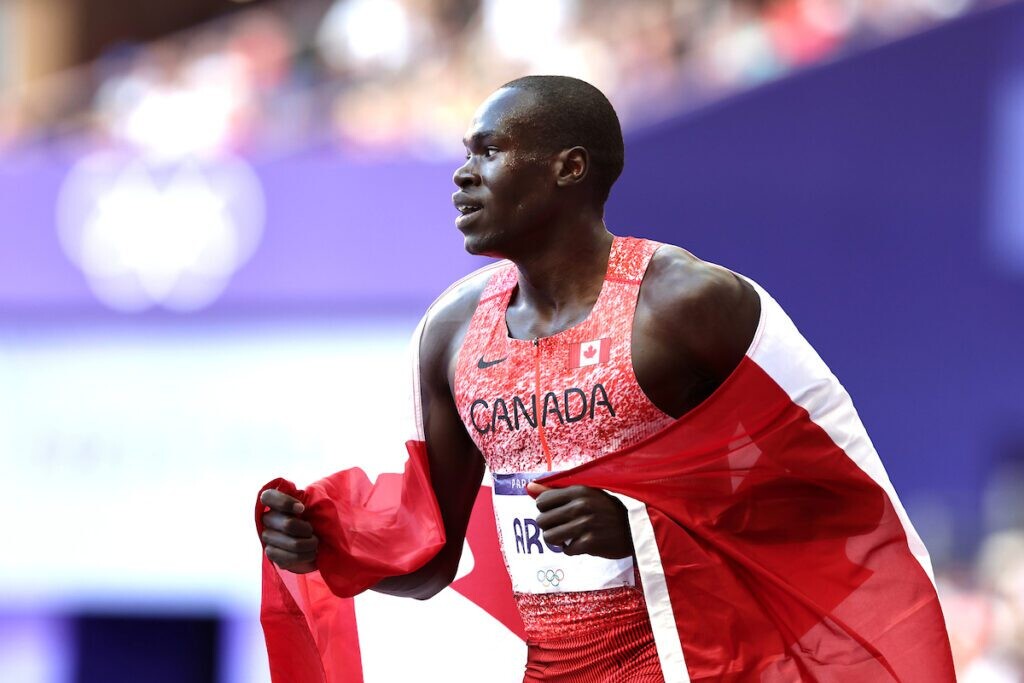
Next up, Arop will head to the Diamond League final in Brussels on Sept. 13-14, where he plans to challenge the men’s 800m world record of 1:40.91, a goal he says has been on his mind for some time.
Arop was one of three Canadian athletes competing at the Boris Hanžeković Memorial on Sunday. Olympic hammer throw champion Ethan Katzberg suffered his first loss of the season, losing to Olympic bronze medallist Mykhaylo Kokhan, who threw a new personal best of 81.14 to take the win. Canadian 4x100m relay gold medallist Jerome Blake finished fourth in the men’s 100m in 10.15 seconds.
(09/10/2024) ⚡AMPby Marley Dickinson
Paralympic bronze medalist disqualified for helping her guide
Spanish marathoner Elena Congost was stripped of her bronze medal after momentarily letting go of the tether connecting her to her guide.
The Paris 2024 Paralympics is getting backlash for what is seen by fans as an unmerited disqualification. Just two meters from crossing the finish line in the women’s T12 marathon on Sunday, five-time Spanish Paralympian Elena Congost was disqualified for momentarily letting go of her tether to assist her guide, Mia Carol Bruguera, who was visibly struggling to continue running. Paris officials ruled the Spaniard ineligible to claim the bronze medal that was otherwise hers.
Bruguera, 57, cramped up near the end of the race; his extreme discomfort was unmistakable as the pair approached the final stretch of the event. Congost reached out to grab Bruguera’s arm just moments before crossing the line to keep him from falling as he struggling to continue moving forward–dropping her end of the tether in the process.
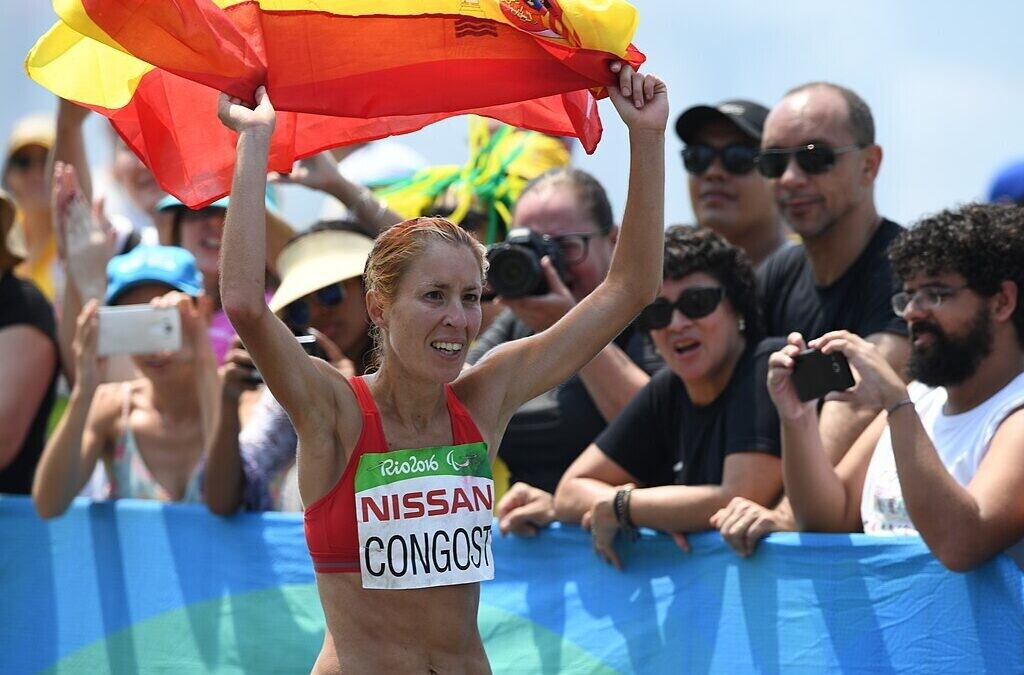
Congost was born with a degenerative vision impairment and competes in the T12 classification–runners in the T12 event must remain tethered to their guide for the duration of their race. The rules make no exceptions for these sorts of extenuating circumstances.
The 36-year-old took gold in the event at Rio 2016 and placed second in the 1,500m at London 2012. She recently returned to competition following the birth of her fourth child.
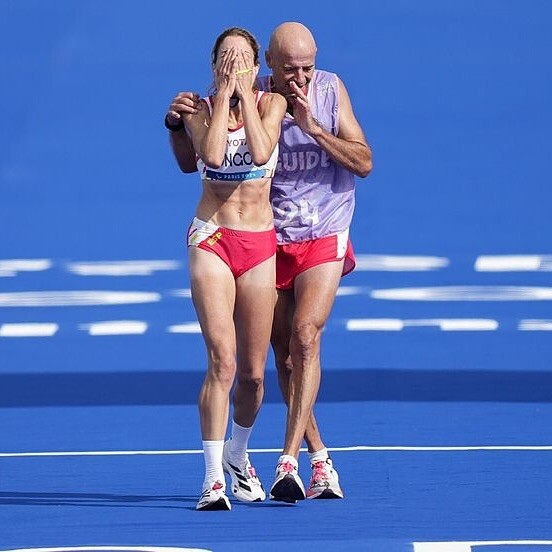
“I would like everyone to know that I have not been disqualified for cheating, but rather I have been disqualified for being a person and for an instinct that comes to you when someone is falling,” Congost told Marca. On Instagram, the Spanish athlete wrote that she has “no doubts or regrets”.
Fatima El Idrissi of Morocco took gold in the event and set a new world record of 2:48.36, while teammate Meryem En-Nourhi finished second.If not disqualified, Congost would have also gone home with a new personal best of three hours and 48 seconds–but was stripped of that achievement along with her hardware. The bronze medal was instead awarded to fourth-place finisher, Misato Michishita of Japan.
(09/10/2024) ⚡AMPby Cameron Ormond
Ethiopia’s Yalemzerf Yehualaw top contender for New Women’s Course Record
All eyes will be on Ethiopia’s Yalemzerf Yehualaw during the TCS Amsterdam Marathon on Sunday, October 20. Her personal best of 2:17:23 is just three seconds shy of the current women’s course record (2:17:26, set by Almaz Ayana in 2022). In 2022, the former 10 km world record holder won the TCS London Marathon. Among the men, Guye Adola, Bernard Koech, Tsegaye Getachew, and Philemon Kiplimo will be battling for the top spot.
At just 25 years old, Yalemzerf Yehualaw is still at the beginning of her career. However, she has already recorded the second fastest half-marathon time ever (1:03:61, Valencia 2021) and the third fastest 10 km time ever, which was also a former world record (29:14, Castellón 2022). She won the 2022 Hamburg Marathon in one of the fastest debut times ever (2:17:23) and later that year claimed victory at the TCS London Marathon (2:17:26). Last year, the NN Running Team athlete finished fifth in London and also placed fifth at the World Championships marathon.
In Amsterdam, Yehualaw will face a strong challenge from Kenyan athlete Winfridah Moseti. Moseti has only run five marathons so far, but her progress has been remarkable. After her debut in Milan in 2021 (2:27:44), she finished fifth in Paris last year (2:23:38) and second in Frankfurt (2:20:55). This spring, she again finished second in Hamburg, setting a strong personal best of 2:18:25.
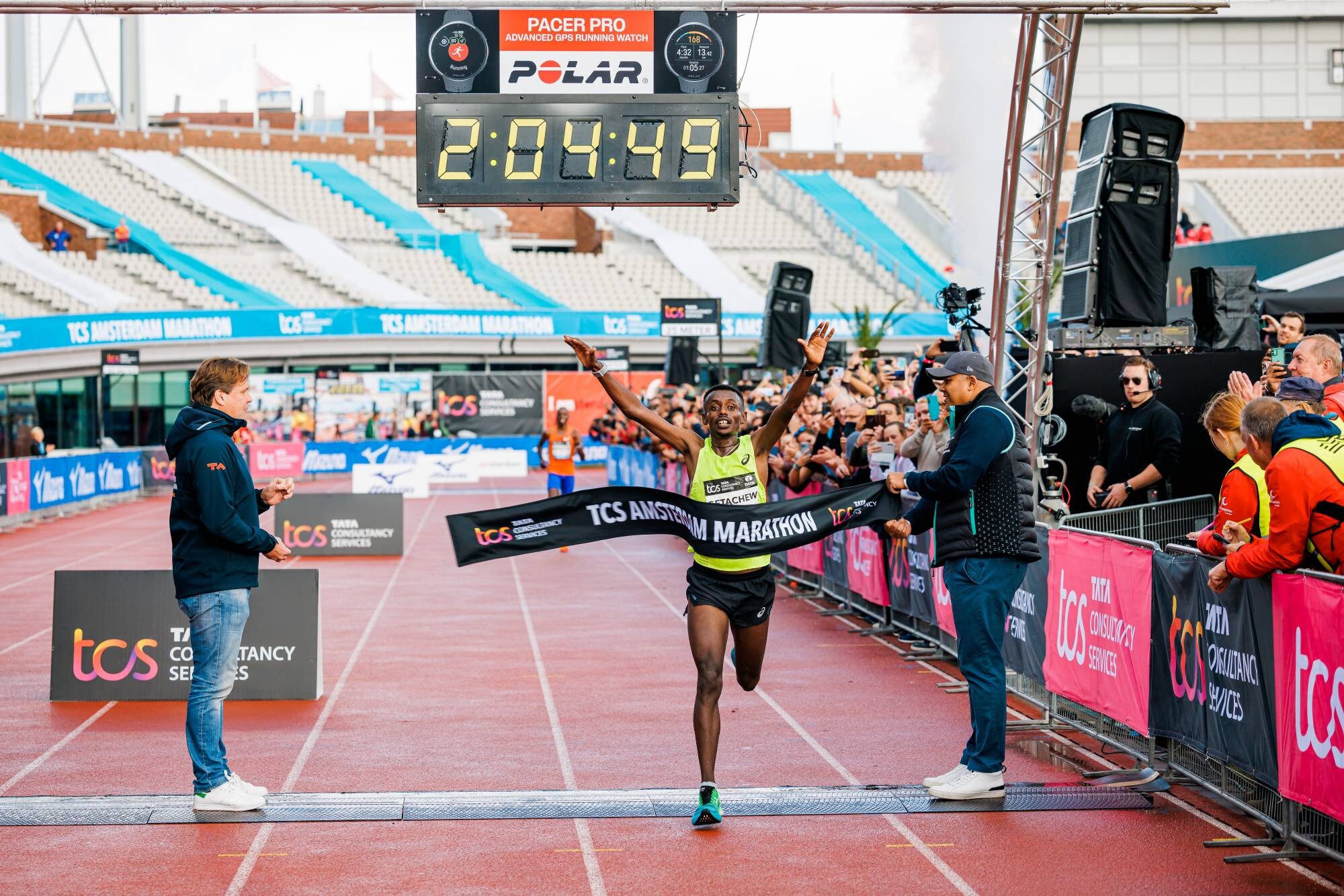
Behind these two world-class athletes, a competitive group of women will aim to break the 2:20 barrier: Selly Chepyego (PR of 2:20:03), Haven Hailu (PR of 2:20:19, set in Amsterdam), Desi Jisa (PR of 2:20:47), and Enatnesh Tirusew (PR of 2:20:48).
Tight Competition in Men’s Race
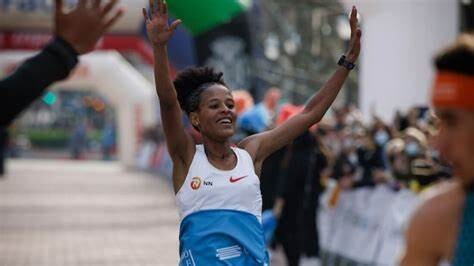
In the men’s race, the outcome is far from certain. The fastest man in the field is Ethiopian Guye Adola with a personal best of 2:03:46. However, both Koech and Getachew have previously made it to the podium in Amsterdam, and Kiplimo is also a strong contender with his impressive half-marathon personal best of 58:11, highlighting his speed.
Guye Adola’s track record is certainly impressive. He won the 2021 Berlin Marathon (2:04:45) and finished second in Berlin in 2017, where he set his personal best of 2:03:46. He has also stood on the podium in Valencia (third in 2019) and Paris (second in 2023). Adola trains in Ethiopia alongside Tamirat Tola, who holds the TCS Amsterdam Marathon course record (2:03:39, set in 2021).
Bernard Koech finished second behind Tola in that same year, with a time of 2:04:08. Koech is a two-time winner of the Hamburg Marathon, most recently this year with a time of 2:04:24, which ranks as the eighth fastest marathon time of 2024.
Tsegaye Getachew made his international breakthrough in Amsterdam, winning the race in 2022 with a time of 2:04:49. Since then, he has focused on the Abbott World Marathon Majors, with mixed success. His best results include a fifth-place finish in Tokyo in 2024 and a third-place finish in 2023. At last year’s World Championships marathon in Budapest, he finished 16th.
Philemon Kiplimo, with a half-marathon personal best of 58:11, has room for improvement over the full marathon. He set a strong personal best of 2:04:56 in Berlin last year and finished third in Hamburg this spring.
(09/09/2024) ⚡AMPTCS Amsterdam Marathon
Do you want to enjoy Amsterdam in October and all that the city has to offer you? Want to feel a real athlete and start and finish in the historic Olympic stadium? Or run across the widely discussed passage under the beautiful National Museum? Then come to Amsterdam for the annual TCS Amsterdam Marathon in October! The TCS Amsterdam Marathon...
more...Kejelcha, Barega and Mateiko set to fly the fastest in the Valencia Half Marathon
Elite athletes hope for top performances at race famous for record times.
The Valencia Half Marathon Trinidad Alfonso Zurich has confirmed the names of the international elite athletes who will fly through the streets of the “ciudad del running” on October 27.
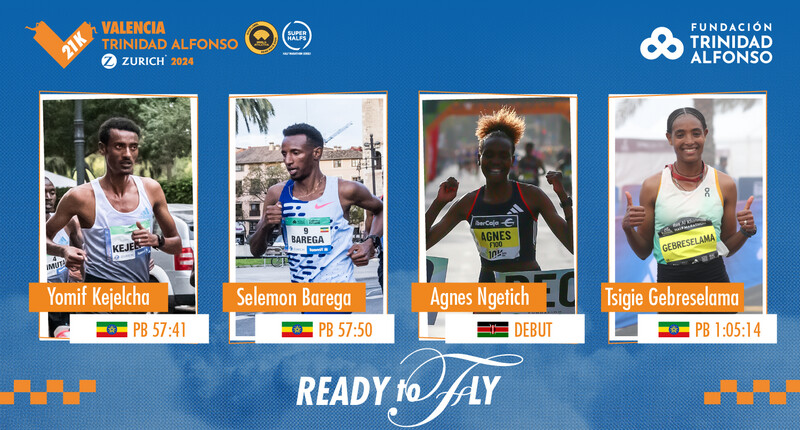
The race, organized by SD Correcaminos and Valencia City Council, still holds the women’s world record (Gidey, 1:02:52 in 2021) and the second fastest time in the world (Kandie, 57:32 in 2020), and will be looking to continue improving on these records this year in a half marathon in which eight of the top ten fastest times over the distance have been achieved.
In the men’s category, Ethiopians Yomif Kejelcha (57:41) and Selemon Barega (57:50) will compete with Kenya’s Daniel Mateiko (58:26) to be the fastest over the distance. The level of European runners is also high, with the presence in Valencia of athletes such as Samuel Barata (Portugal), Pietro Riva (Italy), Amanal Petros (Germany) and Emile Cairess (Great Britain), who will be joined by the Spanish elite soon to be confirmed.
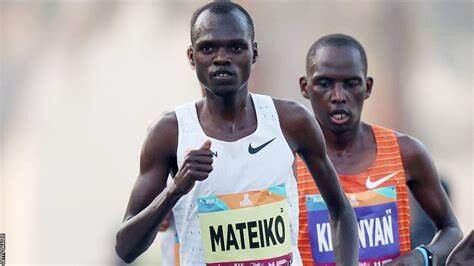
And in the women’s category, the Valencia Half Marathon (which has the two fastest times in history) will focus on Kenyan runner Agnes Jebet Ngetich, who will make her debut over the distance in Valencia, the city where last January she broke the world record in the 10K Valencia Ibercaja by Kiprun (28:46, also setting the world record for 5K with her 14:13). Ethiopia’s Tsigie Gebreselama and Kenya’s Lilian Kasait Rengeruk and Catherine Amanang’ole will be her main rivals vying for victory.
Marc Roig, coach of the event’s international elite athletes, assessed this list as “the best half marathon this year, with high level duels that aim, once again, to achieve 57-minute performances by several athletes. And a clear challenge to the stopwatch in the women’s race. Never before has a debutant taken to the start line who has run a 10K in under 29 minutes. We are really looking forward to seeing how fast the race will be on October 27th”.
(09/09/2024) ⚡AMP
by AIMS
Valencia Half Marathon
The Trinidad Alfonso Valencia Half Marathon has become one of the top running events in the world. Valencia is one of the fastest half marathon in the world. The race, organized by SD Correcaminos Athletics Club, celebrated its silver anniversary in style with record participation, record crowd numbers, Silver label IAAF accreditation and an atmosphere that you will not find...
more...I Tried Training for a Half-Marathon and Failed—These Are the Five Things I'll Do Differently Next Time
Here's how I plan to prepare to run a successful half-marathon after learning the hard way.
As a kid, I always looked up to my older brother as the embodiment of athleticism. He was a great runner, and his achievements in the world of competitive racing were awe-inspiring. With each race he conquered, he fueled my desire to follow in his footsteps. But there was one small problem: I didn’t seem to have inherited the natural running gene that he had, and my short-lived eighth-grade cross-country record was proof of that.
However, as an adult, I wanted to give my running career another shot, so I challenged myself to run a half-marathon. Unfortunately, I lost the motivation to train and gave up around the 8-mile mark, never making it to race day. Looking back on my failed attempt, it's evident there were a few key errors from the start that left me struggling to find my stride. While I’m not actively training, I run regularly and finishing a half-marathon is a goal of mine in the future. Here are the five things I'll do differently the next time I train for a half-marathon.
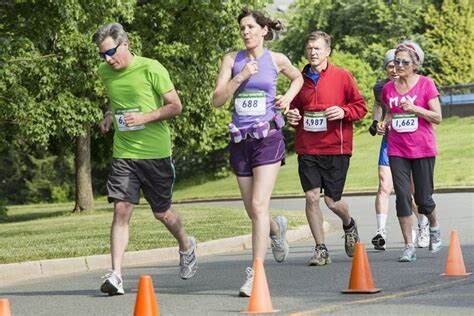
1. Stay Hydrated
One of my biggest missteps while training was underestimating the importance of hydration. I simply didn’t drink enough water before, during or after my runs. I’d often finish my runs feeling drained, dehydrated and unable to recover as quickly as I could have. When you exercise and sweat, your body loses electrolytes and water, so it’s important to replenish those stores by drinking water. By not staying hydrated, I ended up with a weaker workout.

To ensure I stay hydrated when I train again for a half-marathon, I'll be relying on my trusty Stanley water bottle. It holds 40 ounces of water, so I don't have to worry about constantly filling up throughout the day. Currently, I fill my water bottle up before bed and place it on my nightstand so I start hydrating as soon as I wake up. This is a habit that leaves me more hydrated overall, and I plan to continue doing this the next time I train. I’ll also be incorporating electrolyte-rich beverages like Gatorade into my post-run routine. It's packed with sodium and potassium, two essential minerals that are lost while you sweat. With my new approach toward hydration, I already feel better during my runs and know that I’ll see the same results when I start training again.
2. Eat a More Balanced Diet
When I first attempted to take running seriously, I wasn’t fueling my body properly. As much as I love McDonald’s Free Fries Friday, I quickly realized habits like these weren’t helping me accomplish my goals. It became evident that a balanced eating pattern with complex carbs and protein was a missing piece of the puzzle. Complex carbs like whole grains, fruits and vegetables have become my go-to choices. They provide a steady release of energy, which helps support stable energy levels and avoid those dreaded spikes and crashes during longer runs. Mindfully incorporating complex carbs into my diet once I start training again, especially before long workouts, may make a noticeable difference in my energy levels.
Meanwhile, incorporating enough protein into my diet has been crucial for my recovery after runs. Often if my legs were sore, I would use it as an excuse to skip a workout and take a recovery day. But the soreness I was experiencing was from pushing my muscles to grow and work harder than they were used to. Eating enough protein is important to ensure you’re getting the amino acids that may help the maintenance, repair and growth of muscles. Next time around, by mindfully eating a balanced amount of protein, I can improve my endurance during training.
3. Get a Running Buddy
One practice that I started during my weekly runs, and plan to add when I train for a half-marathon again, is running with a buddy. Running can sometimes feel like a solitary endeavor, but having someone by your side can make it so much more motivating. The joy of sharing the experience with someone else, specifically my roommate, has turned each dreaded workout into a fun, social activity. And while having fun is more than enough reason to run with a partner, we also help each other stay motivated and accountable. Plus, it’ll be fun to share the finish line with someone I know!
4. Switch Up Running Locations
During my first attempt at training, I found myself opting for the treadmill located in my apartment's fitness center. It was undoubtedly convenient, and I didn’t have to face the crisp morning air. But running indoors quickly became monotonous and sucked all the joy out of my workout—that’s why I’ll be running outside next time. Whether it’s a scenic trail, through a beautiful park or simply just around my neighborhood, the landscape changes with every step and makes running feel more special. Plus, the different terrain offers a variety of challenges as the elevation rises and falls. Running outdoors also keeps my mind engaged by the evolving environment. When I enjoy my surroundings more, I become less focused on the distance left to go and more entertained by the experience of my run. I think this simple change will make the 13 miles fly by.
5. Change My Mindset
During my treadmill workout phase, I used to be fixated on maintaining a specific pace, and if I fell short, I’d get frustrated. However, my perspective on running and training underwent a significant shift, and I have come to realize that mindset is everything. Next time around, I will go in with the mindset that true pride isn’t found in the digits on the stopwatch, but in the commitment, dedication and mental strength that is poured into training. I understand now that chasing a speed is not an accomplishment. Shifting to this perspective will be a challenge, especially for someone with a competitive nature like mine, but it’ll allow me to savor each run and recognize that the ultimate reward is the personal growth I’ll experience along the way.
(09/09/2024) ⚡AMPby Jessica Ball, M.S., RD
Tallinn Marathon win goes to Kenya
The Tallinn Marathon, held on Sunday, was won by Kenyan runner Samwel Kiptoo. Tiidrek Nurme was crowned Estonian champion, finishing fourth overall.
Thirty-year-old Samwel Kiptoo finished the race with a time of 2 hours, 13 minutes and 48 seconds. The last time a Kenyan marathoner did not win in Tallinn was in 2018 when Roman Fosti claimed first place.
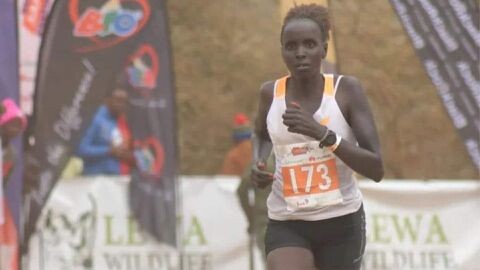
The second to cross the finish line was Ethiopian Geleto Barecha Tolosa, trailing the winner by 22 seconds. Kenyan Ishmael Chelanga Kalale came in third, finishing 51 seconds behind Kiptoo.
Tiidrek Nurme, running his first marathon on home soil, was the fastest Estonian, placing fourth overall with a time of 2:15:04. He missed out on third place by just 25 seconds.
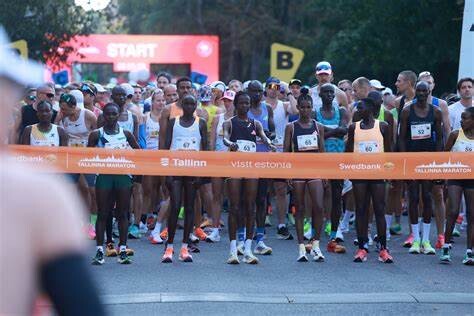
Leonid Latsepov secured the silver medal in the Estonian championships, finishing fifth overall (+2:56). Bert Tippi took the bronze, placing eighth overall (+13:54).
In the women's race, Kenyan runners swept the podium. Mercy Kwambai claimed victory with a course record of 2:31:09, breaking the previous mark set two years ago by fellow Kenyan Pauline Thitu by 20 seconds. Kwambai also finished 10th overall.
Hildah Jepkogei Cheboi took second place with a time of 2:31:29, while Euliter Jepchirchir Tanui secured third with a time of 2:31:48.
(09/09/2024) ⚡AMPby ERR News
Tallin Marathon
The Tallinn Marathon has won a sure place in the competition calendar of runners and has become an attractive destination for running tourists looking for new experiences. About 20 000 running enthusiasts from 56 different countries participated in the 2017 event. As a tradition, the marathon will take place in every second Sunday of September, this year 9th of September,...
more...Kerr smashes 43-year record in winning 5th Avenue Mile
Josh Kerr won the 5th Avenue Mile race in New York for the second straight year and smashed the 43-year-old course record.
The Scot came home in three minutes 44.3 seconds, more than three seconds faster than the previous best set by Sydney Maree in 1981.
Just three days after finishing fifth in the Zurich Diamond League meeting, the world 1500m champion and Olympic silver medallist finished ahead of American Josh Hoey and Kenyan Amon Kemboi.
Kerr, 26, now holds two of the three fastest times in the race's history.
(09/08/2024) ⚡AMPHey New Runners, Here’s How to Determine Your Goal Pace for Different Workouts
Practicing different paces can provide the key to unlock your best performances.
Most runners think pace is important because of PRs and faster race times, but paces have more significance than just those milestones. In fact even if your goal is to run longer distances or remain a runner for the rest of your life, it’s helpful to get to know your training paces.
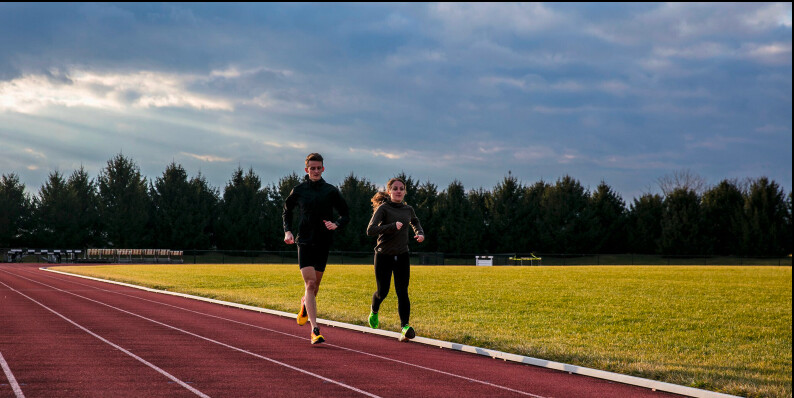
That’s why, according to run coaches, you will earn big rewards—both in terms of fitness and mental outlook—if you figure out how to calculate your paces when you run.
“If you can run at the right pace, you’re going to run the right way and feel the right way,” Nike head running coach Chris Bennett tells Runner’s World. “And if you feel the right way, you’re going to want to do it again. That’s the most important thing.”
Whether you include speed workouts in your weekly schedule or only stick to zone 2 runs, you have an ideal pace range for almost every workout and distance you run. Let’s break down the various paces you should know and how to cue those up during various workouts.
The Benefits of Getting to Know Your Running Paces
Pace is measured in units of time per unit of distance, i.e., minutes per mile, and that pace will vary depending on the distance you’re running. For example, your fastest marathon pace will obviously be slower than your fastest 5K pace.
That’s why, when you use a run app or training plan, the program will suggest you do specific runs at a specific pace or even a variety of paces. For example, a speed workout may include short intervals at mile, 5K, or 10K paces.
Whether you train for 5Ks or marathons, or whether you run a few times a week with no particular distance in mind, running at the right pace for any given workout makes it more likely that you will better target physiological changes, such as boosting your VO2 max, Jeff Gaudette, founder of Runners Connect, tells Runner’s World.
“Paying attention to your pace allows runners to properly hit the effort and outcome they’re targeting,” says Gaudette. “Newer runners, for example, will find that if they pay attention to pacing, they can run farther or finish runs not completely exhausted.”
How to Calculate Your Paces
If You’ve Raced...
If your training plan or app suggests you use a specific pace during a run, how will you know what pace to use? Well, if you have some 5Ks or 10Ks under your belt, you can average your paces from those events and go from there.
This also works if you’ve run a marathon and a training plan calls for a long run at below marathon pace.
You can also plug any race distance and your time into an online pacing tool, such as the Runner’s World training pace calculator, to find your ideal pace for various distances.
But what if you haven’t raced or if you’re ready to race a new distance?
If You Haven’t Raced...
A simple way to estimate your 5K and 10K paces is to do a mile time trial on your own, says Gaudette. “Races provide the best data point, but this is the next best thing,” he explains. “And the nice part of doing it this way is you can retest every few weeks. The more you do it, the more you’ll learn to pace yourself.”
To do a time trial, head to a track or an open road with a smartwatch or fitness app tracking your distance. Warm up for at least 10 minutes at an easy pace (you can easily hold a conversation as you run). Then “race” one mile.
Gaudette advises running the first half at a difficult pace (think: you can barely speak a sentence) and then running the second half as fast as you can. This is your mile time.
Now, plug that number into the Runner’s World training pace calculator, or simply add 40 seconds to your mile time to approximate your 5K pace and then about 60 seconds to get your 10K pace, says Gaudette.
Other pace calculators will offer estimates for how long it might take you to complete different race distances. For example, if you plug one hour of run time and a distance of five miles into the Runner’s World pace calculator, you will get estimates like running 10 miles in 2 hours, a half marathon in 2:37, and a marathon in 5:14.
Once you know your mile pace and the relative paces for longer distances, you can also play with the numbers in these online tools to see what your targeted paces need to be during training runs to hit different goals during races.
Finally, you ca use the run/walk pace calculator to find out how to pace your intervals when using the run/walk method so you hit your goals.
How to Connect Your Paces to Your Effort
While paces are important, Bennett says you want to focus more on effort—or feel—during some of your runs, rather than numerical metrics every time you head out. That’s because several factors play a role in what exact pace is best for you on any given day and for any given workout, he explains.
“Depending on where you are in your running journey or training cycle, what the weather is, what elevation you’re at, what you did yesterday, the numbers aren’t always the same,” says Bennett. “There’s some gray area on either side of what your 5K pace or effort should be. It’s dependent on a lot. That might seem overwhelming to a runner, but really, it should be the opposite. It gives you the freedom to step back and ask yourself: How does this feel?”
While it’s helpful to use your 5K and 10K paces as a baseline metric, Bennett believes runners benefit when they pay more attention to their effort level than specific numbers. To do this, represent your effort as a number, 1 through 10 (commonly referred to as your Rate of Perceived Exertion or RPE). For example, your 10K pace will feel like a 6 or 7 RPE, while your 5K pace will feel more like 7.5 or 8.
To help runners dial in that effort even more personally, Bennett suggests using a couple words to describe what a pace feels like. Maybe your 10K effort feels strong and controlled, for example. Then, play on that description to dial into your 5K effort. You are kicking it up just a notch, so your 5K effort may feel fast and controlled.
“If you do this consistently and you keep a running log or keep metrics on your phone, after a couple weeks you can look back and find when I’m feeling good, this is roughly my pace on an easy run,” Bennett says. But then on stressful days, maybe that pace is a little slower and on days you’re well recovered, maybe it’s a little faster.
How to Use Your Paces to Improve Your Runs and Races
“Every run has a purpose,” Bennett often says, and connecting the right pace to your effort level helps you find that purpose. For example, if you are trying to improve your overall half marathon race time, some of your training runs might include speed intervals that, over time, will help you become more efficient at running faster. That is, it won’t feel as hard to run fast.
With that in mind, it helps to understand the variety of runs there are on a training plan, because each of them requires a different effort and, therefore, pace.
For example, easy runs are for going at a relaxed pace and building mileage; you should run them at a conversational effort and end feeling like you could keep going. Ideally, you’ll do these based on effort more than pace, but when you do check out your paces, you’ll likely find a big range, says Gaudette, and that’s okay.
In fact, your easy effort paces may change based on your mood and your energy level, among other variables. But if you notice that your easy pace is creeping up past your typical range, slow down. When you’re running faster than you should for any given outing, says Bennett, you’ll likely wind up stopping early and feeling defeated or even overtraining.
“It doesn’t matter if you’re brand new to running or if you’re heading to the Olympics, the majority of your running is easy runs,” says Bennett. “If you’re not nailing the easy runs, you’re not going to be nailing the harder stuff.”
As for “the harder stuff,” like speed workouts, pace can play a bigger role. Short intervals (think 400 meters) are designed to get you faster and allow you to practice running at paces above your goal race pace. You might clock these at your 5K pace or faster. Longer interval sessions, like mile repeats and tempo runs, help you improve your speed endurance, or holding onto a faster pace for longer. You might run these around 10K pace.
Over time, the combination of all these runs and mix of paces will improve your top speed, as well as your easy pace (while still feeling easy). That’s why it is so helpful to keep track of your paces with notes about your efforts and feelings about those efforts. Plus, it helps you notice and celebrate your progress.
(09/08/2024) ⚡AMPby Runner’s World
Tola and Obiri lead elite fields for New York City Marathon
Organisers of the 2024 TCS New York City Marathon have revealed a world-class line up for this year’s World Athletics Platinum Label road race on 3 November, led by defending champions Tamirat Tola and Hellen Obiri.
Since winning last year in a course record of 2:04:58, Tola won the Olympic title in Paris in a Games record of 2:06:26. What made his feat all the more impressive is that he was only drafted into the Ethiopian team two weeks before the Games, having initially been named as a reserve.
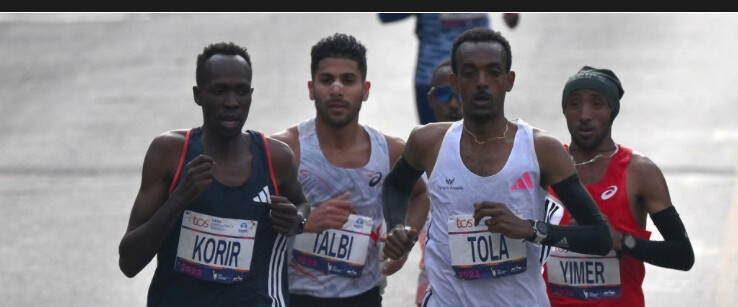
“I’m excited to defend my title in New York, especially coming off an Olympic-record marathon performance,” said Tola. “The hilly course and crowds in Paris definitely prepared me well for the bridges and spectators in New York, where maybe I can go even faster this year.”
Two-time Olympic medallist Bashir Abdi will also be one to watch; the Belgian earned silver at the recent Olympics, having taken bronze at the Tokyo Olympics in 2021 and at the 2022 World Championships.
Three past winners – all from Kenya – are also in the field: 2022 champion Evans Chebet, 2021 winner Albert Korir, and 2019 and 2017 victor Geoffrey Kamworor. Chebet has twice won the Boston Marathon, and has finished first or second in 13 marathons. Kamworor has made it on to the podium in all four of his New York Marathon appearances.
Fellow Kenyan Abel Kipchumba, who won this year’s NYC Half Marathon, will be making his New York City Marathon debut.
The US charge is led by Conner Mantz and Clayton Young, who finished eighth and ninth respectively in the Paris Olympic marathon.
Women’s Open Division
Obiri is a three-time Olympic medallist and seven-time world medallist. Last year the Kenyan became the first woman in 34 years to win both Boston and New York in the same calendar year. So far this year, she retained her Boston Marathon title and went on to earn bronze in the Olympic marathon.
“There’s no place like New York, and I am so ready to defend my title,” said Obiri. “I have been racing very well on the roads in the US, and I hope I can have another good day that sees me in contention once we enter the final stages in Central Park.”
Fellow Kenyan Sharon Lokedi, the 2022 NYC Marathon winner, will return after finishing third last year and fourth in the Olympic marathon in Paris. The Kenyan delegation will also include 2010 champion Edna Kiplagat, four-time Olympic medallist Vivian Cheruiyot, and Sheila Chepkirui, who owns the fastest personal best in the field.
Ethiopia’s Tirunesh Dibaba will make her New York City Marathon debut and is one of the world’s most accomplished long-distance runners as a three-time Olympic and 16-time world champion. She will be joined by compatriot Senbere Teferi.
Dakotah Lindwurm, the top US finisher in the marathon at the Paris Olympics, will lead the US contingent.
Elite field
WomenSheila Chepkirui (KEN) 2:17:29Tirunesh Dibaba (ETH) 2:17:56Vivian Cheruiyot (KEN) 2:18:31Senbere Teferi (ETH) 2:19:21Dera Dida (ETH) 2:19:24Edna Kiplagat (KEN) 2:19:50Eunice Chumba (BRN) 2:20:02Sharon Lokedi (KEN) 2:22:45Hellen Obiri (KEN) 2:23:10Fatima Gardadi (MAR) 2:24:12Kellyn Taylor (USA) 2:24:29Fabienne Schlumpf (SUI) 2:24:30Aliphine Tuliamuk (USA) 2:24:37Dakotah Lindwurm (USA) 2:24:40Lily Partridge (GBR) 2:25:12Jessica McClain (USA) 2:25:46Des Linden (USA) 2:25:55Tristin Van Ord (USA) 2:25:58Khishigasaikhan Galbadrakh (MGL) 2:26:32Maggie Montoya (USA) 2:28:07Katja Goldring (USA) 2:29:01Savannah Berry (USA) 2:29:13
MenEvans Chebet (KEN) 2:03:00Gabriel Geay (TAN) 2:03:00Bashir Abdi (BEL) 2:03:36Tamirat Tola (ETH) 2:03:39Geoffrey Kamworor (KEN) 2:04:23Abdi Nageeye (NED) 2:04:45Addisu Gobena (ETH) 2:05:01Abel Kipchumba (KEN) 2:06:49Albert Korir (KEN) 2:06:57Conner Mantz (USA) 2:07:47Clayton Young (USA) 2:08:00Rory Linkletter (CAN) 2:08:01Callum Hawkins (GBR) 2:08:14Ser-Od Bat-Ochir (MGL) 2:08:50Elkanah Kibet (USA) 2:09:07Noah Droddy (USA) 2:09:09Jonny Mellor (GBR) 2:09:09Jared Ward (USA) 2:09:25Colin Bennie (USA) 2:09:38Futsum Zienasellassie (USA) 2:09:40CJ Albertson (USA) 2:09:53Nico Montanez (USA) 2:09:55Yuma Morii (JPN) 2:09:59
(09/08/2024) ⚡AMPby World Athletics
Great North Run titles for Ngugi-Cooper and Kipchumba
It was a similar story at the Great North Run at a wet Tyneside on Sunday (8), with contrasting half marathon wins secured by Kenya's Mary Ngugi-Cooper and Abel Kipchumba. The women produced a thrilling mass finish at the World Athletics Label road race, but from the start there was only one man in it.
Six women dominated from start to finish: Kenya’s Ngugi-Cooper, Sheila Chepkirui and Vivian Cheruiyot, plus Ethiopia’s Senbere Teferi and Megertu Alemu and Britain’s Eilish McColgan, whose mother Liz won this race when it was the World Championships in 1992.
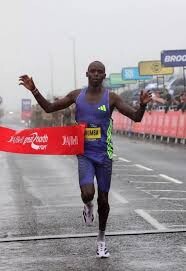
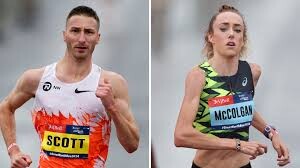
Ngugi-Cooper and Chepkirui led from Teferi and Alemu, with former winner Cheruiyot and McColgan forming the lead pack across the Tyne Bridge and through the first mile in 5:05. The sextet maintained that pace for the entire race, passing 5km in 16:03, 10km in 32:20 and 15km in 48:20. All looked comfortable as they swung downhill on to the coast road and the final mile.
The experienced Cheruiyot, who is now 40, moved up, but then was the first to drop when the others responded. Five were in contention with 200m to go, then it turned into a fight between Ngugi-Cooper and the Ethiopian pairing. The win went to the 35-year-old Kenyan, who as Mary Wacera was world half marathon runner-up a decade ago.
“It was mentally tough because everyone was there,” she said, referring to the pack. Ngugi-Cooper has strong British connections. Her coach is Steve Cram, she has a British husband, Chris Cooper, and spends a lot of the year in Leeds. “I guess that helped,” she joked, referring to the wet conditions.
While Ngugi-Cooper had company for 13.1 miles, Kipchumba was alone, apart from his watch which he checked at the mile and 5km points, so clearly signposted on the route from Newcastle to South Shields. He would have known that he passed 5km in a snappy 13:37.
The Kenyan, who only arrived in town on Saturday due to a two-day visa delay, pulled clear in the third mile with Sondre Nordstad Moen giving chase. At 10km, Kipchumba was 25 seconds up (28:01 vs 28:26), but both Moen and 2021 winner Marc Scott (28:51) weren’t losing too much more ground. That picture was only temporary as Kipchumba surged again past halfway. After that, the most significant development was that Scott caught Moen in the 12th mile.
Up front, Kipchumba looked more like a middle-distance runner with the finish in sight, and clearly knew that a sub-one hour was in prospect. He covered the last 176m from 13 miles in 24 seconds to clock 59:52.
“I decided to move early, and then I maintained,” he reflected, summing up the race in a sentence.
(09/08/2024) ⚡AMP
by Mark Butler for world Athletics
Chepkorir and Kitiyo top Prague 10km
Kenya’s Diana Chepkorir and Dennis Kibet Kitiyo claimed wins in contrasting styles at the Birell 10K Race, a World Athletics Elite Label road race, in Prague on Saturday (7).
Kitiyo kicked away from his rivals in the closing stages to win the men’s race in 27:17, while Chepkorir solo ran her way to victory in the women’s race, clocking 30:12.
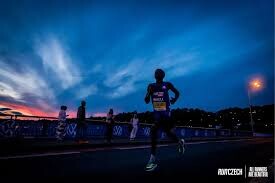
They each led a Kenyan top two, as Kitiyo was followed by Vincent Kibet Langat (27:25) and Chepkorir by Miriam Chebet (31:28).
Ethiopia’s Tadese Worku had taken control of the men’s race after the pacemaker stepped aside after around 10 minutes of running, and both Worku and Kitiyo formed part of a breakaway group of four by the halfway point, which was passed in 13:29.
Kitiyo saved enough for a final surge and managed to create a gap on his rivals, eventually winning by eight seconds. Worku was third in 27:32 and Rodrigue Kwizera of Burundi fourth in 27:39.
Chepkorir led the women’s race from gun to tape. She had a lead of 36 seconds by 5km, which she reached in 14:43, and powered on to win by 76 seconds.
Ethiopia’s Lemlem Nibret followed Chepkorir and Chebet to claim third place in 32:20, while Britain’s Samantha Harrison was fourth in 32:47.
(09/08/2024) ⚡AMP
Vitaliy Shafar wins Jungfrau Marathon
4000 runners start at the Jungfrau Marathon. The winner crossed the finish line after just over three hours.
Vitaliy Shafar mastered the 42.195 kilometers and 1953 meters of altitude the fastest and took victory at the Jungfrau Marathon 2024. The Ukrainian mastered the route from Interlaken to Kleine Scheidegg in 3.04.10 - the last meters on what is probably the steepest red carpet in the world and to great applause.
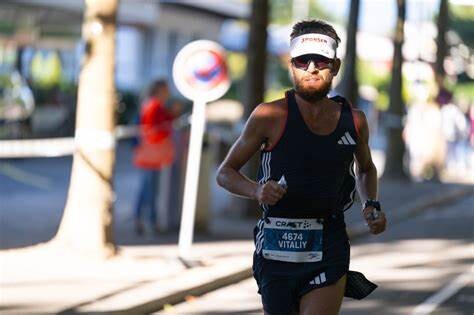
Third and thus the best Swiss was Dominic Rolle. In the women's race, the victory went to Susanna Saapunki. The Finn is not only a good skier, she has also already scored World Cup points in cross-country skiing.
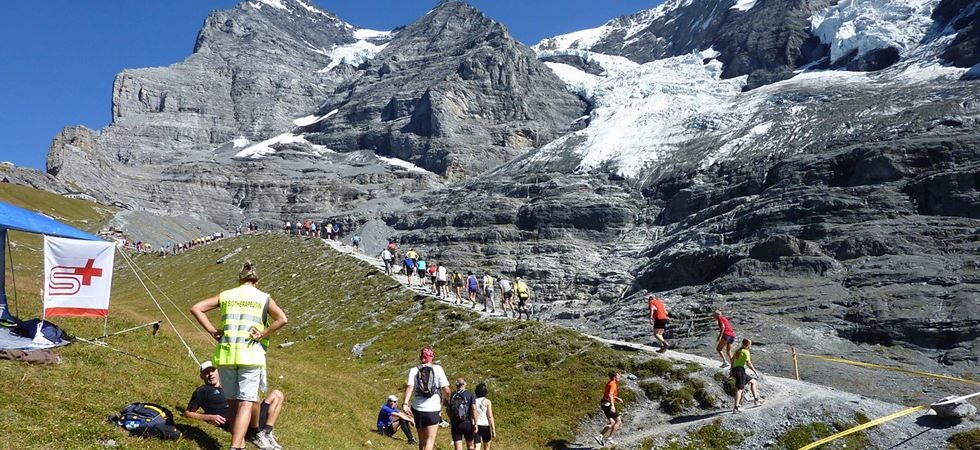
"The Swiss government wishes you all the best, enjoy the run in this wonderful weather," said Federal Councillor Albert Rösti into the microphone before he gave the go-ahead with a shot. The participants stood in individual sections: the elite at the front of the start gate and those who will probably reach the finish at 2320 meters the latest, further back on the Höheweg.
None of them are completely alone on the road: 1500 helpers are on duty, 160 medical professionals, there are 22 first aid stations and 22 defibrillators. Food is available at 22 stations. On the way, they occasionally see relatives who make clever use of the Jungfrau Railways railway system. And the population of the transit communities gives courage with applause.
(09/07/2024) ⚡AMPby Samuel Günter
Jungfrau Marathon
The Jungfrau-Marathon presents the most beautiful marathon course in the world - marvelous mountains scenery and the excellent change of the landscape between the start in Interlaken and the finish on Kleine Scheidegg. The difference in altitude of 1829 meter (6000 feet) is a challenge for everybody. There is no Marathon in Europe with such great dimensions. Eiger, Mönch and...
more...Runners: how to fix your tummy troubles
Have you ever been mid-run, feeling in the flow and bouncing along happily, when suddenly you feel stomach pain and an urgent need for the nearest bathroom? You’re not alone. Exercise-induced gastrointestinal (GI) distress (sometimes referred to as “runner’s tummy”), which may cause cramping, diarrhea and/or nausea, is a common digestive issue experienced by athletes of all ages and abilities, and can significantly impact your ability to perform at your best.
The good news is that, by understanding the reasons behind your struggles and taking simple steps, you can get control of GI issues, keep your digestive tract happy and finish that run without needing a bathroom stop.
Why does it happen?

One study found that exercise-induced GI distress was prevalent in 30 to 90 per cent of younger people who ran long distances. The reasons for it vary among individuals (and even among your runs), but here are some common causes:
The impact of high-intensity running can physically jostle the stomach, leading to lower-GI distress, such as diarrhea and bloating.

As you exercise, the gastrointestinal tract changes the way it absorbs and regulates water and electrolytes, especially in hot weather. This means it can prioritize maintaining hydration, which is key, but possibly at the expense of digestion.
Gut hormones that influence digestion, such as leptin and ghrelin, are released in response to exercise. These changes are important for energy availability and performance, but can lead to GI distress.
During exercise, the muscles used to run receive more of the blood supply to meet their higher nutrient and oxygen demands, leaving the gastrointestinal tract with less blood flow. This reduction can lead to delayed gastric emptying, which is the process that moves food into the small intestine from the stomach.
Dehydration can increase the risk of, or worsen, existing symptoms (such as nausea and diarrhea).
Exercise can weaken the lower esophageal sphincter, which prevents acid reflux, possibly leading to heartburn during exercise.
How can I prevent it?
You may need to try different approaches if you regularly experience GI distress on a run.
One strategy is to plan your meals around your runs, to ensure appropriate fuelling. Eating foods that are high in fibre, fat, sugar alcohols or protein right before your run can increase the risk of GI distress, because they take longer to digest. Also, consuming too much sugar in one go, such as a concentrated gel with a sports drink, without prior gut training, can be overwhelming for your digestive system and draw too much water into the gut, leading to diarrhea. (It is best to take gels with water.)
Underfuelling may also be a risk factor. Failing to meet your overall daily energy needs may affect GI transit time, which can lead to digestive issues. So instead of skipping the pre-run snack because you think it is causing the symptoms, you might want to think about increasing your overall energy intake to resolve your tummy issues.
Practise gut training
Just as you would slowly build up mileage, you want to slowly train your gut to handle fuel before and during running. Practise eating snacks before and during your workout, and gradually build it up to your goal level. For example, start with half a banana and slowly increase to the point where you may be able to manage a whole banana on an English muffin with honey (which could be up to 60g of carbohydrates).
Some great snacks to try pre-run:
Graham crackers
Applesauce
Gels or chews
Banana
Dates
Dry cereal
Granola bar
English muffin or toast with jelly
Gummy candy
Lauren Charlton is a competitive distance runner and future sports dietitian who’s passionate about keeping runners in the sport for the long game.
(09/07/2024) ⚡AMPby Lauren Charlton
If Running Uphill Feels Like Torture, Make These Expert-Approved Adjustments
Try these expert-approved tips to make running uphill easier and more enjoyable.
I love to run—but I detest running uphill. When I hit an incline, my legs burn, I get acid reflux, and I often need to take a break to catch my breath. Jogging over hills is so terrible for me that I exclusively map out flat routes and sign up for races with minimal elevation, if any.
As it turns out, there’s a legitimate reason people struggle with hills. Every single one of us has a unique running style, or running fingerprint, as John Mercer, a professor of Kinesiology and Nutrition Sciences at the University of Nevada, Las Vegas, calls it.
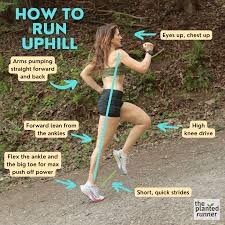
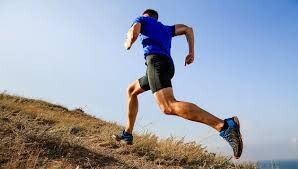
I, for example, have a long, lanky strut while my husband hops up and down like a kangaroo. When you run uphill, your entire running style changes. Maybe you hunch over or flail your arms or stick your butt out. As a result, you engage different muscles that may not be in tip-top shape, such as your hip flexors, hamstrings, and the muscles that support your knee joints.
This, coupled with the fact that you’re now working against more gravity, is why hills can be so brutal. “Instead of just needing to propel yourself horizontally, you’re also essentially climbing a flight of stairs. So, yeah, it is hard,” says Milica McDowell, a certified exercise physiologist and vice president of operations at Gait Happens.
But hills don’t have to be agonizing. There’s a method to the madness of hill running, and if you go about it correctly, you might end up enjoying it.
According to McDowell, when you jog up a hill, make sure to strike the ground with the middle or ball of your foot, not your heel. A heel-first approach causes you to lean back, she says, which throws off your center of gravity and acts as a breaking mechanism.
This slows you down, making it tougher to get anywhere because you’re breaking every step, McDowell says. Landing on your mid-foot shifts your center of gravity forward, which propels you up and over the mound. “You want to feel like you’re falling up the hill,” she says.
When I’m on a steep section of a trail, I tend to collapse over my torso to suck in more air, but according to Mercer, this move makes the body work even harder. This is proof that gravity is at play. It can feel like you’re carrying an extra four pounds on a slight incline, Mercer says. But a super steep hill? That can feel like an added ten to 20 pounds of extra weight pulling you down.
The key is to lean forward, but not so much that you’re crunching over your stomach. Look ahead, not down at the ground, and keep your shoulders in front of your hips, Mercer says. Lift your ribcage up and out of your pelvis and engage your core by pulling your belly button back to your spine. This will fix your posture, pull back your center of gravity, and make it less torturous to get up the hill, McDowell says.
Uphill running puts more demands on your joints and muscles, per a 2023 research study, so it might feel like your workout suddenly gets more intense when you reach an incline. One trick is to slow down—assuming you’re not in a timed race.
If you try to stick to your normal pace, the metabolic effort needed to climb the hill will dramatically increase. If you often feel winded when you inch over hills, try walking instead. Mercer says this can help you avoid burning out, so you don’t have to bring your entire workout to a screeching halt to recoup for a few minutes. Don’t be fooled—taking it down a notch when going uphill does not mean you’re getting less of a workout. Because trekking up a hill automatically intensifies the activity, your energy output, even if you’re going slower, is more or less the same as it would be running on a flat path.
At the same time, you should pick up your cadence. Trade in the longer steps for shorter, quicker strides. McDowell recommends upping your step cadence by up to 25 percent. So, if you were taking roughly 100 steps a minute, shoot for 125. But keep this in mind: you’re taking more steps, but you want each step to be shorter and cover less distance, so you’re not full-on sprinting uphill. “It’s the turnover rate of your feet that’s faster, not your whole body speed,” she says.
Taking small, swift steps means your feet spend less time on the ground—which decreases impact forces on your knees, hips, and ankles—and helps you run more efficiently, McDowell says.
Anything you can do to propel your body forward will help you get over the hill, which is why McDowell puts her arms to work. She recommends swinging your arms faster and farther out to take some pressure off of your legs.
“Your arms create momentum, and that momentum is part of the gas pedal that pushes you up the hill,” she says. If you can, swing them 25 percent faster than when you’re going downhill or on a flatter path. “It makes a huge difference,” McDowell says.
When you work out, you suck in oxygen, which provides energy to your muscles. The harder you run—à la trotting up a killer mountain—the more oxygen your body needs. “Your body is like, ‘I need more blood in these muscles, I need more oxygen in these tissues’” McDowell says. But you probably aren’t getting the oxygen you need if you’re short of breath.
The fix? Slow down your breathing. McDowell uses a 2:2 breathing pattern where you inhale for a count of two (or about the time it takes you to take two separate foot strikes), then exhale for two. “That’s going to drive down your breathing rate, which will decrease your heart rate, which helps lower stress,” McDowell says, all while increasing the amount of oxygen in your body.
I always get a bad attitude when I see a hill. I think, “This is going to suck,” and then guess what: it does. So, Mercer says that the best thing you can do is have the right mindset.
Research shows that a positive outlook can improve your performance and help you accomplish your fitness goals (including that daunting hill ahead).
According to a study published in 2019, when Olympic and Paralympic athletes were asked, “To what do you attribute your success?” they didn’t reference how toned their legs were or how they built up their glute muscles. They mentioned their positive mindset—how resilient and hungry they were for the competition. Their advice for other athletes? Believe in yourself and embrace the challenge.
Getting over a hill is a mental game. Accept that your pace will change or that the next 10 minutes might be extra tough. But that’s okay—you’ll get through it.
(09/07/2024) ⚡AMPby Outside Online
7 Marathons in 7 Days on 7 Continents: Is There Such a Thing as Racing Too Much?
Don’t let your bucket list lead to burnout.
Setting running goals is typically a good thing. Goals keep you engaged and on track. They shape your training with purpose, structure, and accountability. However, sometimes an endless list of goals can backfire. More races. More consecutive events. More miles. It leaves us wondering: How much racing is too much racing?
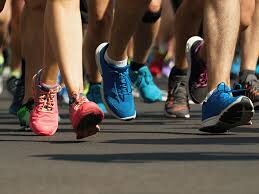
It’s healthy to test your limits and perceived boundaries, but running half marathons and marathons takes a toll—physically, mentally, emotionally, socially, and financially. Finding the sweet spot between your comfort zone and the danger zone is tricky.

So, we chatted with a few experts on setting values-driven goals, being ambitious but realistic, and using social media for support (beyond that quick hit of dopamine). Before you tackle your racing bucket list, read on.
How much racing is too much racing?
According to the experts, there’s no definitive answer to the “too much racing” question. “It depends on the person and what your short and long-term goals are and your current fitness conditions,” Raj Hathiramani, certified running coach at Mile High Run Club in New York City, tells Runner’s World. Even a series like the World Marathon Challenge, in which participants jet between all seven continents, completing a different marathon every day for one week straight, is doable if you’re prepared.
That said, training for an aggressive racing schedule requires time (for both running and recovery) and resources, like coaching, gym access, and funding to cover travel, race fees, childcare, and other family and household-related support.
“This is where I think a lot of people get it wrong,” Todd Buckingham, Ph.D., exercise physiologist at PTSportsPRO in Grand Rapids, Michigan tells Runner’s World. “They want to do a marathon or an Ironman, but they only have, say, three hours a week to train. That’s not going to be feasible.”
Buckingham points out that your training and race schedule needs to fit into the reality of your life and not the other way around. Otherwise, you risk overextending yourself and heading into events undertrained, which can lead to disappointment and injury.
How do you determine how much to race?
1. Start with your why
Before you start registering for races and scheduling training runs, ask yourself this question: “Why am I doing this?” There’s no right or wrong answer, but if you’re drawing a blank, or the big pay-off is external validation (are you already mentally editing your highlight reel?), you may need to re-evaluate your goals.
That’s because healthy, worthwhile goals should align with your personal values, according to Mike Gross, Psy.D., head of sport psychology services at Princeton University in Princeton, New Jersey. “Let’s get a sense of your ‘why’ and be really clear on that,” he tells Runner’s World. “Why in your heart do you want to do this?” he asks, noting that your why can serve as a compass that guides your actions and keeps you focused and on course in the face of obstacles.
If you don’t understand your reasons for doing something, you’re more likely to give up or follow through just for the sake of getting it done. “That’s when you’re just kind of white-knuckling it through the process. You’re starting to notice there’s no enjoyment in it, and that’s when some of the burnout symptoms start to arise,” Gross says.
For Hathiramani, the motivation to achieve his own “big” goal of running 50 marathons in 50 states was multi-pronged. Before formalizing the goal, he’d organically completed races in 10 states just by registering for events that appealed to him. He realized that participating in a race in each state would allow him to further connect with members of his running community, many of whom shared the same ambition.
Running in different states also gave Hathiramani an opportunity to access and explore parts of the country through the sport that he loves. “I thought it would be a really neat way to see the U.S., run some smaller races, some bigger races, and visit parts of the U.S. I’d never thought I’d be able to, whether it was the Shiprock Indian Reservation in New Mexico or a Christian camp in South Dakota,” he explains.
Keep in mind that not every challenging goal is defined by mileage. One of Hathiramani’s most meaningful goals was committing to strength training for at least 10 minutes twice a week. “That really helped my running, especially as I was getting older and running faster, longer distances. I felt that I needed more muscular endurance,” he says.
Buckingham encourages long-distance-oriented runners seeking a challenge to consider shorter, faster races. “A marathon, from a cardiovascular standpoint, is easy compared to a 5K or 10K,” he says.
2. Don’t race every race
Depending on the number of races you want to do and other personal variables, such as your racing experience and fitness level, you could aim to PR some events and simply finish others, as racing is more demanding and necessitates more recovery.
To that end, Buckingham recommends pursuing no more than two “goal races” a year—one in the fall and one in the spring—particularly if they’re longer, like a half or full marathon. “You want to give yourself several months in between to recover from the last marathon and get ready for the next,” he says, noting that attempting to “carry over” fitness in back-to-back events can backfire with injuries and other symptoms of overtraining.
For runners doing races in quicker succession, it’s key to incorporate recovery strategies in the days (or hours) between.“You can race hard for seven days in a row as long as you are adequately trained for that and adequately recover from it,” Hathiramani says. For example, he has done back-to-back marathons several times, but puts a specific focus on recovery between those finish and starting lines. This includes intentional practices like foam rolling, proper fueling, and quality sleep.
3. Take your time
The experts caution that imposing strict time constraints on your goals can increase your risk of injury, add unnecessary pressure, and take away from your overall enjoyment and satisfaction.
For example, Hathiramani embarked on his 50-marathon goal in 2010 when he was in his mid-20s, knowing that he wanted to finish by the time he was 40 years old. He finished “on time” in early 2024. This realistic timeframe allowed him to relish the experience and navigate unexpected obstacles, like COVID-related race cancellations.
“It was never about trying to achieve that type of goal in a certain amount of time. It was more about enjoying the process of falling in love with running,” Hathiramani says.
4. Be mindful with social media
It’s nearly impossible to escape the influence of the digital platforms that are now integrated into our everyday lives, but thinking about what you might do if you couldn’t share your goals with a wider audience is a useful thought exercise. That’s because it’s not exactly smart to set goals just so you can post about them.
However, social media is part of most runners’ lives, and there are positive aspects to online engagement. “If you put your goals out there by telling your family or friends or working with a coach, you get someone else that can help keep you accountable,” Hathiramini says, noting that the support of his community was instrumental in keeping him motivated to achieve a goal that spanned more than a decade. They not only celebrated his wins but also offered support when he needed it most. “They’re also there to help pick you up from any setbacks, too.”
Finally, with all of this in mind, don’t shy away from a big goal. “I think the mind and the body—the mind, more so—is pretty incredible in that it can expand its limits to what you desire to achieve,” says Hathiramani.
(09/07/2024) ⚡AMPby Runner’s World
Boost Your VO2 Max with These 5 Expert-Recommended Workouts
Learn more about this metric and the best training sessions to add to your schedule to boost your cardio fitness.Running at the best of your ability is somewhat of a numbers game. To hit new PRs, you’ll want to keep tabs on all kinds of stats, like distance covered, pace per mile (or interval), max heart rate, hours slept… We could go on. But at the end of the day, there’s one measurement that stands out for having a huge influence on performance enhancement: your VO2 max.
All About VO2 Max and What It Means


“VO2 max is a measure of the amount of oxygen your body can use while running or the maximum rate at which we can race a middle- or long-distance race,” says Juli Benson, Olympian and owner of Juli Benson Training. It’s a number that denotes what volume of oxygen (in milliliters per kilogram of bodyweight per minute) that your body delivers during activity. Simply put, it’s a gauge of your aerobic capacity.
If you’re interested in knowing your exact number, there are a few ways to measure it. The first, and most accurate, is to have it tested in a performance lab. That’s also pricey and the most uncomfortable, as you’ll have to endure a tough session at an all-out effort on a treadmill with a mask strapped to your face.
Many new smartwatches also offer VO2 max approximations; some Garmin watches, for example, estimate your number based on data including heart rate and running pace, plus info about your max heart rate.
The easiest way to approximate your VO2 max is to use a simple equation, based on your max and resting heart rates: VO2 max = 15x (HR max/resting HR)
All that being said, you can train to improve your VO2 max, and your overall running performance, without calculating your exact number. Here’s how.The Best Types of Workouts to Boost VO2 Max
When it comes to improving your VO2 max, your genes play a huge role. However, “with good old-fashioned hard work, it’s possible to improve your VO2 max,” says Benson.
Getting faster by way of VO2 max work is all about efficiency. “The higher your VO2 max, the faster or more efficiently you’ll be able to finish a race or training run—as your body moves the oxygen in the most effective manner,” says April Gatlin, ACE-certified personal trainer, master trainer, and coach for STRIDE Fitness.
The best way to train your body to do just that is by regularly tackling intervals—both interval runs and HIIT sessions incorporating strength moves. The good news: While you need to do intervals regularly, it shouldn’t take long before you see gains. “If consistent in training to increase VO2 max, people should start to notice a difference in approximately six weeks,” says Gatlin.
Research backs up the keys that unlock better VO2 max: Runners who did 200-meter interval workouts for only 10 weeks improved their aerobic capacity and VO2 max significantly more than runners who stuck to moderately-paced workouts, according to a 2018 study published in the Journal of Strength and Conditioning Research. Similarly, people who did HIIT sessions with intervals as short as 30 seconds for four weeks or less showed VO2 max improvements in a 2019 meta-analysis of studies published in the Journal of Science and Medicine in Sport; participants who did intervals closer to two minutes for four to 12 weeks showed even greater gains.
5 Workouts to Challenge Your VO2 Max
The best way to improve your VO2 max is to tap into the right heart-rate zone during those intervals. “In general, VO2 max work should be completed at about 90 to 100 percent of your max heart rate,” says Benson. That’s about the same as a 5K pace, and each of the five workouts below—recommended by Benson and Gatlin—include intervals at that approximate intensity. Feel free to dial it back a bit, Benson says, if you’re new to this type of training. Before each of these sessions, warm up by jogging for eight to 15 minutes, then do some dynamic stretches or range of motion drills, like high knees and leg swings, followed by a few reps of 20-second strides to prep your body to pick up the pace.
The tough interval sections of the workouts can range from about 10 minutes for novices to 25 minutes for advanced runners; pick your reps below to dial into the right level for your fitness. It’s always smart to start on the lower end, see how it feels, and work your way up to more reps.
Benson recommends doing a VO2 max workout twice a month for newbies, up to once a week for more experienced runners. And for the biggest benefit, be careful not to schedule them the day after a long run or other challenging session. “These types of workout sessions should be done during the week and sandwiched between two very easy days of running, cross training, or rest days,” says Benson.
Workout 1: 1,000M Repeats
Run 1,000 meters at a 5K effort, then walk or jog for the same amount of time. Repeat 3 to 6 times.
Workout 2: Two by Twos
Run for 2 minutes at a 5K effort, then walk or slowly jog for 2 minutes. Repeat 4 to 8 times.
Workout 3: Ladder
Run for 2 minutes and 30 seconds at 10K effort, rest for the same amount of time. Run 3 minutes and 30 seconds at 10K effort, rest for the same amount of time. Run 4 minutes and 30 seconds at 10K effort, rest for the same amount of time. Repeat entire set of intervals at 5K effort.Workout 4: Bodyweight AMRAP
Do 10 push-ups followed immediately by 10 bodyweight squats, then run 400 meters at a 5K or 10K pace. Repeat as many reps as possible for 20 minutes, resting when needed.
Workout 5: EMOM Sprints
Sprint at a pace you can sustain for 10 to 15 seconds, then jog for the remainder of the minute. Repeat for 20 minutes. Work up to sprinting for 20 or 30 seconds each minute.
(09/07/2024) ⚡AMPby Men’s Health
McColgan is set for Great North Run victory
Eilish McColgan bids to win the Great North Run half-marathon for the first time when she lines up alongside 60,000 other runners on Sunday.
The Scot returned from injury to compete for Great Britain at the Paris Olympics, finishing 15th in the 10,000m.
She enters this weekend's race in much better condition having won the Big Half marathon in London last weekend in 69 minutes and 14 seconds.
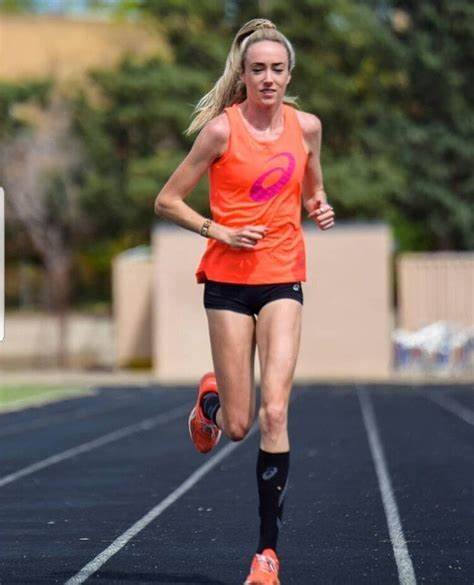
The 33-year-old British record holder will come up against two-time champion Vivian Cheruiyot, of Kenya, and Ethiopia's Senbere Teferi.
While McColgan's mum Liz won the Great North Run three times, Eilish's best result is second place in 2021.

"Returning from this year's Paris Olympics and on the road back from injury, I'm especially looking forward to the tens of thousands of spectators and supporters lining the streets, as well as the 60,000 runners taking part alongside me," said McColgan.
Britain's Marc Scott, the 2021 Great North Run champion, competes in the men's race against the likes of Olympic 10,000m silver medallist Berihu Aregawi and 2021 London Marathon winner Sisay Lemma, both from Ethiopia.
Leading the field in the men's wheelchair race is 2022 Commonwealth Games champion JohnBoy Smith, while fellow Briton Jade Hall will bid to add the 2024 Great North title to her triumph in 2021.
What is the Great North Run course?
The annual 13.1-mile race starts in Newcastle city centre, crosses the River Tyne and goes through Gateshead before finishing by the sea in South Shields.
Runners raise millions of pounds for charity and you can watch comprehensive coverage on BBC One from 10:00 BST on Sunday.
(09/06/2024) ⚡AMPby AJ Bell
Great North Run
Great North Run founder Brendan Foster believes Britain is ready to welcome the world with open arms after the launch of the event's most ambitious plan to date. The Great World Run campaign seeks to recruit one runner from every country in the United Nations – 193 in total – to take part in the iconic half marathon in...
more...Eliud Kipchoge: Control the mind control the body
Marathon legend Eliud Kipchoge emphasised the importance of being “psychologically fit” during his educational visit to Manchester United.
Always eager to learn, Kenya’s world-renowned runner spent a day at Carrington to see our facilities, watch training and speak with the coaching staff. He then visited Old Trafford to attend the Reds’ Premier League match against Liverpool. The greatest marathoner of all time, Kipchoge won back-to-back gold medals at the 2016 and 2020 Olympic Games. He has also claimed victories in prestigious marathons around the world, including Berlin, Chicago, London and Tokyo.Kipchoge is best known for being the first person to run a marathon under two hours, clocking a time of 1:59:40 in 2019. His achievement wasn't recognised as a world record, as it was not run under open marathon conditions, but it signified a historic step forward in human performance.
During his visit to the Theatre of Dreams, the 39-year-old icon explained how mentality is just as important as physicality when it comes to achieving greatness. “Mindset is important for a sportsman and all the footballers,” said Eliud. “You must be physically fit but above all you must be psychologically fit.
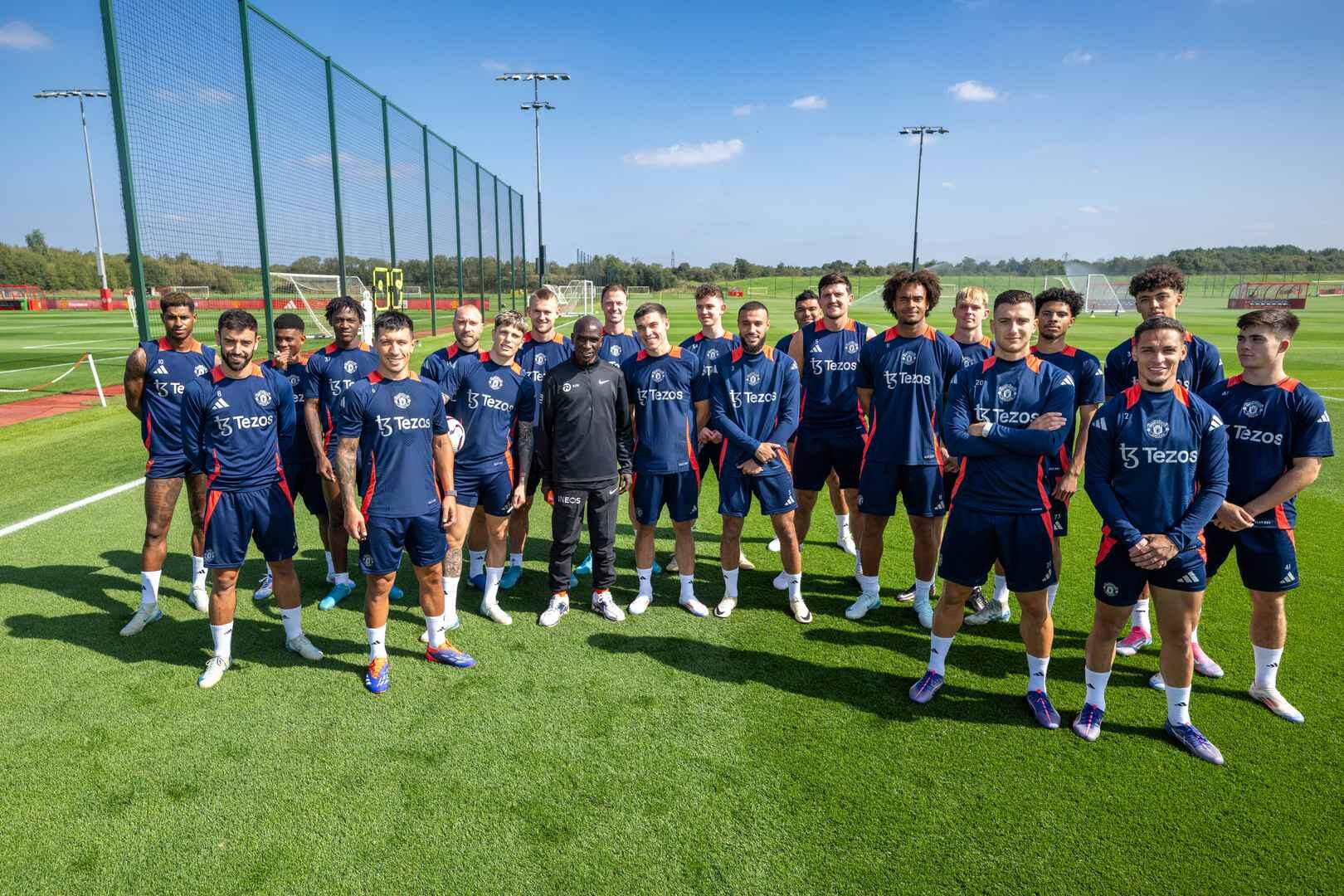
“What drives a man, what drives a woman, is the mind. If you are able to control the mind then you can control your body and you are able to consume the right things. Then out of that will come good things.
“In training you must have a strong and a high-profile mind. Playing the game, you need the right mind. The right way. When you are tackling your opponent, if you have the right mind then you can tackle well.
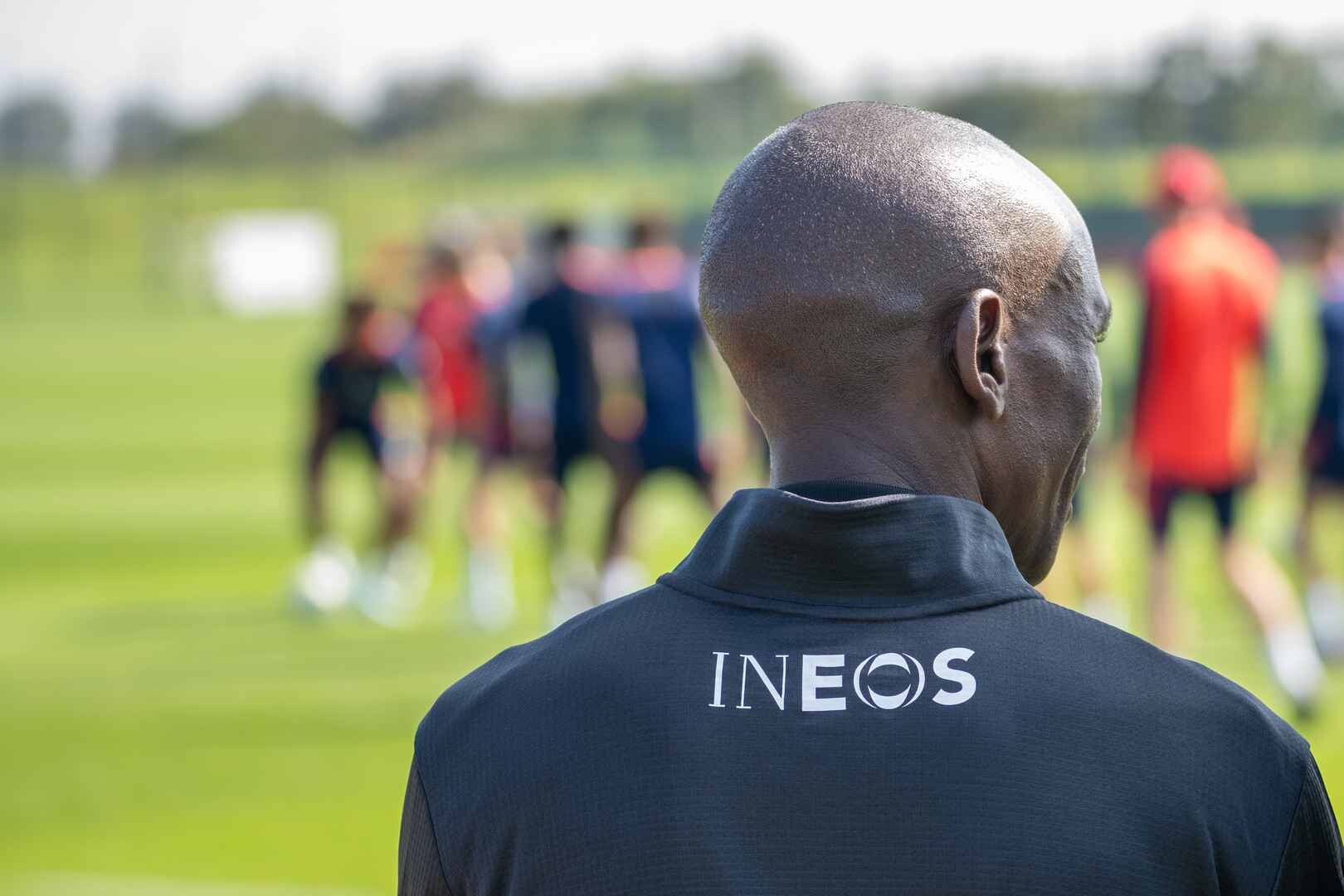
“If you are sprinting for a ball, if you have the right mind then you can sprint further than your opponent. So, the key is to be positive in life, always positive every day. “That's the beginning of good results and that's the beginning of real professionals. If all of the sportsman, or living people, can have positivity with each other then they are successful.”
Asked about other sportsmen or women being receptive to his positive message, Kipchoge admitted that interaction fuels him to continue his illustrious career. “It is lovely, it gives me more to wake up and to still press on every day. It's a big motivation for me when people are inspired by what I am doing and when people consume the positivity and try to improve their minds. That's my happiness.”
(09/06/2024) ⚡AMP
by Editorial Team
Three short and sweet fall workouts
Whether you are hanging onto summer vibes or love all things pumpkin spice, these quick workouts will have you solidifying the basics.
Whether you’re hanging on to the warm end-of-summer days or eager to enjoy all things pumpkin spice, you’ll love these short and snappy, back-to-basics workouts. These three sessions are designed to keep your training varied and engaging as the seasons change.
1.- Autumn fartlek fun
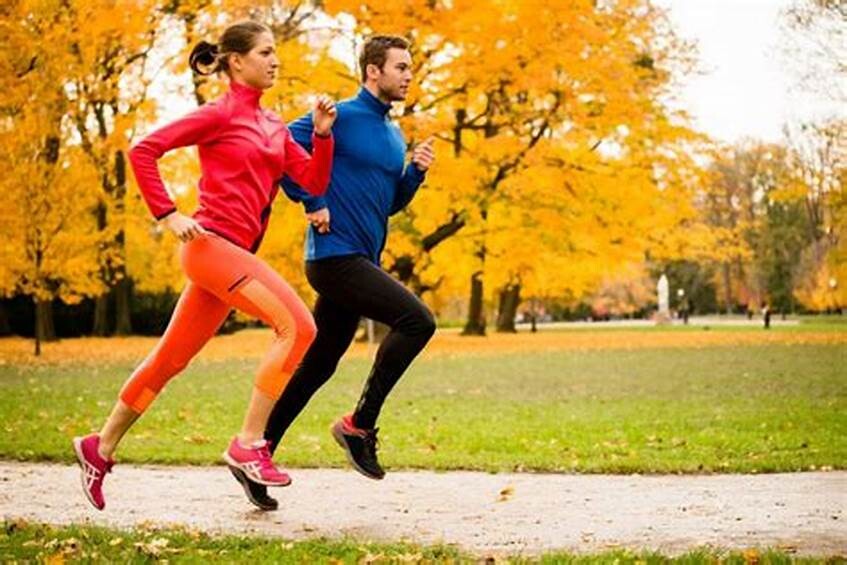
This workout blends intensity with variety, making it perfect for sharpening your speed as you head into the fall racing season. Fartlek is Swedish for “speed play,” and involves injecting your workout with varied paces that can range from a sprint to a very easy jog. The random nature of fartlek keeps it enjoyable and helps prevent burnout.
Warm up with 10 minutes of easy running.

Run at a hard pace for two minutes, followed by two minutes of easy jogging. Repeat this cycle for 15-20 minutes, depending on your fitness level. The key here is to vary the intensity—think of it as a playful way to inject some speed into your run. Choose landmarks like trees, mailboxes or light posts to signal when you’ll start or stop your harder efforts.
Cool down with 10 minutes of easy running.
2.- Crisp morning hill repeats
Hill repeats are fantastic for building strength in your legs and improving your running form. As the temperatures drop, this workout also helps keep your body warm and engaged.
Warm up with 10 minutes of easy running, followed by some drills or strides.
Find a moderately steep hill that takes about 30-60 seconds to run up. Run up the hill at a strong, steady effort, focusing on driving your knees and pumping your arms. Jog or walk back down to recover. Repeat six to eight times.
Cool down with 10 minutes of easy running.
3.- Scenic tempo session
A tempo run improves your endurance and helps you lock into a solid pace, making it ideal for those preparing for longer races or simply looking to maintain fitness.
Warm up with 10 minutes of easy running, savouring the changing scenery around you.
Run at a comfortably hard pace (a pace you could maintain for an hour) for 15-20 minutes. This should feel challenging but sustainable, keeping you in a steady rhythm.
Cool down with 10 minutes of easy running, soaking in those autumn colours, followed by some dynamic stretches.
Whether you’re aiming for a strong fall race or to maintain your fitness through the off-season, these sessions will help you stay on track while enjoying the crisp, refreshing autumn air.
(09/06/2024) ⚡AMPby Keeley Milne
Korir and Gebreslase to lock horns at Sydney Marathon
The 2022 World Marathon silver medalist Judith Korir is set to rekindle her rivalry with the 2022 World Champion Gotytom Gebreslase of Ethiopia at the Sydney Marathon on September 15.
During their last meeting at the 2022 World Championships in Eugene, Gebreslase edged out Korir by nine seconds to claim the title in a course-record time of 2:18:11. Israel’s Lonah Chemtai was third in 2:20:18.
Race organizers have touted this year’s lineup as one of the most competitive as athletes eye glory in one of Australia’s most iconic cities.
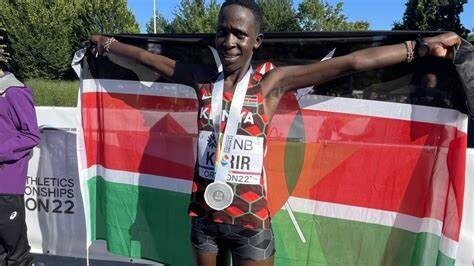
“The calibre of athletes participating this year is a testament to Sydney’s allure as a world-class marathon destination. We’re excited to witness these extraordinary competitors race through our new course, against the backdrop of our iconic city,” said Sydney Marathon race director, Wayne Larden.
Korir, 28, takes a wealth of experience and success to Sydney, having won the 2022 Paris Marathon (2:19:48), 2021 Abu Dhabi Marathon (2:22:30) and Lugano Half Marathon (1:06:25), 2019 Venice Marathon (2:29:21) and the 2020 Izmir Marathon (2:33:59).
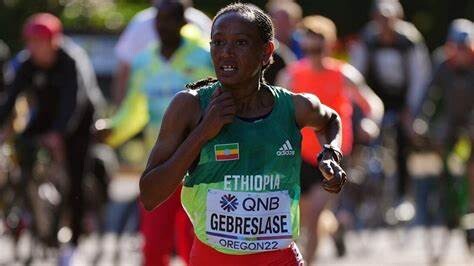
She finished sixth at last year’s London Marathon (2:20:41) and settled for fourth at the 2022 edition (2:18:43).
Gebreslase is a world marathon silver medalist from last year’s championships in Budapest, Hungary, in a time of 2:24:34, behind compatriot Amane Beriso (2:24:23) and ahead of Morocco’s Fatima Ezzahra (2:25:17).
The Ethiopian has victories from the 2021 Berlin Marathon (2:20:09) and the 2021 Bahrain Half Marathon (1:05:36).
At last year’s Ras Al Khaimah Half Marathon, she finished second in 1:05:51. She has finished third at the Hamburg Marathon (2:21:19), the 2022 Tokyo Marathon (2:18:18), 2022 New York Marathon (2:23:39) and the 2022 Liboa Half Marathon (1:07:11).
Korir will be joined by a formidable group of compatriots including Beatrice Cheptoo, the 2022 Istanbul Marathon champion, Rotterdam Marathon runner-up Viola Kibiwot and Sharon Chelimo, third place finisher at last year’s Frankfurt Marathon.
Two-time Frankfurt Marathon champion Brimin Kipkorir spearheads the Kenyan charge in the men's race.
Kipkorir bagged the 2022 Frankfurt title in 2:06:11 and defended it last year in a personal best of 2:04:53.
The 35-year-old is a two-time Nairobi Standard Chartered Marathon champion — 2017 (2:12:39) and 2019 (2:10:43).
He will be joined by Fukuoka Marathon champion Michael Mugo, 2017 Rotterdam Marathon third-place finisher Laban Korir and three-time Kosice Marathon winner Reuben Kerio.
They will face stiff competition from Ethiopia’s Leul Gebresilase, the 2022 world marathon bronze medalist, Seoul Marathon third-place finisher Haftu Teklu and last year’s Tokyo Marathon champion Deso Gelmisa.
(09/06/2024) ⚡AMPby Teddy Mulei
Sydney Marathon
The Sydney Marathon is a marathon held annually in Sydney, Australia. The event was first held in 2001 as a legacy of the 2000 Summer Olympics, which were held in Sydney. In addition to the marathon, a half marathon, 9 kilometres (5.6 mi) "Bridge Run", and a 3.5 kilometres (2.2 mi) "Family Fun Run" are also held under the banner...
more...The best ways to run faster by mastering this secret technique
Take flight with these tips to reduce the time your feet spend on the ground.
You’ve probably heard plenty about pace, nutrition and race-day tactics, but have you ever considered the impact of your ground contact time? Matt Fitzgerald, a renowned running coach and author, believes this often-overlooked detail could be the game changer in your training. Ground contact time (GCT) is all about running efficiency, and Fitzgerald has four practical strategies to help you master it.
GCT refers to the amount of time your foot spends on the ground during each stride, and research shows that lessening it can lead to faster and more efficient running.

The secret to boosting speed
Fitzgerald highlights a critical point: the less time your foot is in contact with the ground, the faster you move. Elite runners often have the shortest GCT, because they’re able to apply force to the ground quickly and efficiently, keeping them airborne longer. A Finnish study on running mechanics and economy found that shorter GCT was strongly correlated with improved running efficiency and speed. In simpler terms, when your foot is on the ground, you’re not moving forward—so spending less time there is a key to getting faster.
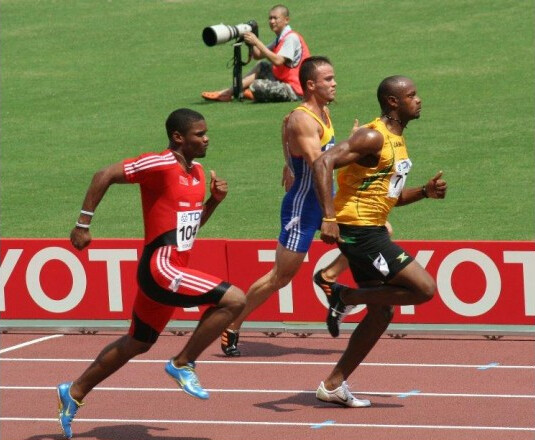
Boost your power with speed training
Fitzgerald suggests incorporating fast running into your routine to help reduce your GCT. Adding a few sprints at max speed, or longer intervals at 5K pace, can train your legs to produce quicker, more powerful strides. This helps improve your ability to apply force rapidly, which in turn reduces your GCT.
Strengthen with plyometrics
Plyometric exercises like jumping drills and heavy weightlifting can increase leg stiffness–another important factor in minimizing GCT. Studies have shown that stronger, “stiffer” legs can absorb and return energy more efficiently, contributing to a quicker stride and improved running economy.
Switch to midfoot-striking
Research has also linked midfoot-striking with shorter GCT. Transitioning from heel-striking to midfoot-striking can naturally decrease the amount of time your foot is on the ground. In one study, midfoot strikers had a ground contact time of 183 milliseconds, compared to 199 milliseconds for heel strikers. Fitzgerald suggests paying attention to what part of your foot is taking the greatest impact when you run, and work on your stride to shift that area slightly forward. Mimicking running downhill by tilting very gently forward from the ankles will help your foot land underneath your hips.
(09/05/2024) ⚡AMPby Keeley Milne
Two-time Olympian Natasha Wodak to race TCS Toronto Waterfront Marathon
This will be the first appearance at the race in 11 years for the Canadian record holder.
Canada’s fastest-ever female marathoner, Natasha Wodak, has revealed her fall marathon plans. The Vancouver native, who is a two-time Olympian, will line up for the 2024 TCS Toronto Waterfront Marathon on Oct. 20, which doubles as both a World Athletics Elite Label event and the Canadian Marathon Championship. This will mark Wodak’s first appearance at this race in 11 years.
“I thought, Why don’t I go run the Canadian Marathon Championships in Toronto?” said Wodak. “I haven’t been there in 11 years, and that’s where I started this marathon journey. It’s an Asics event, I’m the Canadian record holder, and I haven’t won the Canadian Marathon Championship. I just really wanted to run in my country, surrounded by friends and family.”
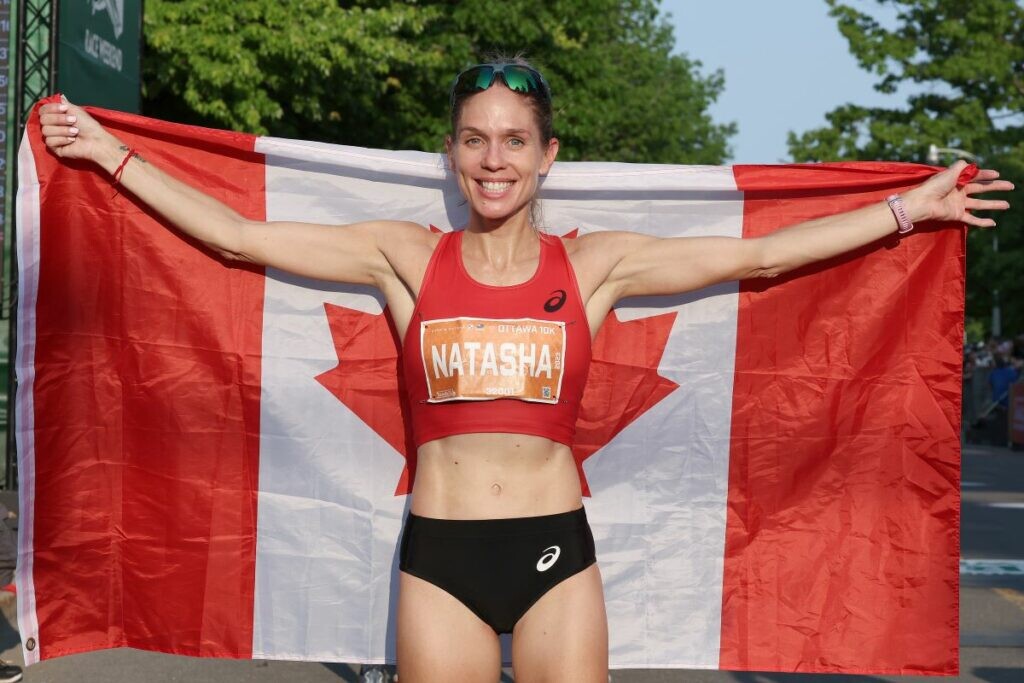
Despite a challenging year where she missed qualification for the Paris Olympics, Wodak’s setbacks continue to fuel her world-class performances at 42. In 2023, she withdrew from the London Marathon after falling ill just days before the race, and later placed 15th at the World Athletics Championships in Budapest, where she had hoped to achieve the Paris Olympic standard of 2:26:50. She also faced difficulties at the 2024 Houston Marathon, where a hamstring strain derailed her run. Although initially disappointed about not making her third Olympic team, Wodak was optimistic about the opportunities ahead.
“The Olympics is special for a reason—it’s very hard to get there!” she reflected. “I didn’t make it this time around, but I had a fun journey trying, and other doors have opened. I got to do the CBC broadcast for the women’s Olympic marathon, which was an amazing opportunity.”
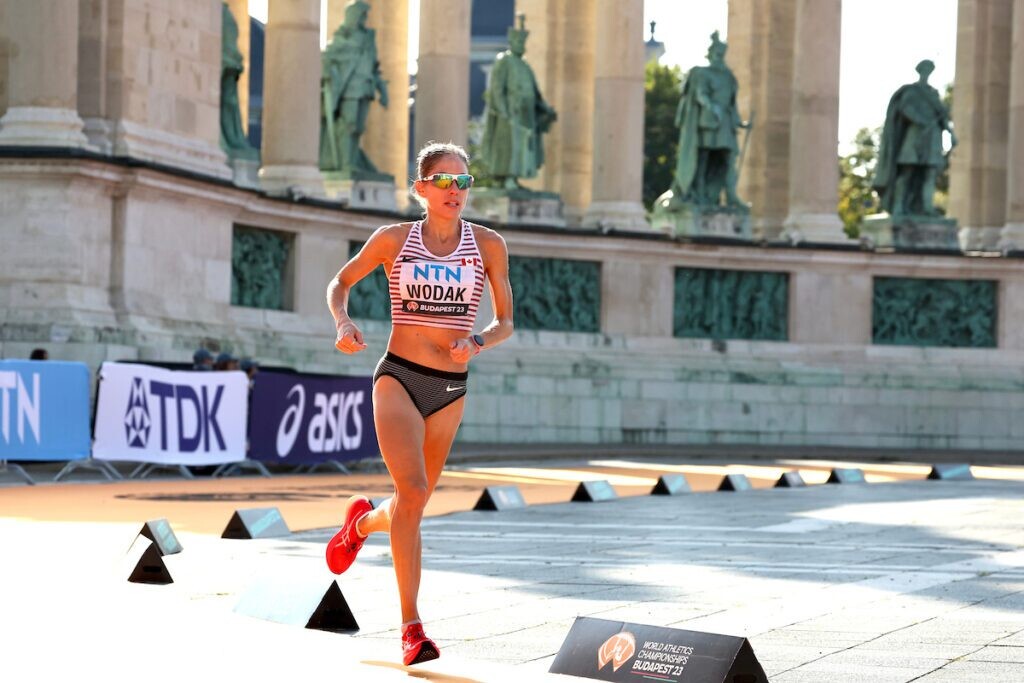
Unsure of her fall racing plans, Wodak had initially considered targeting the national half-marathon record at the Toronto Waterfront Half Marathon, but decided to switch to the full marathon after consulting with her coach, Trent Stellingwerf.
Winning the Canadian Marathon Championships could also help Wodak qualify for the 2025 World Athletics Championships in Tokyo next September, by earning her World Athletics points. “If I win and run decently in Toronto, it’s really good points, and I might not need to run the standard (2:23:30),” she explained. “I could possibly run a marathon in Japan in early March.”
The qualifying window for the marathon at the 2025 World Athletics Championships opened on Nov. 5, 2023. So far, no Canadian athletes have achieved the women’s standard of 2:23:30 or the men’s standard of 2:06:30. Wodak holds the Canadian marathon record at 2:23:12.
The TCS Toronto Waterfront Marathon, to be held on Oct. 20, is Canada’s premier running event and the grand finale of the Canada Running Series (CRS). Since 2017, the race has also served as the Athletics Canada marathon championship and Olympic trials.
(09/05/2024) ⚡AMPby Marley Dickinson
TCS Toronto Waterfront Marathon
The Scotiabank Toronto Waterfront Marathon, Half-Marathon & 5k Run / Walk is organized by Canada Running Series Inc., organizers of the Canada Running Series, "A selection of Canada's best runs!" Canada Running Series annually organizes eight events in Montreal, Toronto and Vancouver that vary in distance from the 5k to the marathon. The Scotiabank Toronto Waterfront Marathon and Half-Marathon are...
more...Why older runners are rocking the trails
Recent performances by Jeff Browning and Ludo Pommeret suggest that trail runners age like fine wine.
A fascinating trend has emerged in trail and ultrarunning: athletes in their 40s and 50s are not just competing—they’re thriving. Recent performances by American ultrarunner Jeff Browning (53) and France’s Ludovic Pommeret (49) are putting to rest the common belief that athletic performance declines with age. Instead, these trail runners are proving that experience, mental resilience and a well-honed training regimen can defy the clock. Why are trail runners getting better with age, and how are they doing it?
The power of experience
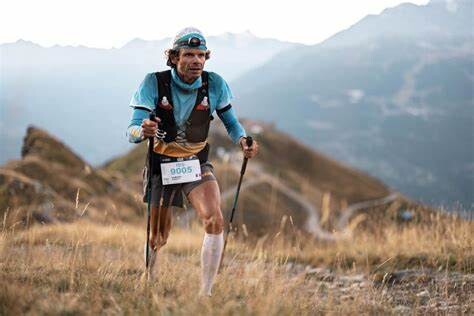
One of the key reasons trail runners are excelling later in life is the accumulation of experience and mental resilience built over time. Running on technical trails requires quick decision-making and the ability to stay calm under pressure, qualities that often improve with age. Pommeret won the UTMB 176K race at age 41 and placed fourth at this year’s edition, at the age of 49, after winning Hardrock 100 only six weeks earlier. Some of his success can be attributed to years of experience, which has taught him to manage his energy efficiently, pace himself wisely and navigate challenging terrain with confidence.
Research supports this idea, suggesting that older athletes possess greater mental resilience, allowing them to maintain focus and composure during long, grueling races. This psychological edge often compensates for any slight physical declines, enabling veteran runners to stay competitive.
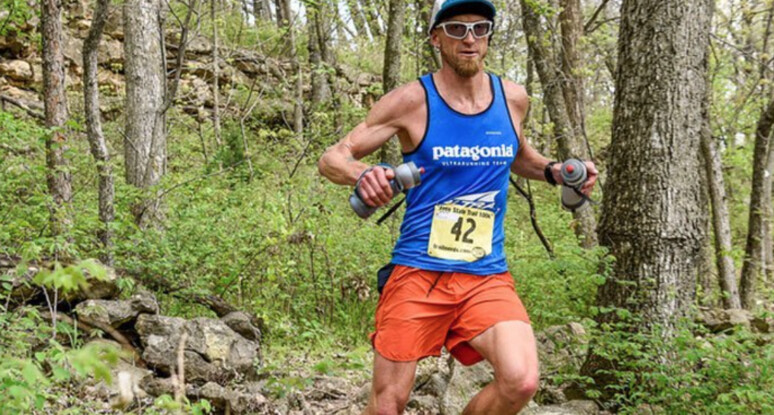
Adapted training and smarter recovery
Older trail runners are also better able to adapt their training to suit their aging bodies. Browning has consistently performed at the top level through his 40s and early 50s, most recently setting a supported FKT on the Colorado Trail at age 52 and placing second at this year’s Cocodona 250 (402 km) in Arizona. Browning emphasizes the importance of strength training, flexibility and strategic recovery. Instead of pushing through pain or ignoring signs of overtraining, experienced runners like Browning adjust their routines to prevent injury and enhance their longevity in the sport.
Research shows that strength training becomes increasingly important as we age, helping to maintain muscle mass, bone density and joint stability. Older athletes are also often more attuned to the need for adequate recovery, which is vital for avoiding burnout and ensuring sustainable performance.
Wisdom of pacing and nutrition
As trail runners age, they also tend to develop a keen sense of pacing and nutrition, partially due to familiarity with their own body. Unlike younger runners, who might go out too fast and burn out, more experienced runners understand the importance of conserving energy for the later stages of a race. They also become more meticulous about nutrition, recognizing that fueling their bodies properly can make the difference between finishing strong and hitting the wall.
Pommeret’s victory at the 2016 UTMB is a perfect example. After falling behind early in the race, Pommeret strategically paced himself, gradually working his way up the field to take the lead in the final miles. This kind of tactical acumen is often honed over years of racing experience.
Trail running is increasingly proving that age is just a number. with athletes like Pommeret and Browning demonstrating that with the right mix of experience, training adaptations, mental resilience and smart pacing, older runners can continue to compete—and win—at the highest levels.
(09/05/2024) ⚡AMPby Keeley Milne
Rebecca Cheptegei, died from full organ failure
Rebecca Cheptegei, died from full organ failure following a horrific attack by a former boyfriend on Sunday, which left her with burns covering 75 per cent of her body.
Rebecca Cheptegei, an Olympic marathoner for Uganda who competed in the 2024 Paris Olympics, tragically passed away on Thursday morning after reportedly being set on fire by her former boyfriend in Kenya. She was 33.
According to the Kenyan newspaper Nation, Owen Menach, the Director of Clinical Services and Surgery at Moi Teaching and Referral Hospital (MTRH) in Eldoret, confirmed that Cheptegei died around 5 a.m. local time due to “full organ failure.” This followed a horrific attack by her boyfriend at her home in Kenya on Sunday, which left her with burns covering 75 per cent of her body. She was admitted to the hospital in critical condition.
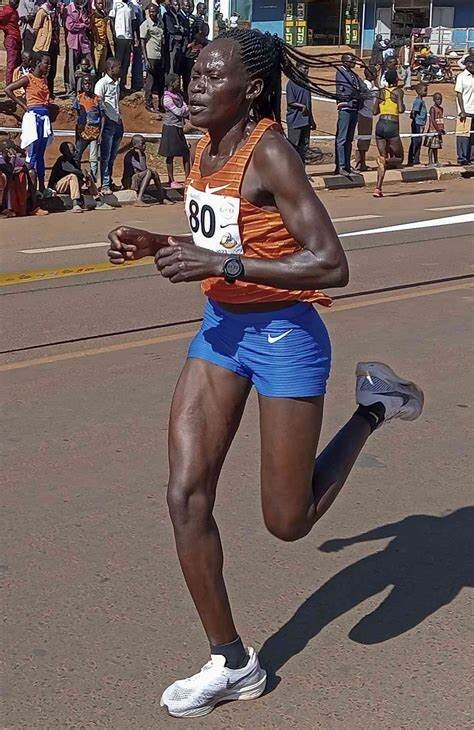
The alleged attacker, Dickson Ndiema Marangach, was also injured by the flames and is currently hospitalized. Neighbors reportedly overheard the couple arguing outside the house shortly before the attack. Both Cheptegei and Marangach were rescued from the fire by neighbors.
The Uganda Athletics Federation led tributes to Cheptegei on X (formerly Twitter), posting: “We are deeply saddened to announce the passing of our athlete, Rebecca Cheptegei, who tragically fell victim to domestic violence early this morning. As a federation, we condemn such acts and call for justice. May her soul rest in peace.”
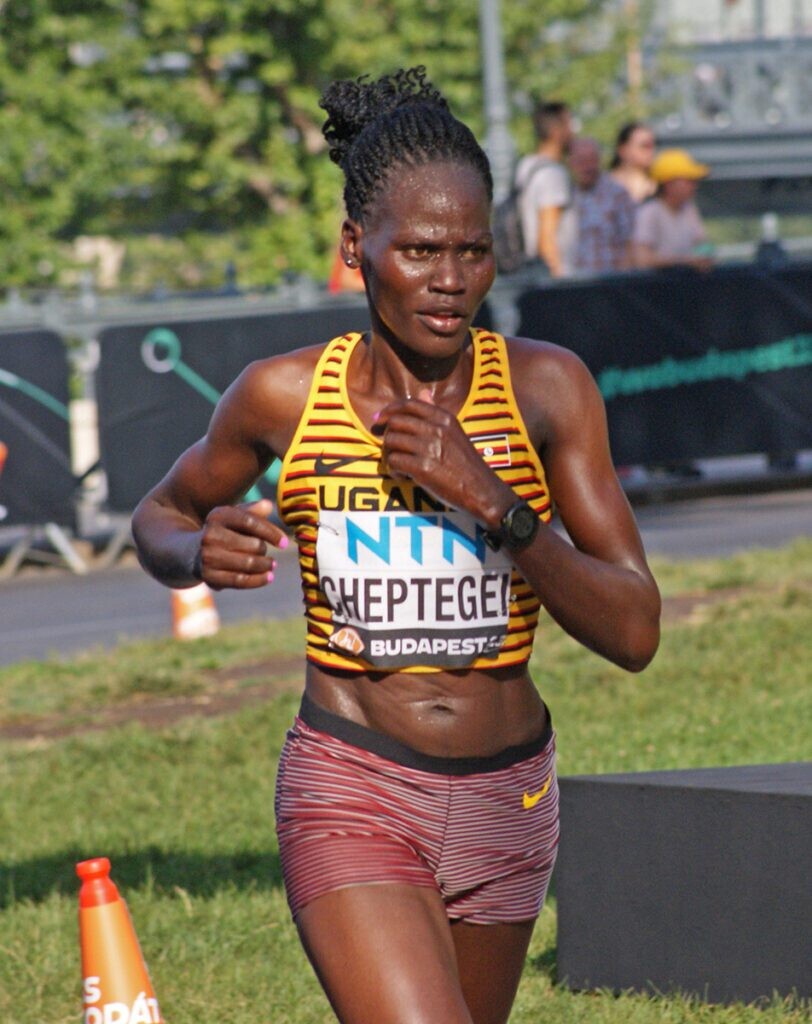
Cheptegei finished 44th in the marathon at the 2024 Paris Olympics in August and previously won gold at the World Mountain and Trail Running Championships in Chiang Mai, Thailand, in 2022. She had a marathon best of 2:22:47.
Tragically, this is not the first instance of domestic violence involving elite female athletes in East Africa. In 2021, Kenya’s two-time 10,000m world championship bronze medalist, Agnes Tirop, was found stabbed to death by her husband at their home in Iten, Kenya. Tirop’s husband, Emmanuel Ibrahim Kipleting, was arrested after fleeing Iten and found hundreds of kilometers away. She was 25 at the time of her death.
(09/05/2024) ⚡AMPby Marley Dickinson
Fuel your runs with the perfect fall granola
This nutritious granola is jam-packed with energy and incredible seasonal flavors.
As the crisp air of fall settles in, runners everywhere are lacing up their shoes to hit the trails. This time of the year calls for a diet that not only provides energy, but also aligns with the seasonal flavours we all love and look forward to all year long. Granola, with its versatile and nutritious profile, is the perfect fall pre-run or recovery snack for runners.
With its mix of oats, nuts and seeds, granola offers a blend of carbohydrates, healthy fats and proteins. Adding this blend to a smoothie bowl, yogurt, oatmeal or eating it as cereal with milk can elevate your fall mornings. I’m already an huge advocate for pre-run yogurt with granola, so this recipe will be a hit in my kitchen this fall. If you typically only go for a really light pre-run snack, this granola is excellent for giving you a boost of energy without weighing you down.

Ingredients
Yields 8 cups (~16 servings). Adapted from Cookie and Kate.

8 cups old-fashioned rolled oats
3 cups raw nuts and/or seeds (I used 3/4 cup pecans, 3/4 cup green pumpkin seeds/pepitas, 3/4 cup slivered almonds, 3/4 cup shredded coconut).
3/4 tsp table salt (or 2 tsp fine-grain sea salt)
1 tsp cinnamon
1 cup coconut oil, melted
1 cup maple syrup or honey
2 tsp vanilla extract
1 1/3 cups dried cranberries (can also use dried cherries, raisins or dried apricots)
2 tsp orange zest (optional)
Directions
Preheat the oven to 350 F and line a baking sheet with parchment paper.
Combine oats, nuts, seeds, salt and cinnamon in a large bowl.
Pour in the oil, maple syrup/honey, vanilla and orange zest (if using). Mix to lightly coat all oats and nuts. Pour granola onto the prepared pan and spread into an even layer with a spatula.
Bake for 21 to 24 minutes, or until lightly golden, stirring halfway. (If wanting extra-clumpy granola, press down with a spatula to create an even layer.)
Let granola sit for at least 45 minutes or until it cools completely. (The granola will continue to toast when cooling.)
Add dried fruits. Break into chunks with your hands or stir around with a spoon.
You can store the granola in an airtight container for up to two weeks, or in the freezer for up to three months. Let frozen granola warm to room temperature for five to 10 minutes before serving.
Some other nut alternatives include walnuts, cashews, peanuts, pistachios, macadamia nuts and sunflower seeds. To enhance the fall flavours, choose maple syrup over honey. Ground ginger and pumpkin-spice blends are also perfect alongside the cinnamon. Don’t skip the salt; this is key for bringing out the perfect blend of flavours and spices.
(09/04/2024) ⚡AMP
by Cameron Ormond
Kilian Jornet summits 82 Alpine peaks in 19 days
On Monday, Spain’s Kilian Jornet, four-time UTMB champion and a legend in ski mountaineering and climbing, completed his monumental mountain challenge to summit all 82 Alpine peaks over 4,000m high in only 19 days. Jornet shattered the previous Fastest Known Time (FKT) of 62 days, set in 2015 by Swiss alpinist Ueli Steck, who used a combination of cycling and paragliding.
Following his remarkable 10th victory at the Sierre-Zinal race (where he beat his own course record by a single second), Jornet embarked on a quest, dubbed “Alpine Connections,” to ascend as many of the 4,000-metre peaks in the Alps as possible, using only human-powered methods to travel between them. This endeavour seamlessly combined trail running, mountaineering, climbing and cycling.
In 2023, Jornet took on his toughest challenges yet, summiting all 177 peaks over 3,000 metres in the Pyrenees in just eight days. Reflecting on the feat at the time, he called it “one of the most difficult things I’ve ever done.” With the “Alpine Connections” project, Jornet pushed his limits even further as he continued to use only running or cycling between mountains, being careful to leave no trace that he was there.
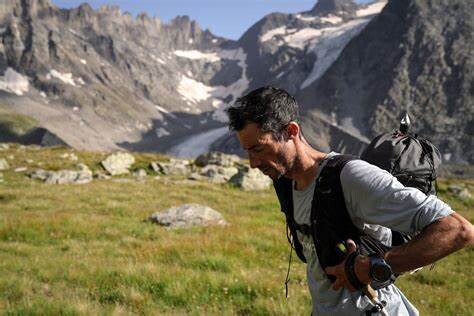
Jornet started his journey in the Bernina range of eastern Switzerland. In just a few days, he conquered 10 peaks, covering 423 km with a staggering 19,831m of elevation gain. The early stages of the challenge tested both his physical and mental endurance, and Jornet worked closely with scientists to track the physical and mental demands of his trek. He also provided daily recaps, stats and tracking on the Nnormal blog, Strava and @nnormal_official.
Jornet faced other, more humourous challenges during his journey: at one point, police threatened to tow his vehicle when work needed to be done on the parking lot he had left it in—2,500km away, and 4,000 metres below him.
Upon reaching the summits of Dôme and Barre des Écrins (the westernmost peaks in the series) on Instagram, Jornet shared his thoughts on Instagram. “This was, without any doubt, the most challenging thing I’ve ever done in my life, mentally, physically, and technically, but also maybe the most beautiful.”
“It’s difficult to process all my emotions just now, but this is a journey that I will never forget. It’s time for a bit of rest now.”
(09/04/2024) ⚡AMPby Keeley Milne
New York Road Runners draws 20 Olympians to run in 5th Avenue Mile
The New York Road Runners New Balance 5th Avenue Mile is this Sunday, and it's sure to have plenty of Olympic spirit.
The nonprofit on Tuesday announced the event will draw 20 participants from the recent Summer Olympics in Paris.
Some of runners for the men's race include defending 5th Avenue Mile champion Josh Kerr, Robert Farken, Neil Gourley, Edwin Kurgat and Cathal Doyle.
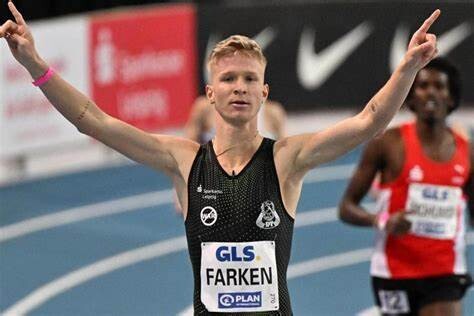
On the women's side, U.S. Olympic medalist and world champion Emma Coburn will lead a field along with Marisa Howard, Emily Mackay, Whittni Morgan, Karissa Schweizer Courtney Wayment and several others.
"As I make my way back from injury, I can't think of a better event to make my comeback than returning to run the New Balance 5th Avenue Mile," Coburn said in a statement. "I've been training hard since my surgery, and lining up with this world-class group of athletes on this iconic course will feel so good."
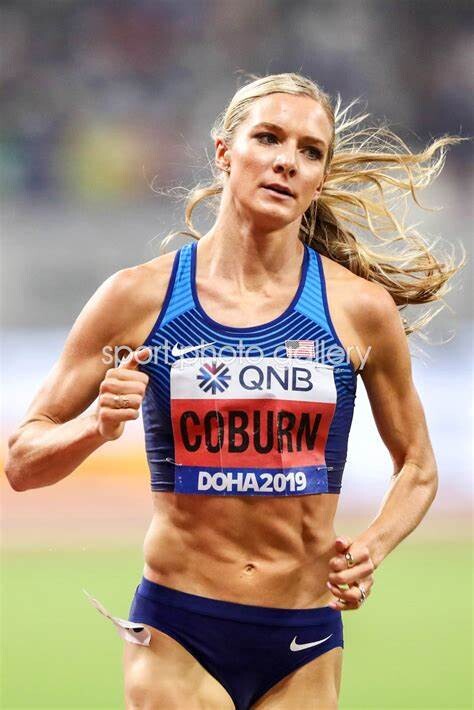
The New Balance 5th Avenue Mile - the world's most iconic road mile race since 1981 - is one of 60 adult and youth races produced by NYRR.
The event will be televised live on WABC-TV from 12 p.m. to 1 p.m., and be available across the country on ESPN+.
(09/04/2024) ⚡AMPby Eyewitness News
New Balance 5th Avenue Mile
The New Balance 5th Avenue Mile opens a beautiful 20-block stretch of 5th Avenue to runners of all ages and abilities who want to run their best mile in New York City. Special races include a youth mile, the George Sheehan Memorial Mile for runners age 60 and over, the NYRR Road Mile Championships, and Olympic-caliber professional men's and women's...
more...Ngetich to attempt world record on Valencia Half Marathon debut
World 10Km record holder Agnes Ngetich will lead an attempt on the 21km world record when she debuts at the Valencia Half Marathon Trinidad Alfonso Zurich on October 27.
Ngetich returns to the city where she achieved her 10km world record of 28:46 (and 5km — 14:13) at the Valencia Ibercaja in January.
It's the city where Ethiopia’s Letesenbet Gidey set the women’s half marathon record of 1:02.52 in 2021 and Kibiwott Kandie set the second fastest time in the world, 57:32, in 2020.
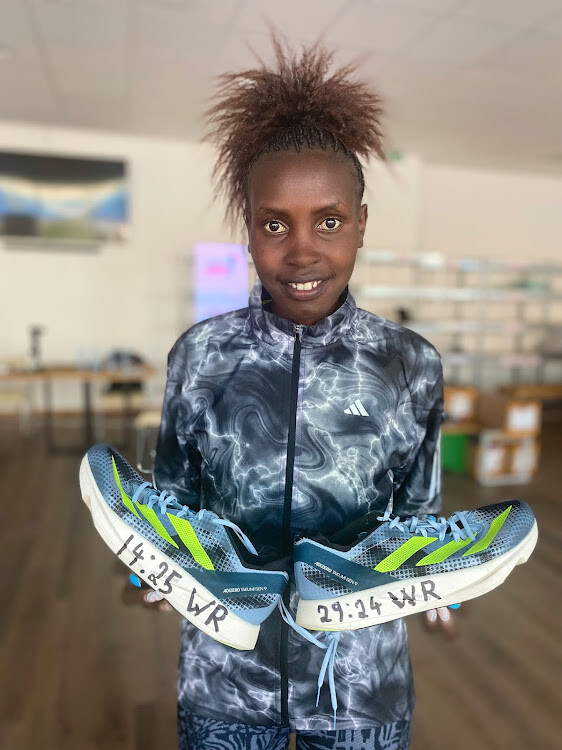
Ngetich will lead the attempt on Gidey's mark in a race which has produced eight of the top 10-fastest times over the distance.
She faces tough competition from compatriots Lilian Kasait Rengeruk and Catherine Amanang'ole and Ethiopia's Tsigie Gebreselama.
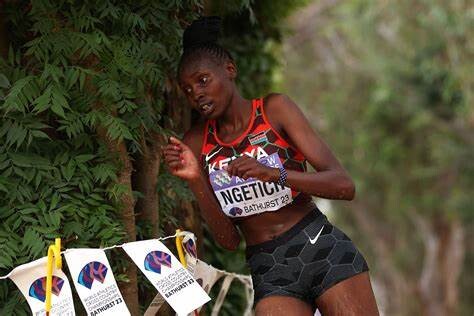
In the men's category, Kenya's Daniel Mateiko (58:26) will challenge the Ethiopian duo of Yomif Kejelcha (57:41) and Selemon Barega (57:50).
The European battalion is led by Samuel Barata (Portugal), Pietro Riva (Italy), Amanal Petros (Germany) and Emile Cairess (Great Britain).
Marc Roig, coach of the event's international elite athletes, assessed this start list as: “the best half marathon this year, with high-level duels that aim, once again, to achieve 57-minute performances by several athletes.
"And a clear challenge to the stopwatch in the women's race. Never before has a debutant who has run a 10K in under 29 minutes taken to the start line. We are looking forward to seeing how fast the race will be on October 27.”
(09/04/2024) ⚡AMPby Angwenyi Gichana
Valencia Half Marathon
The Trinidad Alfonso Valencia Half Marathon has become one of the top running events in the world. Valencia is one of the fastest half marathon in the world. The race, organized by SD Correcaminos Athletics Club, celebrated its silver anniversary in style with record participation, record crowd numbers, Silver label IAAF accreditation and an atmosphere that you will not find...
more...Kerr aims for 'unprecedented' Olympic hat-trick
Josh Kerr is targeting an "unprecedented" hat-trick of Olympic 1500m medals after making history with his silver at this year's Paris Games.
The 26-year-old took bronze from the delayed 2020 Tokyo Games and became the first Scot to win at two different Olympics stagings, which he described as "a nice accolade for sure".

"That’s an awesome stat for me," he told Scottish Athletics.

"One more medal across the men’s 1500m in the Olympics would, I believe, be unprecedented and be the most anyone has ever had in that distance.
"So, I am trying to push Scotland into a really good spot and hopefully we can come away with a gold medal next time in Los Angeles [in 2028].
"I am looking for the full set."
(09/03/2024) ⚡AMPby BBC News
LA 2028 Summer Olympics Games
Discover how the Los Angeles Candidature Committee describes their vision for the Games and the legacy they plan to leave behind: For centuries, people have been following the sun to California – to a coastal paradise of beautiful weather, inspiring landscapes and an ocean of possibilities. Since it was first settled, LA – the City of Angels – has built...
more...Russia's Tatyana Tomashova stripped of silver in historic 2012 Olympic 1500m final doping scandal
Former Russian athlete Tatyana Tomashova stripped of 2012 Olympic silver for doping marking a significant scandal in athletics history.
Former Russian athlete Tatyana Tomashova has been stripped of her 2012 Olympic 1500m silver medal following the reanalysis of doping tests that revealed the use of prohibited substances.
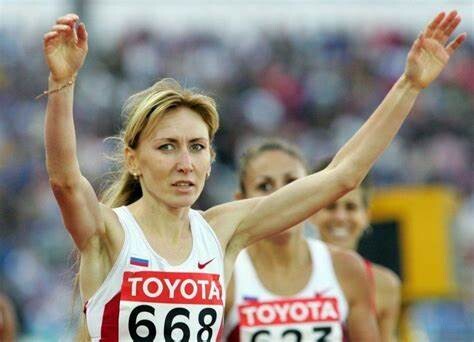
The decision was announced on Tuesday by the Court of Arbitration for Sport (CAS). At 49, Tomashova has faced a severe setback with a 10-year ban in addition to losing her Olympic medal.
The CAS statement detailed the tests conducted out of competition on June 21 and July 17, 2012, which showed traces of anabolic steroids.
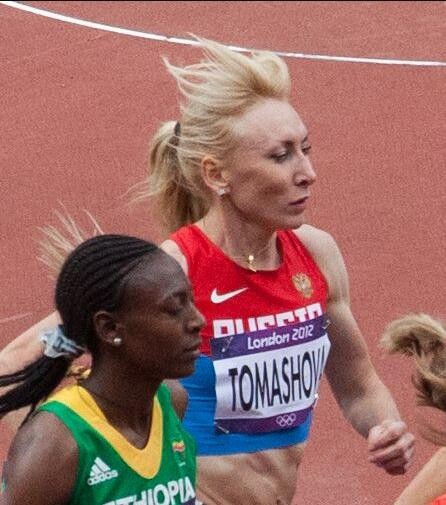
These findings led to the disqualification of all Tomashova's competitive results from June 21, 2012, to January 3, 2015, including the forfeiture of titles, awards, and earnings.
"The Sole Arbitrator in charge of the matter found to her comfortable satisfaction that Ms. Tomashova committed an Anti-Doping Rule Violation (ADRV) in relation to the 2012 Samples through violations of Rule 2.2 of the 2021 WA Anti-Doping Rules (WA ADR) (Use or Attempted Use of a Prohibited Substance or a Prohibited Method)," the CAS detailed in their release.
Further aggravating Tomashova's case was her doping history, including a previous two-year suspension in 2008. The arbitrator cited this history in deciding the severity of the sanctions.
"Turning to the sanction, taking into account a previous ADRV committed by Ms. Tomashova in 2008, the Sole Arbitrator determined the appropriate sanction applicable to multiple ADRVs to be the imposition of a ten-year period of ineligibility, commencing on this day, the date of the CAS decision, as well as the disqualification of all competitive results obtained by Ms. Tomashova from 21 June 2012 until 3 January 2015, with all resulting consequences, including the forfeiture of any titles, awards, medals, points, and prize and appearance money," the statement added.
This scandal has cast a shadow over what has been referred to as one of the most contentious races in Olympic history.
The 1500m final at the London Olympics was particularly notable for its multiple disqualifications.
Originally finishing fourth, Tomashova had been upgraded to silver after the first and second place finishers, Asli Cakir Alptekin and Gamze Bulut of Turkey, were also disqualified for doping violations. With further disqualifications of Natallia Kareiva and Yekaterina Kostetskaya, the race's initial lineup has been largely overturned.
Bahrain's Maryam Yusuf Jamal, who initially crossed the finish line third, ultimately received the gold medal.
The reshuffling continues down the line, with American runner Shannon Rowbury, who finished sixth, now in line to receive the bronze medal.
The CAS acted as the primary decision-making authority in this matter, stepping in for the Russian Athletics Federation, which remains suspended by World Athletics (formerly IAAF).
(09/03/2024) ⚡AMPby Festus Chuma
Jogging on the spot at red lights? Here’s why you should stop
Even if you aren't a beginner, this habit might make you look like one
So you’re out for a run and you get stuck at a red light. The obvious thing to do is stop and catch your breath, right? For many people, this logic doesn’t apply; jogging on the spot is the only answer. Whether you’re guilty of it or you’ve just seen others do it as you drive by, here are a few reasons to just take a rest instead:
Jogging on the spot doesn’t use the same biomechanics as running. Since there is no forward drive, there is a bigger strain on your core and hip flexors to get your knees up. If you shuffle around, the lack of core engagement and intention in your form can make the movement sloppy, which is also not beneficial. If you’re worried about your heart rate falling, you shouldn’t be. Your heart rate will stay elevated even without running, so a 30-second rest stop isn’t detrimental to your exercise.
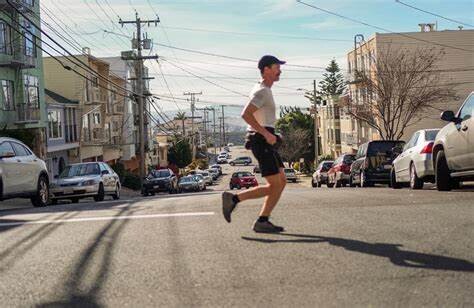
Stopping and starting during a run can be excellent training. If your legs feel heavy when you begin running again, it’s because your body thinks the workout is over and your mind is playing tricks on you. By getting used to stopping and starting mid-run, you’ll realize it’s not as challenging as it seems, and you are completely capable. Confidence is a major component of being a runner; it’s often mind over matter. This practice will also make water stops or bathroom breaks during long races much easier.
You shouldn’t feel like stopping at a light will be detrimental to the outcome of your run; in fact, it can be quite beneficial. The common misconception that you need to keep running on the spot to maintain your fitness is just that—a misconception. This moment of rest can prevent injury by giving you a chance to recognize any early signs of strain or fatigue. Embracing these short breaks can help your running, making you a more mindful and resilient runner in the long term. If starting up after your short break is a bigger challenge than last time, it may signal that your easy run may be getting a little too hard.

For drivers, a runner who is jogging at the light doesn’t give a clear indication if they are crossing or not. Someone who is stopped completely makes it clear that they are waiting for the light to change before hurtling across the street. Being as predictable as possible around cars is the best way to stay safe and injury-free.
(09/03/2024) ⚡AMPby Cameron Ormond
Chebet to test New York reediness at Sunday's Great North Run
Two-time Boston Marathon champion Evans Chebet will gauge his readiness for November’s New York Marathon at Sunday (September 8) when he lines up at the Great North Run, England.
The Great North Run is the largest half marathon in the world, and it is staged in North East England.
Chebet revealed he is looking to test his body as he aims for positive results ahead of the New York Marathon.
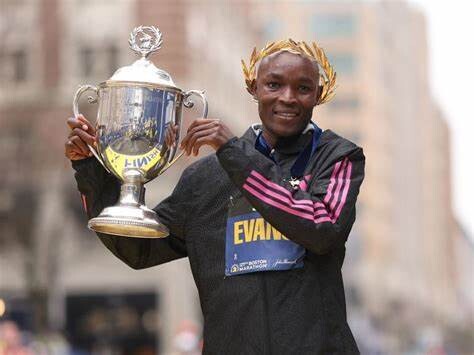
“I want to test my body in England and see how it responds. This race will be part of my preparations for the New York Marathon. I am confident of positive results in both races,” Chebet revealed.
Chebet sustained a tendon rapture during the Boston Marathon in April, dashing his hopes of a historic hat-trick.
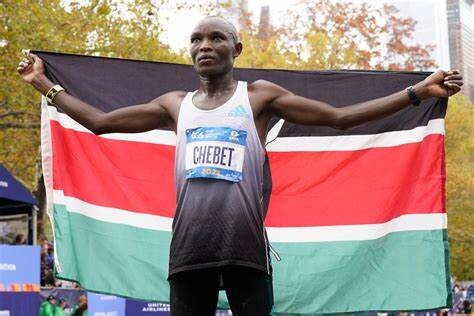
Despite the injury, he managed to secure a third-place finish with a time of 2:07:22, trailing Ethiopia’s Sisay Lemma (2:06:17) and Mohamed Esa (2:06:58).
Before that, he had picked up last year’s title with a time of 2:05:54, beating Tanzania’s Gabriel Geay (2:06:04) and Olympic bronze medalist Benson Kipruto (2:06:06).
He also led an all-Kenyan podium sweep during the 2022 edition—cutting the tape in 2:06:51 to lead Lawrence Cherono (2:07:21) and Kipruto (2:07:27) to the podium.
Now fully fit, the 35-year-old is determined to reclaim his winning form.
“My body feels great. I’m ready for the Great North Run and I am looking forward to positive results. I am also well prepared to win a second title in New York,” Chebet noted.
Chebet won the 2022 New York Marathon in 2:08:41 ahead of Ethiopia’s Shura Kitata (2:08:54) and the Netherlands' Abdi Nageeye (2:10:31).
Chebet’s resume also includes victories from the 2020 Valencia Marathon (2:03:00), the 2019 Buenos Aires Marathon (2:05:00) and the 2020 Lake Biwa Mainichi Marathon (2:07:29).
He placed third at the 2016 Berlin Marathon (2:05:31) and second at the 2016 Seoul Marathon (2:05:33) and 2019 Generali Milano Marathon (2:07:22).
Chebet is set to renew his rivalry with Lemma as he looks to assert revenge on the Ethiopian after he beat him to the Boston title.
The 2021 Valencia Half Marathon champion Abel Kipchumba will join Chebet on the start line as they look to secure a Kenyan 1-2 finish.
Other key competitors include Marc Scott, who will be representing the host nation. Scott clinched the 2021 title in 1:01:22, beating Edward Cheserek (1:01:31) and USA’s Galen Rupp (1:01:51).
In the women’s race, Rio 2016 Olympic 5,000m champion Vivian Cheruiyot leads a strong Kenyan contingent, including 2022 Commonwealth 10,000m bronze medalist Sheila Chepkirui and 2014 World Half Marathon silver medalist Mary Ngugi.
Their competition will come from 2015 World 5,000m silver medalist Senbere Teferi of Ethiopia and Britain’s record holder in the 10km Road race Eilish McColgan.
(09/03/2024) ⚡AMPby Teddy Mulei
Great North Run
Great North Run founder Brendan Foster believes Britain is ready to welcome the world with open arms after the launch of the event's most ambitious plan to date. The Great World Run campaign seeks to recruit one runner from every country in the United Nations – 193 in total – to take part in the iconic half marathon in...
more...Tristan Woodfine Chasing Canadian Title at TCS Toronto Waterfront Marathon
The past two years have been mostly good to Tristan Woodfine as he has recorded personal bests over several distances most significantly with his 2:10:39 finish at the 2024 Houston Marathon in January.
That makes him the sixth fastest Canadian marathoner of all time.
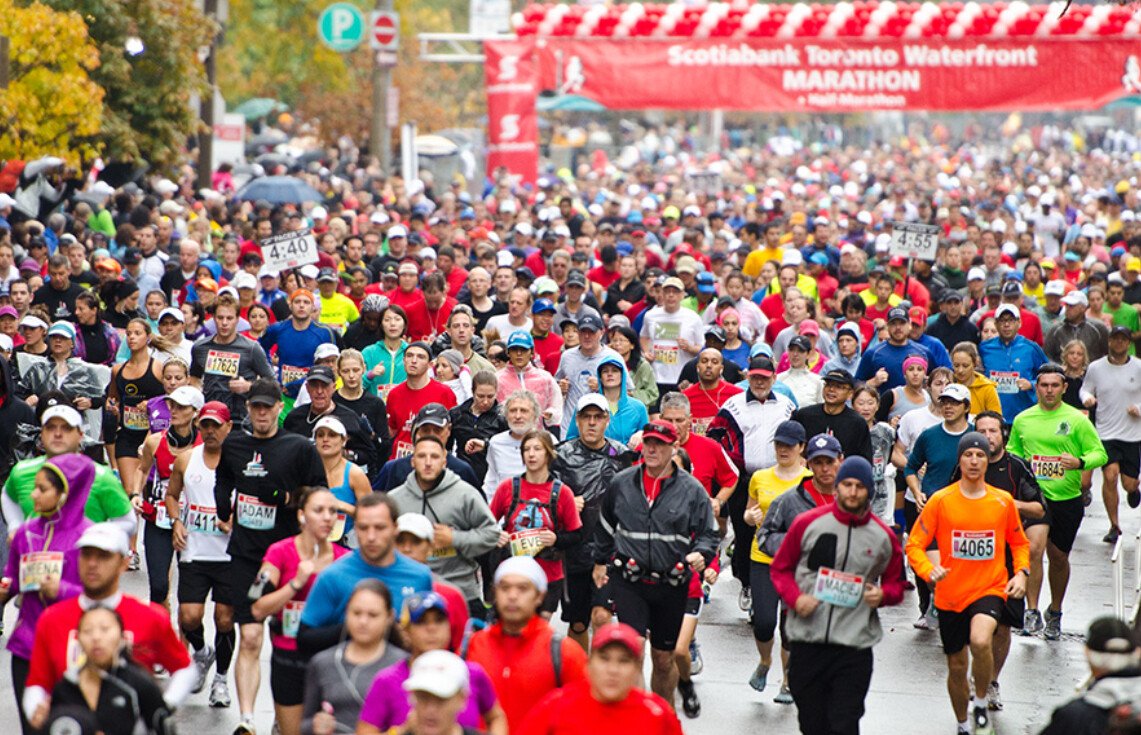
This uplift in fortune coincides with his seeking coaching advice from none other than two-time Canadian Olympic marathoner Reid Coolsaet.
Now the 31-year-old Woodfine has confirmed he will race the 2024 TCS Toronto Waterfront Marathon, October 20th, with the objective of running both a fast time and earning the Canadian Marathon Championship title. The event doubles as a World Athletics Elite Label race as well as the Athletics Canada National Marathon Championships.
“It’s local, close, the support is good,“ he says of his choice for an autumn marathon. “The Canada Running Series (team) always does a great job. I have run the course before.
“Getting under 2:10 would be nice, finally. We will see how the rest of the build goes. Ten weeks is still a long timeand things can change for better or worse - hopefully for better - and by the time Toronto comes around I’d definitely love to get a PB and make another step forward there.”
Woodfine, who is currently living just outside of Eganville, Ontario with his wife Madeline, ran the Toronto Waterfront Marathon once before. That was in 2019 when he finished 13th in a time of 2:13:16. But he has twice won the Toronto Waterfront Half Marathon (2022 and 2017) - run concurrently with the full marathon - and has also had success at the Toronto Waterfront 10K. That race includes a long section of the marathon course too.
Credit for his upward trajectory goes to Coolsaet.
“Reid has had so much experience in the sport,” Woodfine says of his coach. “He has got a lot of valuable insights on the training front and beyond. He has done a lot of racesand he knows the deal with which races might work well for your goals, that kind of thing.
“He has got so much experience on any aspect of training, racing, nutrition, injuries, he has seen so much he can really help out.”
One of the differences in Woodfine’s program since his association with Coolsaet comes as a surprise but might well be a valuable lesson for all runners.
“Some of the workouts in the base training period are almost a bit easier than what I was doing (before),” he explains. “I think maybe before I was pushing a bit too hard too early in the training base. So backing off a little bit when coming into the marathon block was probably one of the bigger things.”
Like most runners he has had his share of hiccups, most notably a nagging case of plantar fasciitis that saw him drop out of the Boston Marathon back in April. He blames a mechanical deficiency in his running form. But that is behind him now and as he enters his marathon specific buildup phase he is full of optimism.
Recently he raced the Falmouth Road Race in Massachusetts finishing 11th in 33:33 over the 7-mile course. A successful result at the shorter distance has added to his confidence.
“The last few weeks leading into Falmouth I did get my longer mileage in,” he reveals. “I got a 37km long run in there just to get things ready. The week before Falmouth was 220km. In this (Toronto) buildup block I would like to get up to a maximum of 250 or 260km.”
Besides a personal best, Woodfine is fully aware that a national championship offers the chance for maximum World Athletics points that would count heavily in 2025 World Championships qualifying. Those Championships are set for Tokyo.
“I talked to Reid about trying to qualify for Tokyo,” he admits. “I have had a few sit-downs (with him). I’d get a fair amount of points with another good performance with a strong time. A solid finish in Toronto would put me in a good position.”
Unlike many elite runners Woodfine doesn’t have a shoe sponsor. After completing his paramedic studies at the Ontario Health and Technology College he has put on hold a career in that field to focus on his running. To make ends meet he has been doing some online coaching, a sideline that continues to grow.
“I definitely love helping other runners achieve their goals,” he adds. “I also do some remote work for a pharmacy in the area. It’s best described as inventory and purchasing. It’s very flexible and works great with running.”
Like many elite runners the Olympic Games has been a target for Woodfine. In 2020 he beat the Tokyo Olympics qualifying standard running 2:10:51 at the London Marathon and thought he’d achieved his dream of being an Olympian. But when Cam Levins ran 2:10:14 in Austria six months later it was Levins who was chosen for the team and not Woodfine. This, despite the fact Woodfine had beaten Levins in London by well over a minute.
Despite falling short of the Paris Olympic standard with his Houston Marathon personal best he still harbours an Olympic dream.
“Yes it is still a goal. I try not to put as much emphasis on the Olympics being an ‘all or nothing’, a defining factor of success for my career,” he declares. “I think that can kind of end up making you miserable. Whether you are going to the Olympics or not. For sure, it’s a goal.
“I am in this for another Olympic cycle and hopefully I can be on the start line in LA - the third time is a charm. But I am really focused on each year and trying to enjoy each race for what it is.”
The TCS Toronto Waterfront Marathon is an obvious step forward in his career path.
(09/03/2024) ⚡AMPby Paul Gains
TCS Toronto Waterfront Marathon
The Scotiabank Toronto Waterfront Marathon, Half-Marathon & 5k Run / Walk is organized by Canada Running Series Inc., organizers of the Canada Running Series, "A selection of Canada's best runs!" Canada Running Series annually organizes eight events in Montreal, Toronto and Vancouver that vary in distance from the 5k to the marathon. The Scotiabank Toronto Waterfront Marathon and Half-Marathon are...
more...Ugandan athlete Cheptegei nursing severe burn wounds after attack in Trans Nzoia
The Ugandan long-distance runner is fighting for her life at a hospital in Eldoret following an alleged attack by her boyfriend that has left her with burns covering 75 per cent of her body.
Ugandan athlete Rebecca Cheptegei is nursing burn wounds after allegedly being doused with petrol and set on fire by her boyfriend.
Cheptegei, who competed in the 10,000m at the Paris Olympics, is reported to have faced the ordeal in Kitale, Trans Nzoia County on Monday, and was rushed to Moi Teaching and Referral Hospital in Eldoret after suffering burns covering 75 per cent of her body.
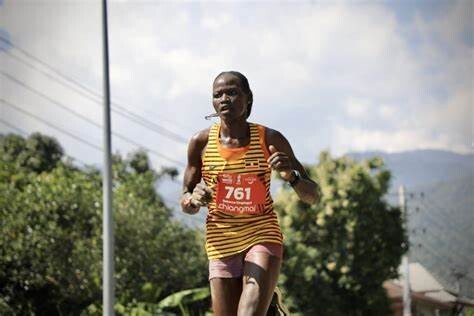
As per The Star, Trans Nzoia County police commander Jeremiah Ole Kosiom confirmed the incident, saying the athlete’s boyfriend also sustained serious burns and is admitted at the same hospital.
The outlet also reported that Cheptegei’s parents Joseph Cheptegei and Agnes Ndiema, said she had been initially admitted to Kitale Level Four Hospital before being referred to MTRH.
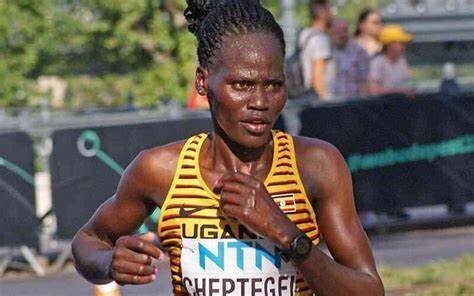
Cheptegei’s previous honors include victory at the Padova Marathon, second place in the 10,000m at the Ugandan Championships and fourth place finish in the ADNOC Abu Dhabi Marathon which earned her a ticket to the Paris Olympics.
The 33-year-old is a resident of Cheminy in Uganda but is said to have bought land in Trans Nzoia where she built a house that she stays in during her training.
(09/02/2024) ⚡AMPby Joel Omotto
Hillary Bor sets national record at the New Haven 20K, Keira D’Amato wins women’s race
Two-time Olympian Hillary Bor fell in the U.S. Olympic Trials in the steeplechase and did not make it to Paris.
Neither did Keira D’Amato, who dropped out of the Olympic Marathon Trials after running with
Hilary Bor and Keira D'Amato won USATF national titles in the 20K Monday by winning the men's and women's races at the 47th Faxon Law New Haven Road Race.Bor finished the 20K (12.4 miles) race in 58 minutes, 9 seconds, while D'Amato crossed the finish line in 1:06:25.
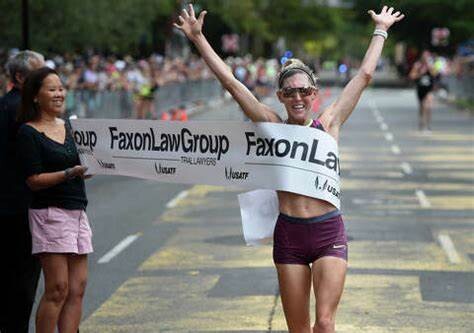
Bor's time set the national championship record. He pulled away from Nathan Martin (58:26), Biya Simbassa (59:29) and Aidan Reed (58:31).
Bor, from Colorado, was a member of the 2016 U.S. Olympic team and competed in the steeple chase.
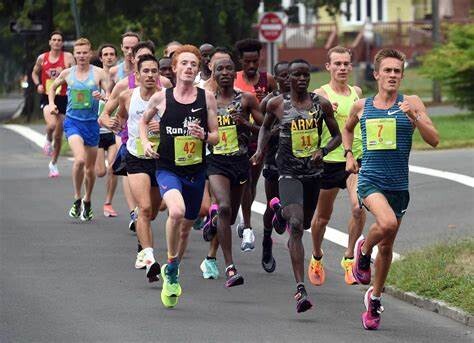
D’Amato, from Virginia, also won the Faxon Law New Haven 20K in 2022 when she set the course record. She held off Jess McClain (1:06.50), Savanah Berry (1:07:03) and Annie Frisbie (1:07:19).
Both earned the Ryan Shay Memorial Award, given annual in honor of the 2004 Faxon Law New Haven Road Race winner who died while participating in the 2007 Olympic Trials Marathon in New York City. The award is presented in recognition of Shay’s hard work and dedication to the sport, as well as longtime support of the New Haven Road Race, which he ran four times.
Connecticut's top finisher in the male division was West Hartford's Grant O'Connor, who placed 23rd in 1:02:54. The top state performer in the female division was Glastonbury's Alyssa Natario, whose time of 1:14:41 was 13th.
Other Connecticut residents to place in the top 25 in the female division were: Fairfield's Megan Connolly, Wallingford's Katie Overstrum, Woodbridge's Laura Pierce, Manchester's Olivia Mondo, Colchester's Alayna Bigalbal and East Lyme's Rebecca Snielson
The race, which drew more than 5,000 participants, also included a 5K, half marathon, half marathon relay and kid's fun run.
Benjamin MacDonald of Susbury, Mass. won the half marathon in 1:10:01, with Tabea Themann of Hamburg, Virginia winning the female division in 1:18:11. Westport's Clare Kutnick was second in the division in 1:21:48.
Prospect's Colin Slavin won the 5K title in 15:31 for the men, while Milford's Courtney Kitchen won the female division in 17:46.
(09/02/2024) ⚡AMPby Lori Riley
New Haven Road Race
The Faxon Law New Haven Road Race, renowned as the longest-running USATF 20K National Championship, is scheduled for Monday, September 1, 2025 (Labor Day), in New Haven, Connecticut. This event will once again host the Men's and Women's USATF 20K National Championships, attracting elite athletes, including past champions and U.S. Olympians. Participants can choose from various race options, including the...
more...Three core-crushing yoga moves to help you cruise to a PB
Perfect for runners of all levels, these core-focused poses will strengthen and stabilize your body, helping you confidently hit your stride.
Runners often focus on improving mileage and speed work, neglecting a crucial aspect that can make a world of difference on race day: core strength. We have you covered with three simple yoga poses that will not only help in building a rock-solid core, but also promote better posture and breathing, critical for sustaining long runs and improving overall endurance.
While it’s easy to think that the legs do all the work, a strong core is the foundation that supports every stride, helping to improve balance, stability and overall efficiency. Incorporating core-focused yoga moves into your routine can help you build the strength and flexibility you need to stay injury-free and reach new personal bests.
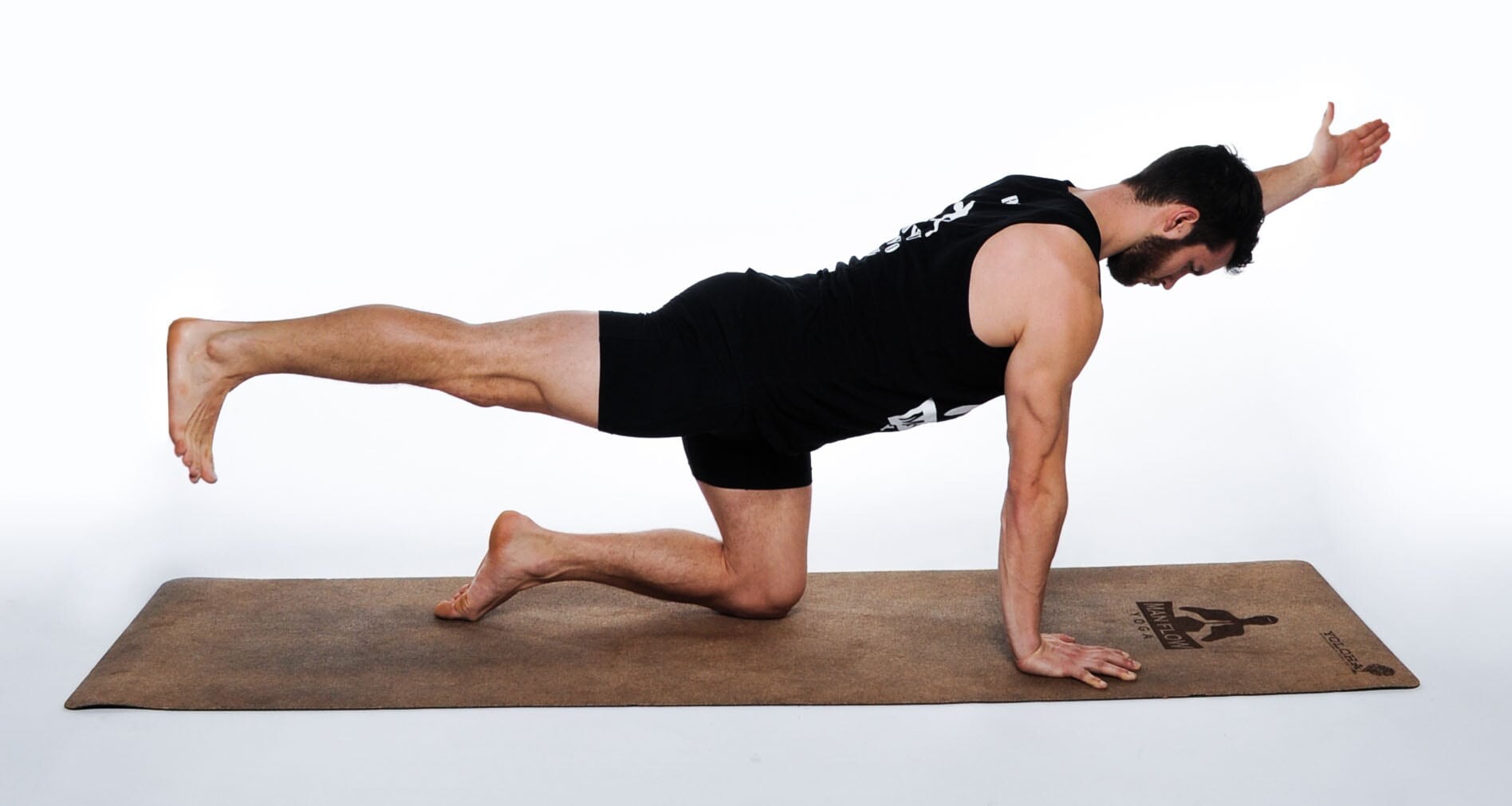
1.- Side plank
Plank pose and variations strengthen obliques and stabilizer muscles, essential for maintaining balance and keeping upright posture during those tough final miles.

Lie on your side with legs stacked, one on top of the other.
Place your elbow directly under your shoulder to prop your upper body up., with your forearm along the ground
Lift your hips off the ground, forming a straight line from head to feet and tightening your belly and glute muscles.
Hold for 10-30 seconds, then switch sides. If this move feels too challenging, try the move from your knees, keeping your hip on the floor.
2.- Boat pose
This pose engages the deep core muscles, improving posture and endurance.
Begin sitting on the floor with knees bent and feet flat. Place your hands behind your knees and lift your chest, engaging the back muscles as you inhale.
On an exhale, back slightly, lifting your feet off the ground so your shins are parallel to the floor.
Keep your hands where they are, or for an added challenge, extend your arms forward, being sure to keep your back straight. Squeeze your inner thighs together as you continue to press your chest upward.
Hold for 1o-30 seconds, then lower your legs. Repeat several times.
3.- Bird dog pose
Bird dog strengthens the core muscles, while also engaging the back and glutes, improving overall stability and balance, which are essential for maintaining good running form.
Begin on your hands and knees in a tabletop position, with your wrists directly under your shoulders and knees under your hips.
Engage your core and extend your right arm forward while simultaneously extending your left leg straight back.
Keep your hips square to the ground and avoid arching your back.
Hold the position for a few seconds while keeping your core tight and your body aligned.
Slowly return to the starting position and repeat on the opposite side (left arm and right leg); aim for five-12 repetitions on each side.
When incorporating yoga poses for strength, stay focused on maintaining form and activating key muscle groups rather than performing more repetitions or increasingly intense variations. Feel free to reduce the time or suggested repeats of each pose to what you can maintain without compromising form. These stretches are gentle enough to add to your routine after any training session, but remember to pay attention to what your body is signaling to you, and back off or adjust if you feel any pain or numbness.
(09/02/2024) ⚡AMPby Keeley Milne
Usain Bolt has already made his feelings clear as second 16-year-old breaks his record
Olympic legend Usain Bolt has seen his sprint times beaten by youngsters Gout Gout and Nickecoy Bramwell in recent months, but he remains philosophical on his achievements being topped.
Usain Bolt has already made his feelings clear on young athletes breaking his records by declaring that he is excited by emerging "personalities" in the sport.
Following Nickecoy Bramwell's record-breaking feat earlier in the year, another record held by the Jamaican icon was smashed this week as 16-year-old Gout Gout produced a silver medal-winning time of 20.60 seconds in the 200m at the U20 World Championships in Peru. The young Australian narrowly edged out Bolt's 2002 time in the same race when he was almost 16 years old.
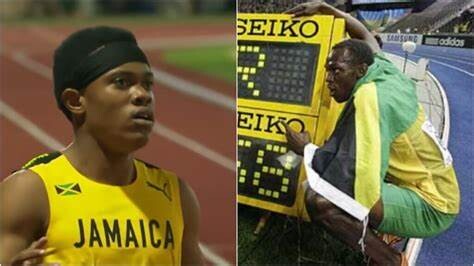
The Olympic legend clocked 20.61 in the final, although he had a quicker time of 20.58 in the first round. More than two decades on from Bolt's heroics, South African Bayanda Walaza clinched gold with a time of 20.54, while Britain's Jake Odey-Jordan secured bronze in 20.81.
Back in May, 16-year-old Jamaican hopeful Bramwell took Bolt’s Under-17 400m world record at the Carifta Games in Grenada with the youngster clocking 47.26 seconds to beat the record by just 0.07 seconds. Bolt's record had previously stood for an incredible 22 years.
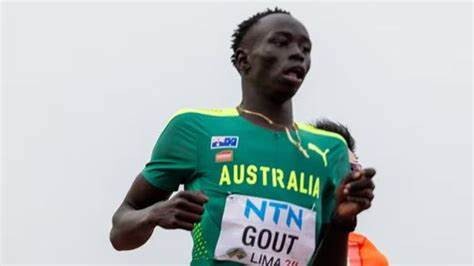
Speaking after Bramwell's achievements, Bolt hoped that his legendary times being eclipsed meant that athletics would be getting a much "needed" fresh injection of personality. He also claimed that the sport has not been the same since he departed the track.
“After me, it kind of went down because of who I was as a person, and how big my personality was," Bolt said. “But I think over time it will be better. I think young athletes are coming up and I see a few personalities that are needed in sport, hopefully in the upcoming years it will change.”
Who gets to inherit Bolt's heavy crown is another matter altogether, though. While Bramwell has caught the eye at longer distances, it's Gout who seems to be the major contender for Bolt's age-group records in the 100m and 200m.
The young athlete's performance has drawn strong comparisons to Bolt, with Athletics Australia president Jane Flemming among those claiming the young runner could be the next Olympic conquering superstar. Gout has taken such remarks with a degree of calmness rarely seen at such a young age, declaring that the compliment was "pretty cool".
Meanwhile, Bramwell, who has overcome several injury problems to now be discussed in the same breath as Bolt, has stated he now wants more of the legend's records. He said: "It's a wonderful feeling to break the record. Since last summer, I have been eyeing the record.
"So it's a great feeling I could come out here and get it. I just took my mind off it and focused on the record. I'm looking forward to better things.”
Bolt, 37, who retired in 2017, won eight Olympic gold medals and still holds world records in the 100m, 200m and the 4x100m relay. He now spends his athletics retirement with his family while also dabbling in celebrity charity events, like playing in Soccer Aid.
(09/02/2024) ⚡AMPEilish McColgan wins the Big Half in London
In today's Big Half Marathon in London, Eilish McColgan took the women's title, finishing with a time of 69:14, marking her return to the half-marathon scene after over a year.
Jack Rowe won the men's race clocking 1:02:58, making a strong impression as well. The event, which celebrated its seventh edition, brought together over 16,000 participants and highlighted the vibrant diversity of London’s communities.
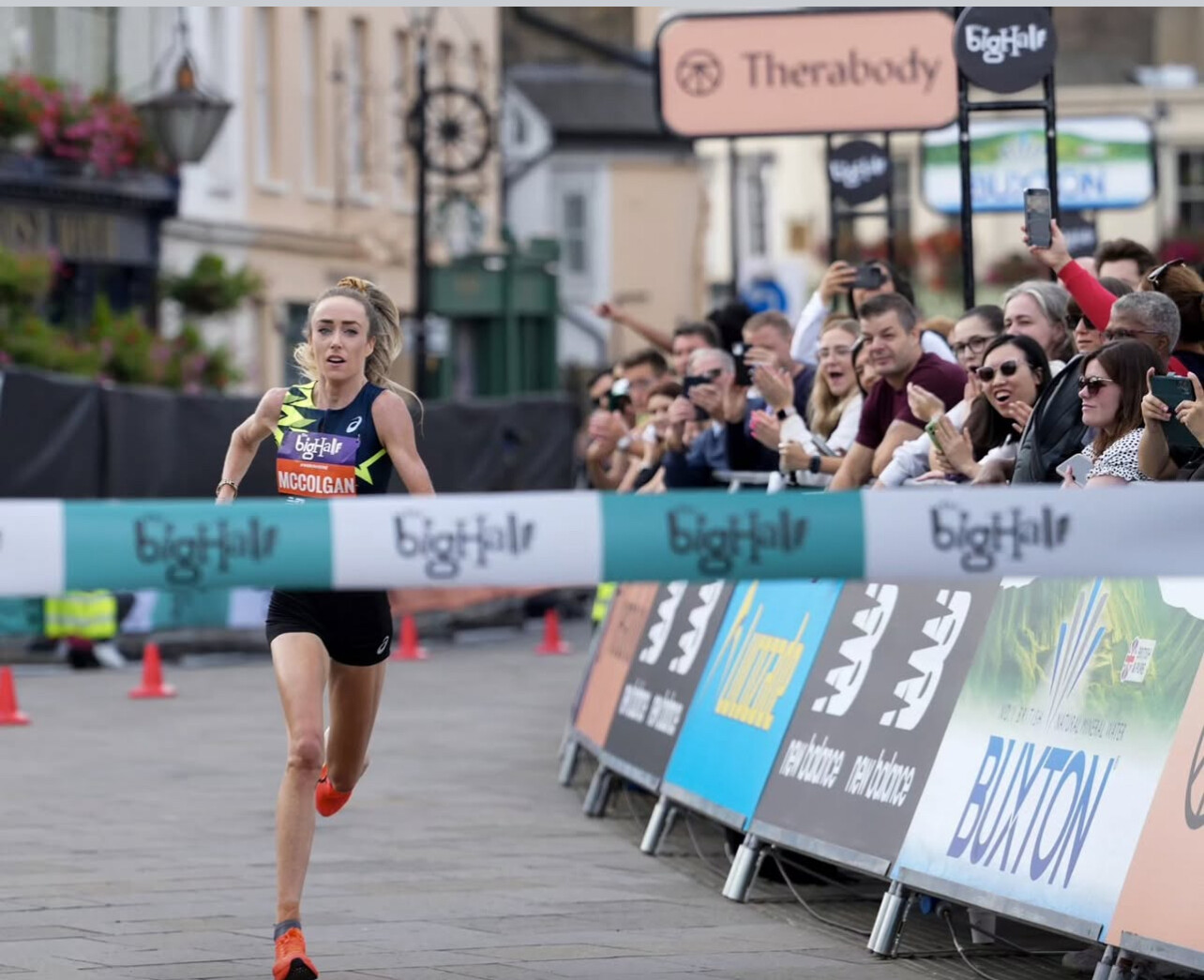
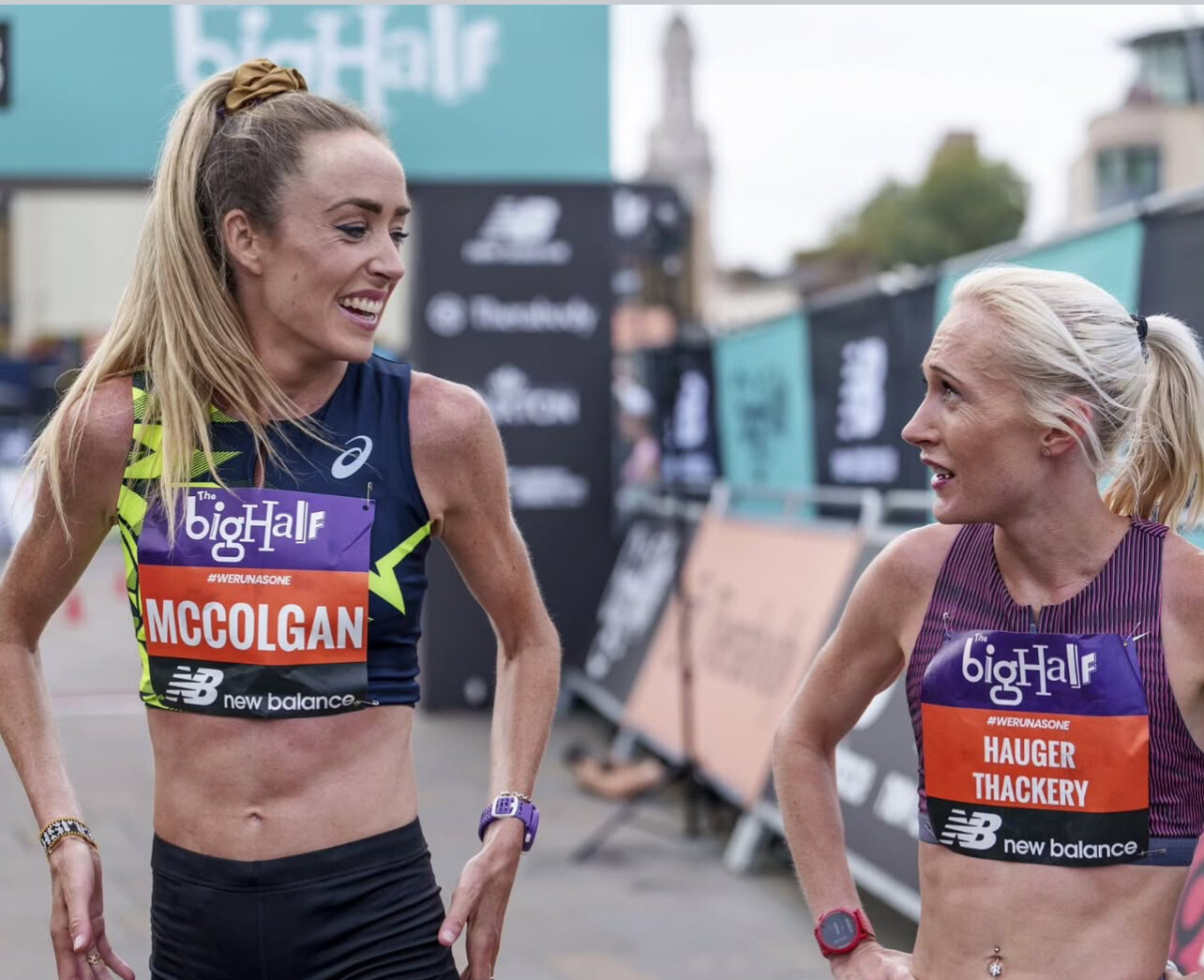
The race route passed through key boroughs like Tower Hamlets, Lewisham, Southwark, and Greenwich, ending at the iconic Cutty Sark.
Eilish posted this, "Loved being back out on the streets of London! ??
"It's been two loooong years since I last ran Big Half, so it was great to come away with the win.
"I felt a bit flat and sluggish from the start, but I suspect racing in over 85% humidity whilst on day one of your period isn't the recipe for peak performance.
"However, the support and cheers around the course kept me motoring through to the finish! There is nothing quite like racing in the UK.
"One race down, several more to go."
(09/02/2024) ⚡AMPGiles breaks world road mile record in Dusseldorf
Britain’s Elliot Giles won the men’s race at the New Balance KO Meile in Dusseldorf on Sunday (1), smashing the world record with 3:51.3*.
The Olympic 800m semifinalist held off a strong challenge from USA’s Olympic 1500m bronze medallist Yared Nuguse, who finished second in 3:51.9.
Both men were well inside the ratified world record of 3:56.13 set by Hobbs Kessler at the 2023 World Road Running Championships in Riga. They also bettered the mark of 3:54.6 – which is pending ratification – recorded earlier this year by Emmanuel Wanyonyi.
Vincent Keter was third in 3:54.9.
(09/01/2024) ⚡AMPAmerican Katie Schide Shatters Courtney Dauwalter’s Course Record to Win UTMB
She’s now the third woman to win both Western States and UTMB in the same year.
Katie Schide is on a tear.
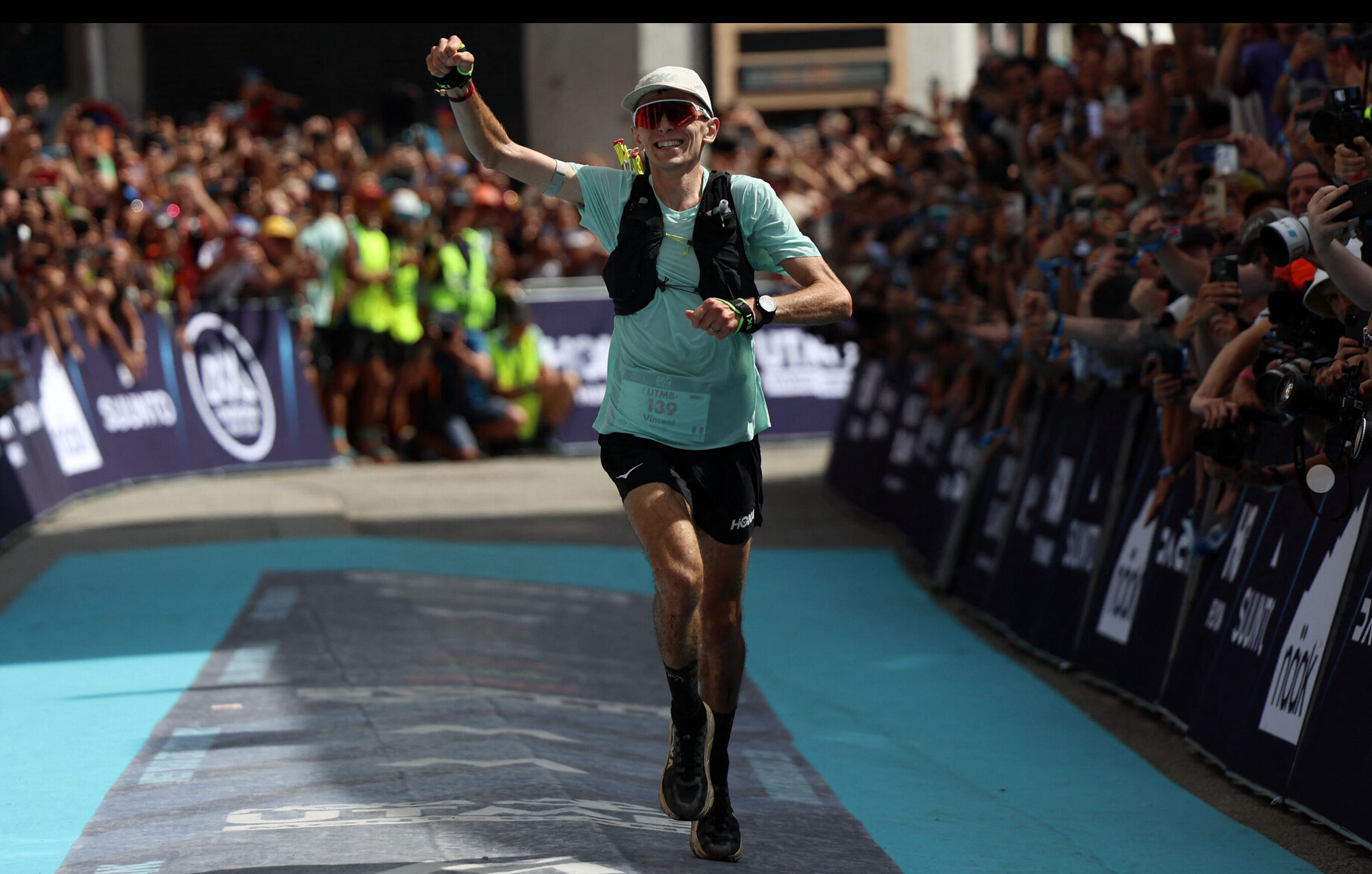
On Saturday, the American won the women’s race at the Ultra-Trail du Mont-Blanc (UTMB) in dominant fashion, finishing the 109-mile race in 22 hours, 9 minutes, and 31 seconds. Her time is 21 minutes faster than Courtney Dauwalter’s course record of 22:30:54 from 2021.
Schide, 32, is undefeated this year, winning the Canyons 100K in April and the prestigious Western States 100 in June.
Ruth Croft of New Zealand was 39 minutes behind Schide in second place (22:48:37). She passed Canada’s Marianne Hogan—who would finish third in 23:11:15—just after the 100-mile mark. Dauwalter, who won the Hardrock 100 on July 12, did not compete in this year’s edition.
In the men’s race, Vincent Bouillard of France was not favored to win, but he ultimately took the crown. He went to the lead after 48 miles and never relinquished it, crossing the finish line in Chamonix in 19:54:23. His compatriot, Baptiste Chassagne, was next to finish in 20:22:45, while Ecuador’s Joaquin Lopez placed third (20:26:22).
Last year’s champion, Jim Walmsley of the U.S., withdrew just after 50 miles because of a knee issue, according to a post on his Instagram story. He remains the only American man to win the race.
UTMB has been contested since 2003. The course—which slightly changes year-to-year—starts and ends in the French Alpine town of Chamonix and traverses through Italy and Switzerland along the way, covering over 30,000 feet of elevation gain.
This is Schide’s second time winning the event after taking top honors in 2022. Originally from Maine, Schide now trains in France and is sponsored by The North Face.
In the final 7 kilometers, a downhill section, she was over 20 minutes ahead of course record pace, but she started limping. The buffer, however, was enough, and by the end, the hitch in her stride had mostly dissipated.
Schide said in a post race interview on the UTMB broadcast that her main goal was to dip under the 22-hour barrier, followed by a secondary goal breaking Dauwalter’s time from 2021. Schide went out hard in the first half—like she did in 2022—but she said winning two years ago gave her some much-needed context.
“I think this race, I just went in more confident in myself and I wasn’t surprised that I was fast,” she said. “Whereas in 2022, I was kind of freaking out because I was like “Oh, I didn’t really mean to do that.’ But this time, I meant to do it, and I was just focused on trying not to die too hard at the end.”
Schide now joins Dauwalter (2023) and Nikki Kimball (2007) as the third woman to win both Western States and UTMB in the same year.
(09/01/2024) ⚡AMPHow Much Caffeine is Too Much Caffeine? Here's What a Sports Nutrition Expert Says.
There's no denying caffeine can take the edge off when things get dicey in a race. Many endurance athletes turn to the world's most popular drug for a performance boost, and with a long list of caffeinated gels, beverages, and chews to choose from, a turbocharged buzz is only a swallow away. But is it possible to take in too much caffeine during a workout or a race?
Well, yes-as with anything, too much can be harmful, and not everyone responds to caffeine the same way. But to get more specific, let's dive into what science says about how much caffeine to an athlete actually needs, the point of diminishing returns, and how to use it wisely in training and racing.

What is caffeine, and how does it help your workout or race?
Caffeine naturally occurs in coffee beans, tea leaves, cocoa beans, and cola nuts. It is also synthetically produced and added to sports gels, chews, energy drinks, sports drinks, chewing gum, and dietary supplements.
Caffeine stimulates the central nervous system (CNS) by blocking adenosine receptors in the brain, reducing perceived effort, delaying fatigue, reducing pain, and improving mental focus, attention, and motivation. These benefits apply broadly across sports, from sprints and endurance events to team sports and strength training. It's no wonder many athletes feel skipping their pre-exercise coffee puts them at a performance disadvantage.
However, the physiological response to caffeine is highly individual. While most athletes experience a performance boost to varying degrees, some are caffeine-sensitive due to genetic variations that affect the breakdown rate. These variations explain why some people experience adverse side effects at very low doses and cannot tolerate caffeine, while others can drink coffee late in the day and still sleep well.
Caffeine dosing, delivery, and side effects for endurance athletes
Caffeine peaks in the bloodstream 60 minutes after consumption and has a half-life of approximately five hours (the time it takes the body to break down 50% of it).
Interestingly, synthetic caffeine is absorbed faster by the body and thus takes effect faster than its natural counterpart. Most caffeinated sources, such as coffee, sports nutrition products, and tablets, are absorbed through the gut, pass by the liver, and enter circulation before affecting the CNS. However, caffeine from chewing gum is absorbed directly through the lining of the cheeks inside the mouth, bypasses the liver, enters the bloodstream within 5-15 minutes, and peaks by 25 minutes.
The recommended dose for a performance boost while minimizing side effects is a moderate 2-3 mg/kg of body weight. Higher doses of 5-6 mg/kg of body weight do not further enhance performance, but increase the risk of side effects. Those side effects include headaches, increased anxiety, irritability, rapid heart rate, dizziness, nausea, tremors, elevated blood pressure, insomnia, and gastrointestinal distress. Overconsumption or improper use can lead to severe consequences, including arrhythmias and potentially death.
(09/01/2024) ⚡AMPUSA’s Eli Hemming and China’s Miao Yao Make History at 2024 OCC
It’s the first time an American or Chinese runner has won the prestigious 57K trail race that serves as a de facto global trail running championship. All year, Eli Hemming said his primary focus was charging up and over the La Flégère ski resort on the last climb of the Orsières-Champex-Lac-Chamonix (OCC) race at the UTMB World Series Finals to then break the finish line tape in Chamonix, France, as the champion.
That’s almost exactly how it played out on Thursday afternoon. The 29-year-old runner from Kremmling, Colorado, fended off the world closing in around him as he overheated under a humid, sunny 80 degree day, as well as a hard-charging Francesco Puppi, to win the 57K (36-mile) race in 5 hours, 11 minutes in 48 seconds. In doing so, he not only claimed a UTMB-Mont Blanc Finals title and the 13,000 euro (about $14,400) prize, he became the first American ever to win the prestigious race that serves as the de facto global championship at the shorter ultra distances.
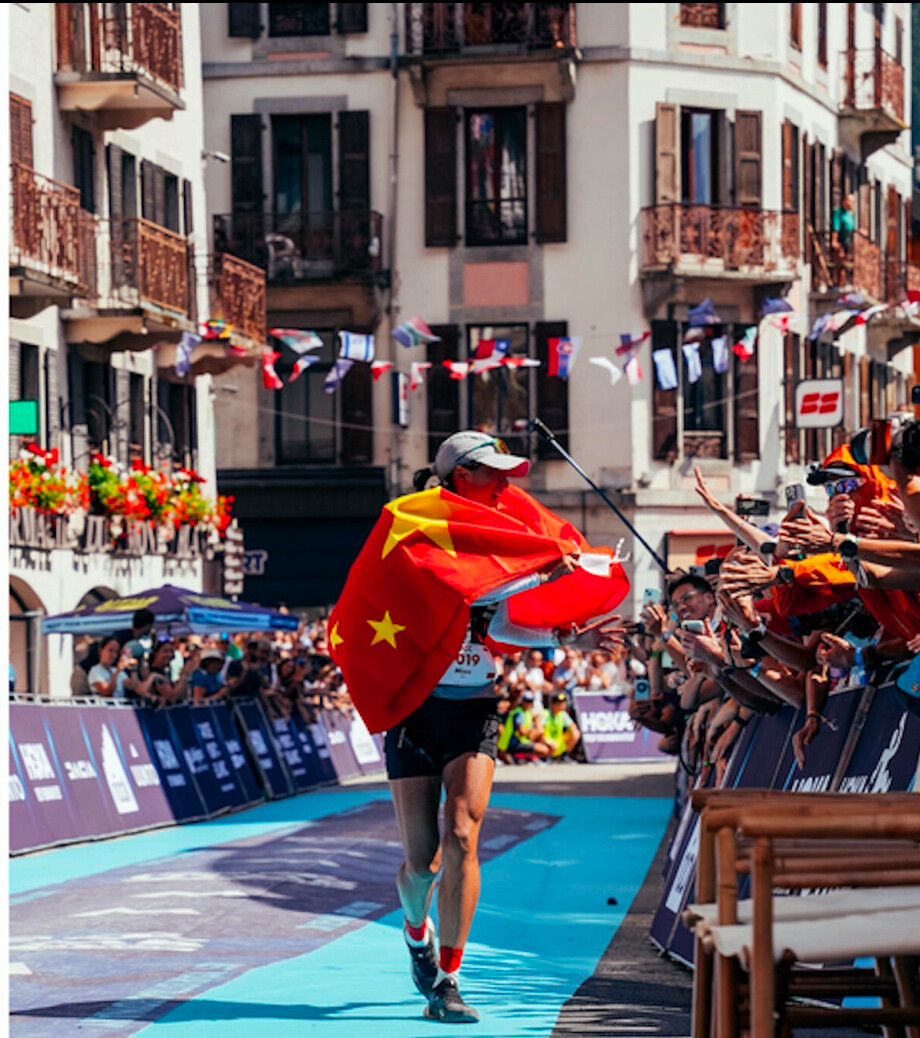
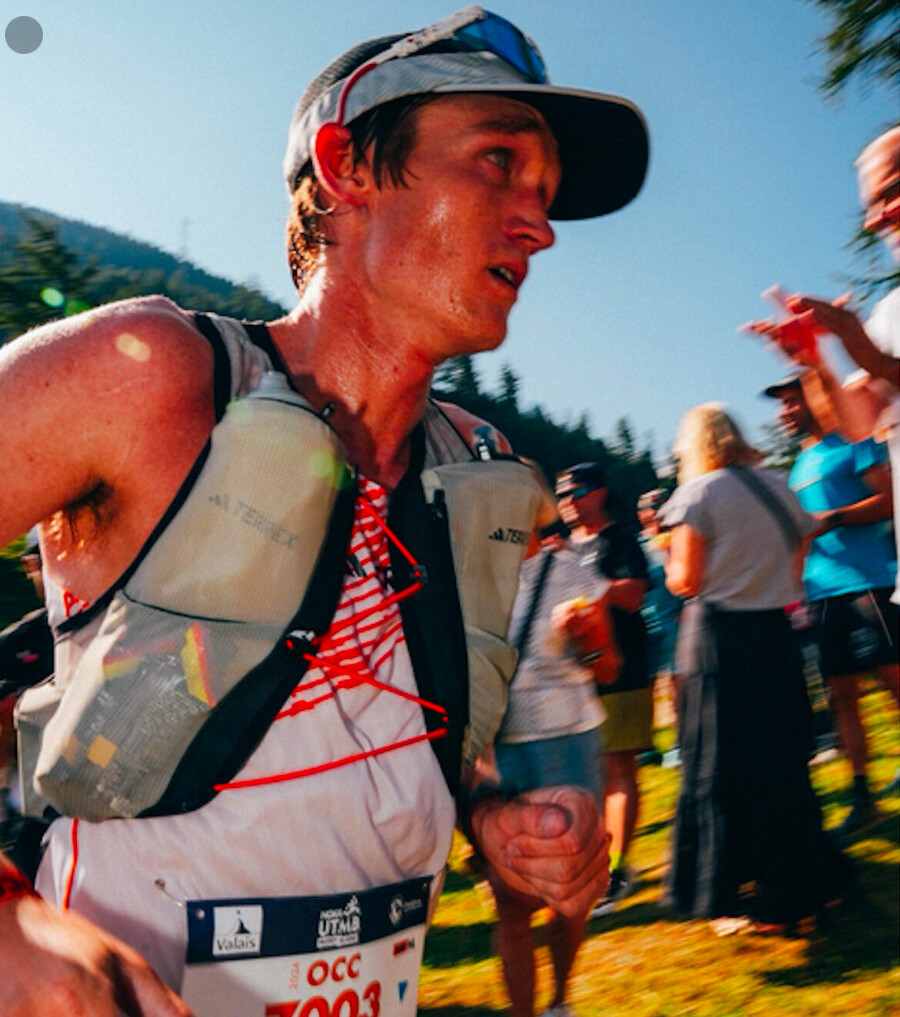
But the race was a dastardly tilt, and Hemming had to turn himself inside out to get the win. It figured to be a grueling battle, both because of the 11,500 feet of elevation gain and descent but also because of the strong field of international runners and hot, humid weather with sunny skies soaring into the 80s under the early afternoon sun. Hemming went out hard early in the race, but he didn’t feel compelled to challenge for the lead up the first two climbs over the first 9 miles. That’s because fellow American Christian Allen was absolutely flying off the front, as the 26-year-old runner from Orem, Utah, surged to the lead from the gun and led by more than 2 minutes through the 15-mile mark as he passed through Swiss the village of Trient. But that’s where the runners faced the toughest test of the race, a spikey 4-mile, 2,300-foot technical climb to the Chalet des Grands before continuing upward on slightly less steep terrain to the Col de Balme mountain pass. In all, it’s a 3,000-foot ascent over about 6 miles to the 7,200-foot high point on the course.
That was the first crux of the race, and that’s where Hemming took charge. As Allen faded, Hemming surged up the big climb as several other speedy runners gave chase, including Swiss runner Remi Bonnet who is known for his uphill running abilities. But Hemming had been waiting for this all year and specifically trained on long mountain ascents near Breckenridge, Colorado. He continued to surge across the Swiss-French border and up to the pass, building a nearly 7-minute lead over Spanish runner Antonio Martinez Perez.
From there, Hemming extended his lead to 10 minutes on the 7-mile, 3,000-foot descent to the French village of Argentière. But with one more big climb—a 3.5-mile, 2,000-foot technical grind to 6,200 feet atop the ski resort—he was anything but home free. Early in the climb, he slowed from a run to a walk, and even stopped at one point midway through the climb, bent over and rested his hands on his knees. He looked in distress, but eventually gathered himself and started running slowly up the hill again.
Perez had been charging up the mountain behind him and there was a brief moment where it looked like Hemming’s lead might be in jeopardy. But he managed to reach the final checkpoint at the 50K La Flégère aid station in first, and immediately looked better as he began the 4-mile descent down to Chamonix. Although he had gained ground, Perez felt the impact of the climb, too, and was caught by Italian runner Francesco Puppi before reaching the ski resort aid station. After a cordial acknowledgement as he passed, Puppi suddenly had a new spring in his step. He surged up the final 200 meters to reach the checkpoint about 4 minutes after Hemming then began bombing down the rocky, rooty dirt trail in pursuit of the leader.
Up front, Hemming had recovered slightly, running smoothly albeit without the intensity of a couple hours earlier. Puppi was clearly running faster. What had been a 10-minute lead at the 28.2-mile mark had greatly diminished with less than 3 miles to go. But with every stride, Hemming was one step closer to his year-long goal of winning OCC and he wasn’t going to let it slip away.
When he reached the edge of the Chamonix pedestrian village, he was quickly re-energized by the throngs of cheering spectators and increased his pace briefly as he dashed through the winding 200-meter section before slowly slightly on the final blue-carpeted approach to the finish line.
“I was trying to pace it as well as I could, and I knew if I made it over Col de Balme with a good gap, unless I blow up—which I did a little bit—I knew I could hold up pretty well to the end,” Hemming said. “It ended up being a bit of a grind. I knew I had about a 10-minute lead at Argentière, but I was very much overheated and the walls started closing in a bit. I tried to take a little time to cool down, but I knew I had to keep moving and just make it to the top.”
Still running hard, Puppi dashed through the village three minutes later to finish second in 5:14:46, followed by Perez in third at 5:17:56, China’s Juwei Zi in fourth (5:22:17), and Aritz Egea Caceres in 5th (5:27:07). Nick Handel, a 32-year-old runner from San Francisco, was the second American runner in the men’s race, finishing 13th in 5:41:08. The victory is the first big international win for Hemming, who transitioned into trail running in 2021 after several years as a professional triathlete. Hemming has won several domestic 50K races in the US, including the Canyons Endurance Runs 50K on April 26 in Auburn, California. Last year, he placed second to Bonnet in the Mont-Blanc Marathon and also finished fifth in the Golden Trail World Series Final 20K championship in Noli, Italy. For a while, it looked like Hemming, and his 27–year-old wife, Tabor, might be on the verge of one of the best trail running stories of the year. They decided to part ways with sponsor Salomon, in the offseason, and sign with the Adidas-Terrex team at the start of the year. While they both raced well early in the season—Tabor took third at the Canyons 50K in April and third at the Broken Arrow Skyrace 25K in June—they opted not to race as much this year as they’ve been known to. They also decided not to join their new teammates at an extended Chamonix training camp in late July and instead stay home and train at high-altitude in central Colorado.
Knowing what they’d be facing on the course, they sought out long climbs near Breckenridge and Frisco that topped out between 12,000 and 13,000 feet—including Wheeler Pass between Copper Mountain ski resort and the community of Blue River. “The course is fast and steep, but it’s also very runnable,” Tabor said. “We knew we could get quality training at home, so we used those climbs to train, so we were happy to stay at home and run the places we know best.”
Tabor looked great early in the race, running with a strong pack of lead women that included Judith Wyder of Switzerland, Clementine Geoffray of France, and Miao Yao of China, plus Spain’s Sara Alonso, New Zealand’s Caitlin Fielder, and fellow Americans Dani Moreno and Allie McLaughlin.
Wyder was the early leader and figured to be tough to beat—despite a recent bout of COVID. She had earned the silver medal in the 50K race at last year’s World Mountain and Trail Running Championships in Austria, and more recently took second in the 20K mountain running race at the European Championships and first at the Mont-Blanc Marathon in early July. Wyder led Geoffray, Moreno, McLaughlin, and Yao through the initial 4.5-mile climb to Champex, then expanded her lead to the top of the second climb at the 6,200-foot summit of La Giete as Yao and Alonso maneuvered into the second and third spots. But following a similar strategy as her husband, Tabor took the lead on the long downhill into Trient and began to surge on the technical climb up to Chalet des Grands with Yao, Wyder, Alonso and McLaughlin in tow. Hemming ran in the lead for part of the climb, but she paid for the aggressive move. Wyder and Yao overtook her and those two separated from the rest of the field. They dueled back and forth but Yao took the lead over Col de Balme and would never relinquish it. She seemed to get stronger as the race went on and she extended the gap on Wyder to 4 minutes at La Flégère ski resort.
From there, Yao cruised into Chamonix to secure the first win by a Chinese athlete at OCC in 5:54:03. With a 2018 CCC win already under her belt, she also enters the rarified air of having two UTMB World Series Finals championship titles to her name. Wyder was second in 6:00:05, followed by Geoffray in third at 6:02:10, Alonso in fourth (6:05:15), and Fielder in fifth (6:05:46). Moreno, who was third in the OCC in 2022 and dropped out last year, ran a strong second half to finish sixth as the top American in 6:06:59. Tabor Hemming continued up and over Col de Balme but slowed significantly and eventually dropped out at Argentière.
“I’m really happy about my race. It was really fun out there to compete with such strong ladies,” Wyder said, “Miao Yao was flying in the end. I’m so proud of myself to be back and to be able to be racing healthy. I didn’t think about [having COVID recently]. Today I was really happy with my performance and with my legs today.”
(09/01/2024) ⚡AMPVivian Cheruiyot confirms next stop with eyes on victory
The four-time world champion has confirmed where she will run next after her third-place finish at the Paris Marathon in April.
Vivian Cheruiyot has confirmed her next race after her third-place finish at the Paris Marathon in April.
Cheruiyot will race at the AJ Bell Great North Run scheduled for September 8 where she will line up against tough opponents including Eilish McColgan.
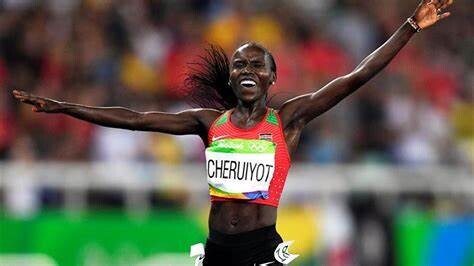
Cheruiyot has raced three times this season, opening her season in Paris and proceeding to the National Cross-Country championships where she finished 16th before racing at the Kilimanjaro Half Marathon where she finished second.
On her part, McColgan holds the British records on the roads at 5km, 10km, 10 miles and half-marathon and has won other Great Run events and in 2021 finished runner-up to Hellen Obiri at the Great North Run.
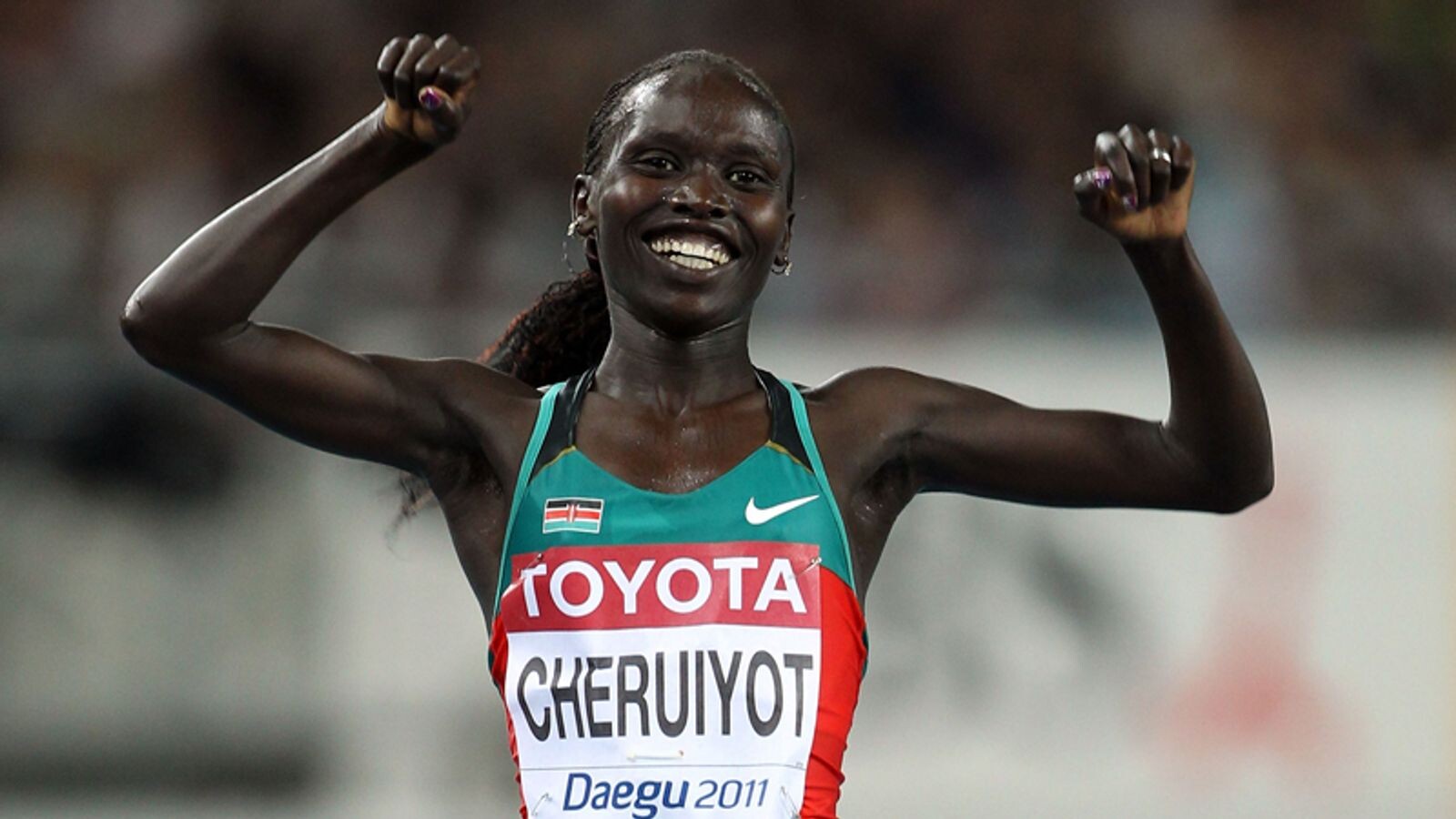
An injury set her back at the Paris Olympic Games but is expected to bounce back at the Big Half in London on September 1 before heading to the Great North Run and then the Vitality London 10,000 on the roads of London.
Another challenger will be Sheila Chepkirui who was third behind McColgan at the 2022 Commonwealth Games in the 10,000m.
The Ethiopian charge will be led by Senbere Teferi, the former women-only 5km world record-holder with Mergetu Alemu also in the mix. British-based Kenyan Mary Ngugi-Cooper will also be competing at the event.
The men’s race will be headlined by Marc Scott who will try to reclaim the title he won in 2021. He faces a stern test from Berihu Aregawi, the Ethiopian who won the Olympic 10,000m silver.
Aregawi is a formidable opponent since he also went No.3 on the world all-time rankings for 3000m behind Jakob Ingebrigtsen’s world record in Poland.
Sisay Lemma, 2023 Boston Marathon winner Evans Chebet and Kenya’s NYC Half winner from earlier this year, Abel Kipchumba will also be in the mix.
(08/31/2024) ⚡AMPby Abigael Wafula
Great North Run
Great North Run founder Brendan Foster believes Britain is ready to welcome the world with open arms after the launch of the event's most ambitious plan to date. The Great World Run campaign seeks to recruit one runner from every country in the United Nations – 193 in total – to take part in the iconic half marathon in...
more...

